

Level 24/44 Market St, Sydney 2000 • GPO Box 108, Sydney 2001 • Ph: 18000 15 8 47 • email: info@indianlink.com.au Indian Link Radio 24/7 on the net Log on to www.indianlink.com.au Indian Link 24/7 Radio 18000 15 8 47 FREE Vol. 17 No. 9 (2) • June (2) 2010 • www.indianlink.com.au • Estd: 1994 FORTNIGHTLY Published Sydney • Melbourne • Adelaide • Brisbane • Perth Meet the young women in Sydney’s Indian community Smart, savvy, sensible and successful

2 <> JUNE (2) 2010 INDIAN LINK




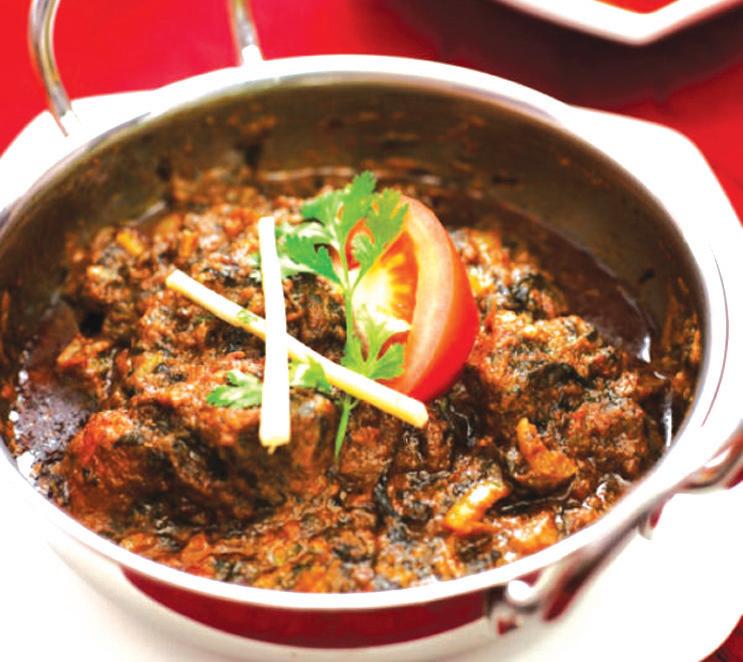


JUNE (2) 2010 <> 3 NATIONAL EDITION Spices Thousand simply indian Tuesday to Sunday - Lunch to dinner For catering, special occasions call Amit 0401 266 140 23 The Crescent, Homebush, NSW 2140 www. thousandspices.com.au Ph 02 9746 1144 Also visit our new take-away my Indian Dining Court, Chatswood Chase Shopping Centre, 345 Victoria Avenue, Chatswood. Restaurant quality food at take-away prices Honest Indian food at honest prices Come and enjoy the real taste of India Now also open for Sunday Lunch

INDIAN LINK
PUBLISHER
Pawan Luthra
EDITOR

Rajni Anand Luthra ASSISTANT EDITOR
Sheryl Dixit CONTRIBUTORS
Mamta Sharma, Darshak Mehta, Neelam Vasudevan, Shivangi Ambani-Gandhi, Priyanka Rao, Usha Arvind, Malli Iyer, Farzana Shakir, Preeti Kannan, Noel G deSouza, Sukrit Sabhlok, Sunil Ranadive, Aparna Jacob, Saroja Srinivasan, Graham Sims, Priya Nair
ADVERTISING MANAGER
Vivek Trivedi
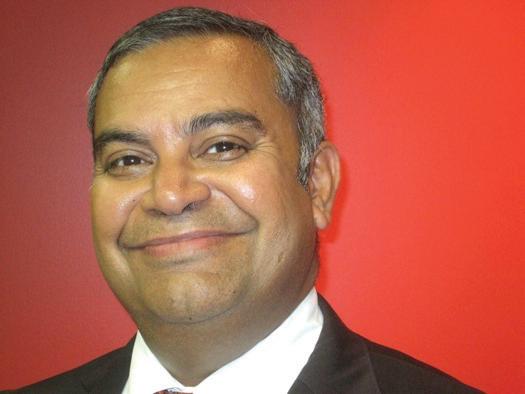
02 9262 1766
ADVERTISING ASSISTANT
Priti Sharma
02 9279 2004
GRAPHIC DESIGN AND LAYOUT
Darren Monaghan
Indian Link is a fortnightly newspaper published in English. No material, including advertisements designed by Indian Link, maybe reproduced in part or in whole without the written consent of the editor. Opinions carried in Indian Link are those of the writers and not necessarily endorsed by Indian Link. All correspondence should be addressed to Indian Link
Level 24/44 Market St, Sydney 2000 or GPO Box 108, Sydney 2001
Ph: 02 9279-2004 Fax: 02 9279-2005
Email: info@indianlink.com.au
Visa capping: International students’ worst nightmare
Minister Chris Evans could have the power to effectively order potential migration applications to be declared null and void if the Migration Amendment (Visa Capping) Bill is passed. This means that applicants will not be given a chance to appeal this decision and will have to leave the country within 28 days. With the Coalition remaining quiet on this and a minimal fuss from the Greens, chances of this becoming law are strong. Those most affected are potential migrants, a number of whom are students who may have studied in Australia for over two years. They have contributed thousands of dollars to the Australian economy, been model guests in this country and, in the future, could do Australia proud.
But now they’re becoming victims this game of politics masterminded by the Labor government which has been caught flat footed from the events in the student community since the past year. It is a transparent tactic of the Labor government, seeking to deflect focus from its refugee policies. It is easier to lay blame for the expansion of the student and migration market on the Howard government, rather than work to capture this special resource of talent already existing in the country. Caught within this political crossfire are the hopes and aspirations of thousands who have been waiting for over two years to have their visa applications processed and who now may have jobs, partners, children
BY PAWAN LUTHRA
and other assets. They may have to abandon all this, as the possibility of being thrown out of the country within 28 days of Minister Evans decision imminently looms.
The Migration Amendment (Visa Capping) Bill 2010 would enable the minister to cap the number of visas issued in a given year to applicants with “specified characteristics.” This could include chefs or hairdressers or any other occupation. Once the designated annual cap is reached –which could conceivably be set at zero – all outstanding visa applications with the same characteristics will be terminated. So its wasted dollars for someone who has spent thousands in getting their health checks, skills assessed and qualifications recognised. Yes, the visa application fee will be refunded, but all other costs will be borne by the applicant. This does not include the cost of education which the applicant may have embarked upon in Australia with a dream of applying for residence based on the general intent of the laws at that time.

What the Labor government is doing isn’t wrong, but the sentiment is indeed immoral.
As depicted in the famous Australian
movie, The Castle, Daryl Kerrigan fought a property development company which wanted to acquire his house to extend the airport. In the climax, the barrister representing Kerrigan said that it was not a house which the property developer was acquiring; it was a home of dreams and memories. Similarly, a migration application can be terminated abruptly and without notice, but it is at the priceless cost of destroying the dreams and ambitions of thousands of potential migrants. It is a heartrending sight and their despair is palpable.
Now is the time for community leaders to speak up and fight for the rights of these students. Public statements and petitions have been made by well intentioned individuals; but it is time that our Indian associations take this cause forward, in a test of true and vocal leadership. Visa capping in its current form is wrong and this message needs to be sent, loud and clear, to Canberra and the Rudd government.
JUNE (2) 2010 <> 5 NATIONAL EDITION
www.indianlink.com.au EDITORIAL
What’s On
Sydney Kannada Sangha’s HasyaSangeethaUtsava
26 June Sunita S (playback singer Ello jogoappa fame) and Mysore Anand (stand up comedian) are the performing artists.
6.30pm sharp at Sydney Baha’i Centre, 107, Derby Street Silverwater Sydney. Details Mrs Smitha Karki 0410 346 127.

Chinmaya Mission events
30 June 60th birthday celebration of H.H. Swami Tejomayananda, 7.30pm - 9.00pm at Chinmaya Sannidhi Ashram
2-10 July Queensland tour by Br Gopalji. Program includes Children’s Camp (Rama Rules), Retreat for the ladies (Balancing Life), Workshop for Teenagers (Hero or Zero), Home Satsangs, Talks at Griffith University for Philosophy Students, Talks at the Theosophical Society
14-15 July Children’s holiday camp
Ayyappan Swami: Lord of Sabari Hills
Chinmaya Sannidhi Ashram, 38 Carrington Road, Castle Hill. Camp
Acharyas: Brni Sujata Chaitanya and Br Gopal Chaitanya.
16-17 July Youth mini residential camp
Face it! Make it! with Br Gopal Chaitanya, for 17 – 35 year age-group. Venue
Chinmaya Sannidhi Ashram.
25 July Guru Poornima Gratitude and Remembrance of Guru 10.00am to 11.30am at Chinmaya Sannidhi Ashram
30-31 July Ladies residential retreat The Gita Guide to Life with Br Gopal Chaitanya at Chinmaya Sannidhi Ashram. Details visit www.chinmaya.com.au or call 02 8850 7400
29 August The story of Swami Chinmayananda, the inspiration behind the Chinmaya Mission. 5pm onwards at
Greenhalgh Theatre, UTS Ku-ring-gai, Linfield. For bookings and details contact Rahul on 0402 587 579
Information Session on Community Care
2 July Sydney Multicultural Community Services are organising an information session on Community Care for Fiji Indian (Hindi) communities in Strathfield Main Library, 2:30pm-4:30pm. The session will aim to help seniors stay in their homes independently and comfortably for as long as possible. On the day, you may ask questions regarding available services and community care from our expert team. Light refreshments will be provided. The Strathfield Main Library is located at 6567 Rochester Street Homebush. Details Maryam Maghsoodi 02 9663 3922, email maryamm@sydneymcs.org.au
Brahmotsavam Festival
3 July In aid of Brahmotsavam Festival, Sri Venkateswara Temple proudly presents Adharam Madhuram a Bharathanatyam Ballet by Manjula Viswanath and the Rasika Dance Academy. It is a popular classical dance program depicting the love of Lord Krishna. 6.30pm at Bankstown Town Hall. Details Devi 02 9706 7354
Sakhi Sangam

25 July Sydney Sakhi Sangam will be held at the Croatian Club, 921 Punchbowl Rd (Cnr Canterbury Rd), Punchbowl. Details Nandini Thadani 02 9181 2204, Sushma Ahluwalia 02 9894 0070.

Upanishad classes
Weekends June and July SVT Vidyalaya resumes its Upanishad Course taught by Sri Vasudevacharya. Venue Darcy Road Public School, Darcy Road, Wentworthville. Details Kumar 0407 108 372 or Shobana 0422 732 907.
Rasa Duende
4 July Rasa Duende is a collaboration between internationally acclaimed musicians Bobby Singh (Tabla) Adrian McNeil (Sarod) and Damian Wright (Flamenco Guitar). Their work is a fusion of two different musical traditions, Indian classical and folk music and the songs, dances and rhythms of Flamenco.5-7pm at Macquarie Uni. Details at info@qirkz. com
Amnesty International to launch Parramatta Group in World Refugee Week
A new Amnesty International Parramatta group will come together for the first time on Thursday 24 June, during World Refugee Week.
The Parramatta action group hopes to embrace the growing diversity and multiculturalism in the area and welcomes all local residents to its first meeting. The action group will invite people to sign a petition calling on the Australian Government to end the discriminatory suspension on the processing of asylum applications by Afghans and Sri Lankans. The petition also calls on all political parties to deal more humanely with asylum seekers who come to Australia. The new Parramatta group will bring to almost 30 the Amnesty International
Action Groups throughout NSW that meet, organise events and mobilise support around human rights campaigns. Action Groups make an invaluable contribution to Amnesty International’s work protecting and defending human rights around the world.
To learn more about the Parramatta action group, contact Ruby Johnson at ruby_johnson@amnesty.org.au
Bilingual help to take medications correctly now available in Tamil and English
Pharmacists are now able to provide further support to patients with low English proficiency by offering them translated information on medication adherence aids. Known as Multi-Lingual Webster-paks, these have medication information in English and a second language appear side by side.
The Webster-pak consists of days of the week listed down the pack and meal times across the pack. Each compartment is filled by the pharmacist with your exact medications (2, 3, or 4 tablets as prescribed) - down to a half or quarter of a tablet. All you have to do is pop the compartment and know you’re taking the right medications at the right time. At the top of the pack is your photo and a list of all your medications and dosages. This is vital if perhaps there is an unfortunate incident, so when an ambulance is called the paramedics can see straight-away what medications you have been taking.
Ask your local pharmacist for this facility.
6 <> JUNE (2) 2010 INDIAN LINK
BEST TIMBER FLOORING Lic No: 206453C Specialist in timber flooring & supply installation • Laminate (variety choices) • Engineering • Floating • Solid pre-finished & Raw • Warehouse Direct to public • Satisfaction guarantee • Free quotes Showroom: 1/42 Harp Street Belmore NSW 2192 TEL: 02-9787 5630 MOB: 0425-249 877 (Raymond) BEST PRICE GREAT REPUTATION FINANCIAL YEAR SALE Huge discount on brand new and second hand pianos! . Limited quantities! Please grab your chance Brand new pianos for second hand price. Second hand pianos for cost price Kawai Upright K3 K35 K5 K6 K8 Yamaha CLP130 $1480 Grand Piano GM10 GM12 RX2 RX3 RX7 Kawai upright $1780 Digital Piano $990 Lagonda $380 Yamaha Upright professional from$4990 Belea Patent $680 Yamaha U1 U2 U3 from $2000-$3000 "KAWAI BRAND NEW K-3 FROM $38.5 PER WEEK"
Time: 7:00-8:30pm
Date: 20/07 ( Tuesday night )
Venue: Burwood RSL Club 96 Shaftesbury Rd, Burwood NSW 2134

BIRYANI AND PARANTHA WEEKENDS

…Beat the chill, come in for hot paranthas and biryani
VEGETARIAN PARATHAS
Poodina Paratha
Methi Paneer Paratha
Palak Paratha
Aloo Paratha
Methi aloo Paratha
Oriental style stir fry
paratha Mushroom and pea paratha
Stuffed vegetable and cheese Paratha
Paneer Paratha
Methi Paratha
Mooli Paratha
Gobi Paratha
Garlic stuffed mali
Paratha
Masala rajhama Paratha
Mattar Paratha

EXCLUSIVE FOR SOME
Nashe Ka Paratha
NON-VEGETARIAN PARATHAS

Keema Paratha
Chicken Paratha
Egg Paratha
DESSERT PARATHAS
Shakkar Paratha
Chinni Paratha
VEGETARIAN BIRYANI

Mixed vegetable
Kaju ki Biryani
Soya Nuggets-Mushroom
Egg Plant (Baingan)
Plus More
NON VEGATARIAN BIRYANI
Hydrabadi Mutton
Lucknowi Chicken
Kashmiri
Afgani Fish
All these and our normal menu, all weekend at
JUNE (2) 2010 <> 7 NATIONAL EDITION
STREET BLACKTOWN PHONE: 9671 7820
139 STEPHEN
Quality Quantity Service



8 <> JUNE (2) 2010 INDIAN LINK
3 Cobham Street, Kings Park, NSW 2148







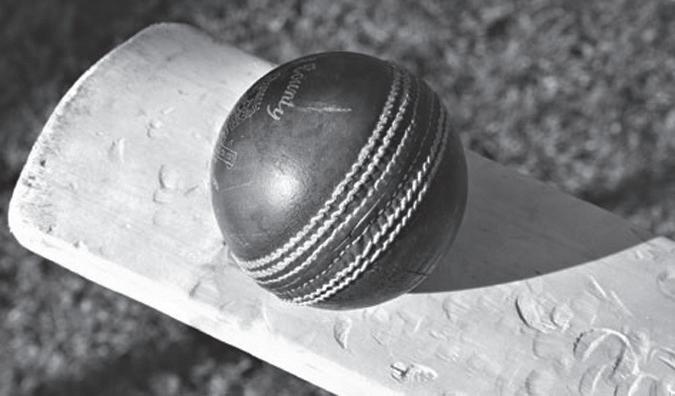





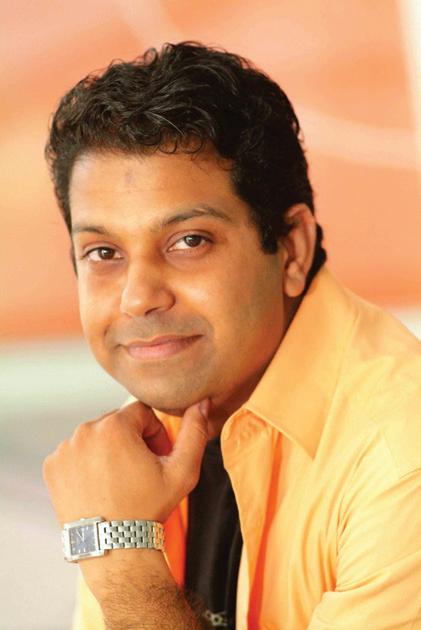

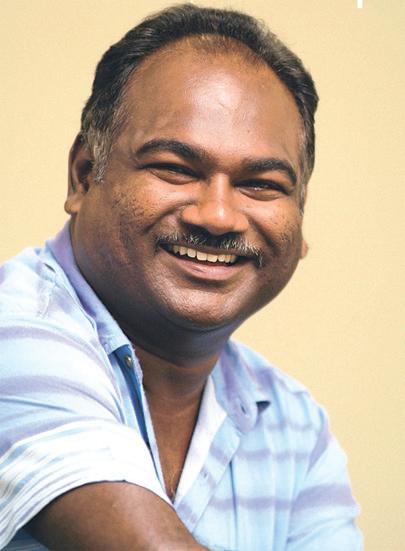
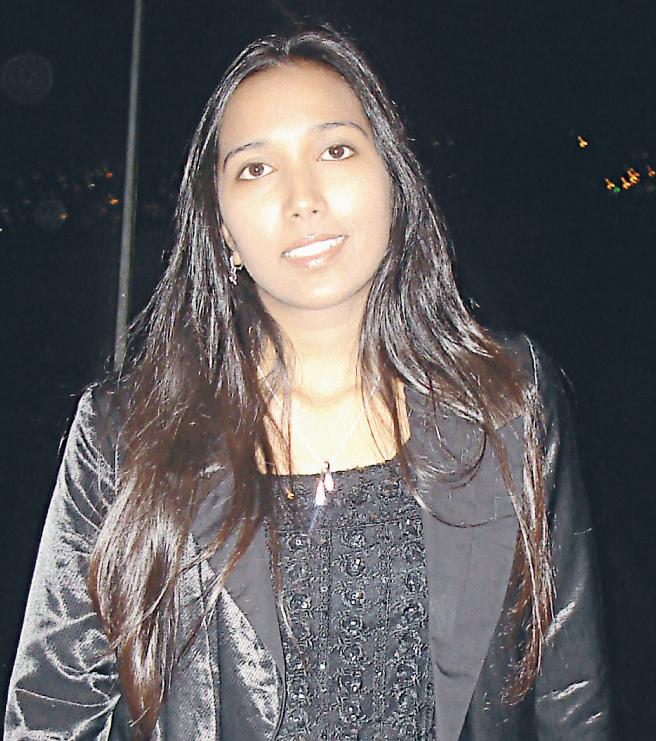

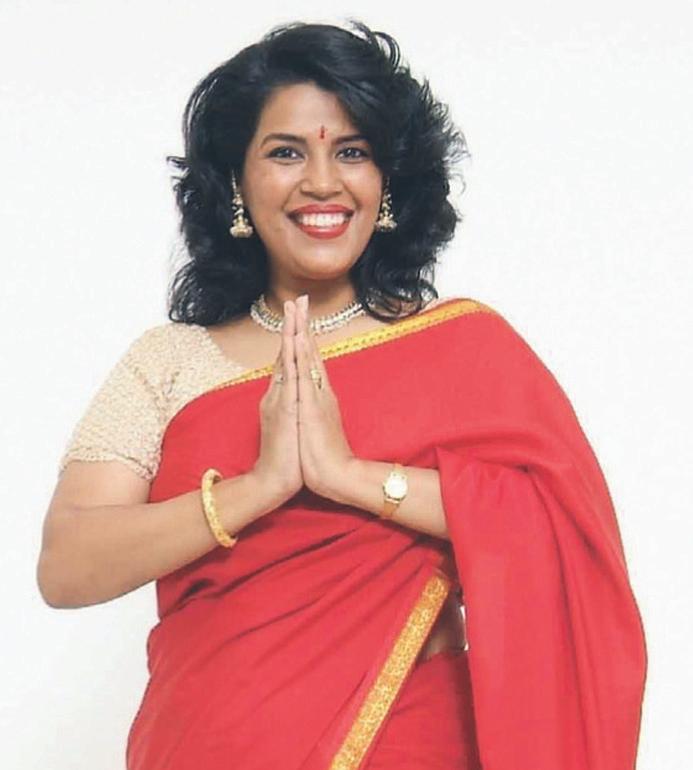

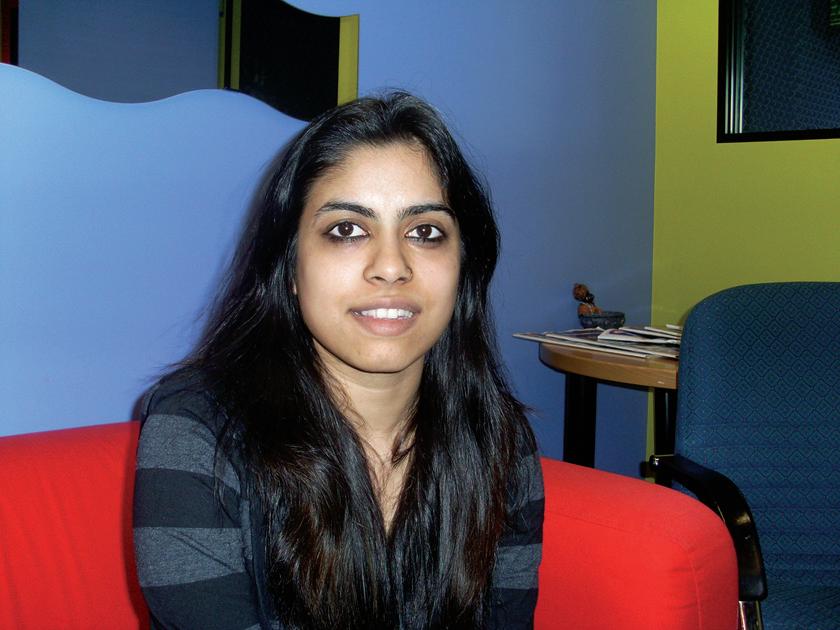

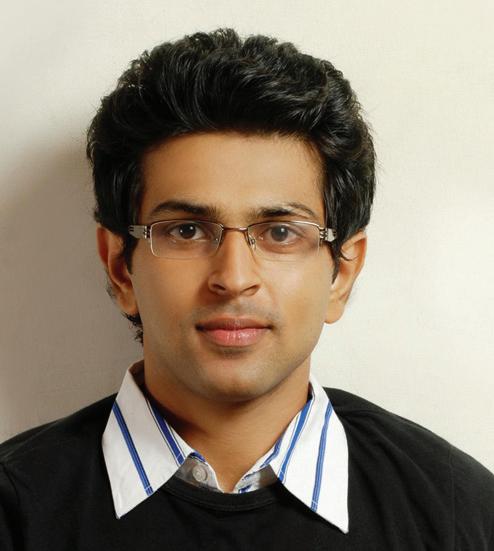
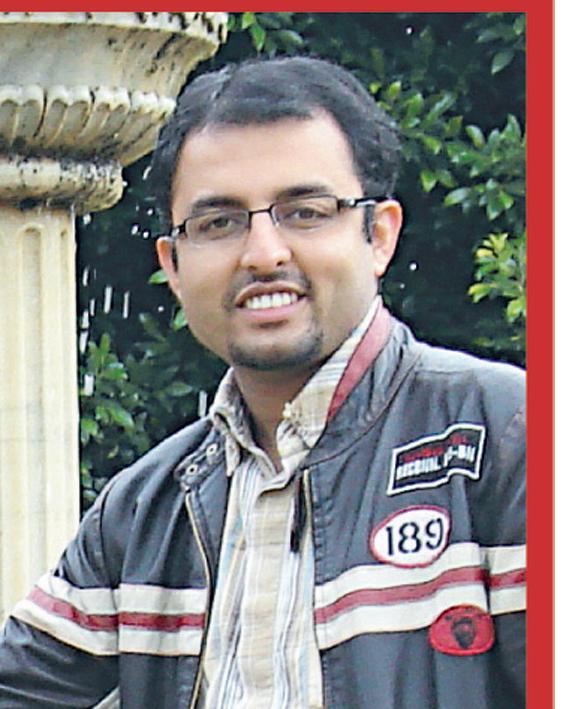
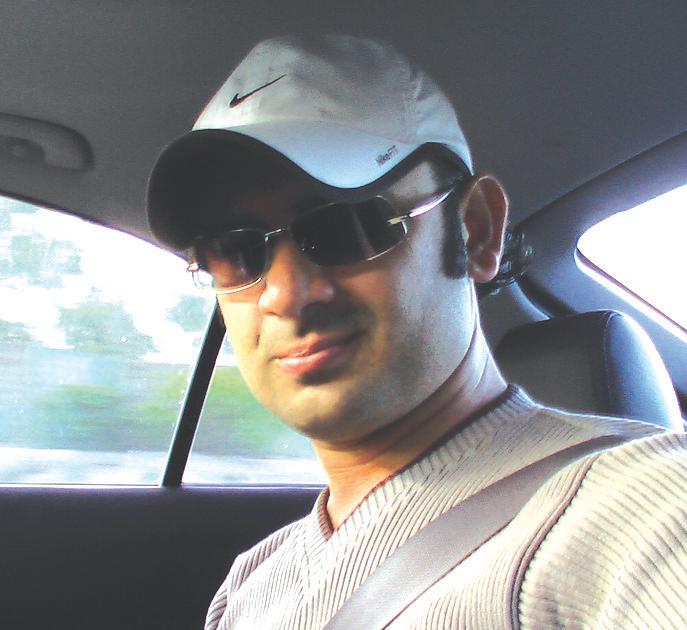
JUNE (2) 2010 <> 9 NATIONAL EDITION Subscribe to Indian Link Radio for $9.95 each month. 24 hours, 7 days Indian Link Radio * Conditions apply: Minimum 12 months subcription, $50.00 refundable deposit YOUR PRESENTERS ON INDIAN LINK RADIO TALK BACK BBC NEWS UPDATE BOLLYWOOD TOP 10 DEAL WITH WHEELS COMMUNITY NEWS HEALTHY & WEALTHY TRAVEL TIME JUST CHILL 24/7 INDIAN RADIO IN AUSTRALIA
new migration rules shouldn’t have retrospective effect’
India has noted to Australia that the proposed changes in their migration rules should not be retrospective in effect.
Overseas Indian Affairs Minister Vayalar Ravi, who was on a five-day tour to Australia recently, made this demand during meetings with Australian leaders.

“Since there is a large number of affected Indian population, especially the students who had come under the previous immigration rules in Australia, the Indian government will be trying to seek appropriate transitional arrangements as part of this new policy,” the overseas Indian affairs ministry said in a statement.

Ravi held high level meetings on various issues and interests concerning the Indian diaspora with Australian leaders like Simon Crean (Minister for Trade), Senator Chris Evans (Minister for Immigration and Citizenship), Stephen Smith (Foreign Minister) and Martin Ferguson (Minister for
Resources, Energy and Tourism). The meetings hold significance in view of the recent proposed changes in Australia’s migration rules.
“During his meetings, Ravi has impressed upon the Australian side that these proposed changes should be effected prospectively and not have retrospective effect,” the statement said.
The minister also held meetings with the leaders of the Indian community, various associations and Indian diaspora.
“His visit to Australia is aimed at building confidence of the Indian community and as a follow up of the assurances of the Australian government,” the statement said.
Ravi also visited New Zealand for two days to have interactions with the Indian community there.

‘Power’ brokers in talks
If Australia desires, India will be happy to take the nuclear relationship forward.
That was the message India’s Union Minister of Power Sushil Kumar Shinde sent out while visiting Australia recently.
Speaking on the possibility of any collaboration/joint project with Australia in the field of nuclear technology, he said if Australia desires India sure will be happy to enter into such collaboration.
Taking time out from his busy schedule, the minister made it a point to meet and interact with the Indian community in Sydney on June 12 at Hotel Shangri La.
He was accompanied by the Indian High Commissioner in Australia Sujatha Singh and Consul General of India (Sydney) Amit Dasgupta.
The minister shared with the Indian community highlights of the meetings with the Australian ministers and answered their queries on power and energy in India.
He said he had met Australian Minister for Energy, Resources and Tourism, Martin Ferguson, in Canberra and discussed with him strategic long time co-operation in the energy sector.
“We have got very good response from Australia as far as collaboration between the two countries is concerned in the power sector,” Mr
Shinde noted.
He also discussed with his Australian counterpart the possibilities of export of liquefied natural gas from Australia to India.
When asked why India is looking for LNG from Australia and not the Gulf countries from where it could be cheaper and easier to avail, he said India is already in contract with Qatar but in the present competitive world, there is no harm in getting good and cheaper fuel from other countries as well.
The minister mentioned that since Australia has leading technology in solar energy, India has requested Australia for technological cooperation
in this field as well. India is also keen on enhancing the co-operation and collaboration in the fields of implementation of clean coal technology, solar and geothermal energy.
The minister said that by the year 2020, India will have 20,000 mega watt of electricity generated through solar energy.
“By 2012, every Indian village will be electrified. Very soon the shortage of electricity we go,” he added.
Giving a panoramic view of India’s power sector the minister said, “India is marching at a very rapid pace in the power sector and we have huge opportunities for investments and
technology”. He added that investors from the world over have shown increased confidence in the Indian power sector.
The Indian minister said he had also met Victorian Energy Minister Mr Peter Batchelor and highlighted opportunities for investments in Indian power sector and interest of Indian companies to invest in coal and gas sector in Australia.
The Indian delegation accompanying the Power Minister to Australia included Power Secretary P Uma Shankar, NTPC CMD R S Sharma and Powergrid CMD S K Chaturvedi.
Shifting focus to climate change, Mr Shinde highlighted India’s commitment towards climate change issues. He outlined several initiatives of the Government of India such as the National Solar Mission, under which 20,000 mega watt of capacity through solar energy is to be added by 2020. He also listed various other schemes and reforms in the energy sector.

“Australia has started CO2 capturing and storage. We will try to become a member on research programs on the same,” Mr Shinde said.
The Indian delegation had earlier visited the Global Carbon Capture and Storage Institute (GCCSI) in Canberra.
Mamta Sharma
10 <> JUNE (2) 2010 INDIAN LINK
www.indianlink.com.au INDIA-OZ
‘Australia’s
India’s Union Minister of Power Sushil Kumar Shinde
Overseas Indian Affairs Minister Vayalar Ravi
Tell them you read it in Indian Link, heard it on Indian Link Radio



JUNE (2) 2010 <> 11 NATIONAL EDITION HOME TUTORING @ Low prices Mathematics (Year 7 to 12) Experienced Australian Registered High School Teacher. Comprehensive knowledge of the NSW Maths syllabus. Guarantee to strengthen your Mathematical concepts. Special prices for School holidays Rajat Midha, M. Sc. (Maths), B. Ed. Call 0432 039 969 / 02 976 903 69 (Service Area Hills District, Parramatta, Blacktown)
An early Indian link in Australian life
A spectacular reconstruction of a historical Indian landing warms up a cold night by the harbour
BY RAJNI ANAND LUTHRA
Sydney’s annual winter festival brought us the story of the earliest Indian arrivals on Australian shores.

And no, it wasn’t professionals that arrived here in the early ‘70s when the White Australia policy (correctly known as the Immigration Restriction Act) was abolished. It wasn’t even the cameleers who arrived here in the late 1800s. It was a story that went way back to 1797, when a trading ship named Sydney Cove set sail from Kolkata. Its incredible adventure was retold by 50 performers (including dancers and aerialists), giant pop-ups, dramatic light installations, animation and YouTubestyle projections, even an attempted Bollywood-style tall ship finale with Holi-inspired coloured smoke and fire sculpture love-hearts.
At the centre of it all was an 11-year-old Indian-Australian girl – a descendant of one of the sailors on board, recounting the story for a school
The Indian dances were choreographed by Sharmila Mitra of the Geetanjali School of Dance and Performing Arts.


“I found the story fascinating,” she Indian Link. “And that was the reason why I felt compelled to audition, even though I have a packed calendar for this year.”
The story of the Sydney Cove that began in Sharmila’s native Bengal, appealed at many levels.

“The Sydney Cove was sent out by a British merchant Robert Campbell, after whom Campbell Cove in the Rocks is named. It was carrying kapda (cloth), biscuits and rum from the factories of Kolkata, and some 50 Indian sailors. It ship-wrecked at Tasmania, and the sailors made their way to Eden, up the coast. From there they trekked to Sydney to get help for their stranded mates.”
Sharmila worked closely with Peta Strachan of the Aboriginal dance group Janawi (as well as a Punjabi dance troupe) for the Rocks event.
“There are various aspects of Aboriginal culture that I find I can identify with,” Sharmila observed. “Their story-telling through dance, their sense of community, even their atithi-bhaav (hospitality for guests) are all so familiar. Do you know, in the Sydney Cove story, even though the Aborigines were hostile towards white settlers, they
connected with the Indian survivors who they met in the jungles as they made their way up to Sydney. There is evidence that they shared their food with them, and ensured them safe passage.”
The lead role of the Indian Australian girl was played by Vidushi Sharma, who learns dance at Sharmila’s Geetanjali School. A student of Hornsby Girls High School, the bubbly Vidushi brought in the right mix of innocence and charm as well as tween idealism and fantasizing as she spoke of “my Dadaji” and of “being in love like Edward and Bella” on her YouTube post. In the story as she recounted it, her great great grandfather, the sole Indian survivor of the Sydney Cove tragedy, made it to Sydney and later married an Irishwoman.
“I was really nervous when I went for the auditions in May,” she told Indian Link chirpily. “The filming was ok – we finished it all in one day. The people were really nice and friendly. On the first day of the show, I was nervous again – I had to jump off the boat and skip up the tower. But after that I really enjoyed it. It was freezing cold, but I had lots of fun.”
And of course, she now wants to do more with performing arts.
The soundscape for Fire Water was created by tabla player Bobby Singh who is renowned for his fusion work, and established composer and multiinstrumentalist, Shenzo Gregorio.
The performance was part of a three-day event named The Rocks Fire Water featuring food, music, and night markets based on winter-themed arts and crafts at Campbell Cove, The Rocks. In the distance, the Opera House itself became an art exhibit, more so than it already is, with its sails lit up in spectacular moving colours.
MAINSTREAM www.indianlink.com.au
Invisible India
Although Bollywood is now a global icon of India, it is yet to make an impact at the Sydney Film Festival



org.au, under copy to Ms. Virginia Judge, Minister for the Arts, NSW office@judge. minister.nsw.gov.au.)
BY DARSHAK MEHTA

Out of the 33 movies I saw at the State Theatre in 12 days this month, not one was Indian.
It’s the usual story at the Sydney Film Festival (SFF); they hardly ever feature movies from the most prolific film-making country in the world. The SFF screened 157 movies but I just can’t believe that they couldn’t find even a handful of movies to screen out of the 600 to 800 plus movies made in India every year (three times the number churned out by Hollywood).
A country that boasts of directors of the class of Mrinal Sen, Rituparno Ghosh Adoor Gopalakrishnan, Kumar Shahani, Ketan Mehta, Mani Ratnam, Aamir Khan, Girish Kasaravalli and scores of others, goes ridiculously unrepresented year after year.

Over 100,000 Indians probably call Sydney home and one can safely bet that many readers of this paper would have supported the SFF had they featured a few desi films.
If you feel as strongly about it as I do, feel free to email your thoughts to Ms. Clare Stewart (Director of the SFF c/o info@sff.
The NSW government (and thus you and me, dear reader!) do heavily subsidise the SFF which has now completed 57 years.
And the Indian government needs to wake up to this as well – after all, if it is interested in projecting “soft power” and showcasing India’s great cultural diversity, it should get on the front foot and agitate/facilitate.
Anyway, enough of the rage and ranting!
What were amongst the better ones in my 33? Here are what I consider as the best four and I am certain they will be released here soon, so don’t miss the chance to view them:
1 Heartbeats is by 21 year old Canadian prodigy Xavier Dolan, and in just his second


movie, promises to have the film world at his feet. The Jan Chapman led international jury voted it as the best of the 12 movies in the competition category. It brought a special smile to my face as I had been tipping it from the minute it screened. Run - don’t walk, to see this edgy, quirky, stylistic movie about unrequited love.
2 The Most Dangerous Man in America is the riveting story of Daniel Ellsberg who leaked the Pentagon Papers in the 1970s, and hastened the end of the Vietnam War.

3 Wasted on the Young is by Australian Ben Lucas, who has made a disturbing first movie - without an adult in sight. It is not a horror movie, but, if you are the parent of a teenager, you will be horrified.…..
4 The Killer Inside Me is Michael Winterbottom’s gritty new movie based on Jim Thompson’s uncompromising 1950s crime novel. The violence is upsetting and the theme misogynistic, but don’t miss it on those grounds! Casey Affleck’s chilling portrayal of a sociopath deputy sheriff in a small Texan town is bound to win him kudos.
After spending up to 10 hours a day in a dark theatre one does have withdrawal symptoms, but the upside is one feels a lot more upbeat and light hearted – nothing depressing, confronting or challenging to worry about all day.
So let’s hope your indignant emails do the trick and in next year’s selection we may see some incredible Indian movies.
JUNE (2) 2010 <> 13 NATIONAL EDITION
www.indianlink.com.au MAINSTREAM
Heartbeats
The Most Dangerous Man in America
Wasted on the Young
The Killer Inside Me
Sonam Kapur and cosmetic surgery, on Indian Link Radio

 BY NEELAM VASUDEVAN
BY NEELAM VASUDEVAN
Dinner vouchers, phone cards, movie tickets to Kites, Rajneeti, Ravana and now a cash prize of $200….this is just a snapshot of what Indian Link Radio subscribers have been scoring in the past few days.
This fortnight, listeners were treated to a heart-to-heart with Bollywood sweetie Sonam Kapoor, he-man Arjun Rampal, thespian Manoj Bajpai…all of them loving the opportunity to reach out to their fans and friends in Australia through Indian Link radio. Radio host Priyanka talked to director’s dream Manoj Bajpai just before the release of his film Raajneeti. Arjun Rampal was full of humour when he spoke about his own role in the same movie, with our host Anamika Anamika got the opportunity also to speak with style diva Sonam Kapoor as she worked on her forthcoming movie I Hate Love Stories on location in New Zealand.


For those of you still new to the concept of Indian Link, we are a subscriber based radio running 24/7 in Sydney and Melbourne. We broadcast Hindi based music, masti, news
and entertainment LIVE from the heart of Sydney.
Our live shows commence at 7am with Subah Subah - a program that brings to you the latest news and happenings from Australia, India and around the world. While you get ready for work our amazing morning anchors bring to you the daily traffic and transport updates to kick start your day.
Breaking for BBC Hindi news from 9-10am, we bring to you a comprehensive coverage of news from India of the day gone by.
Our midmorning live show Salaam Namaste is geared up with lifestyle topics, making it a lively and interesting segment. Here is where you listen to Australian media spokespersons as they share with you only the latest and the most happening news and events.
Just recently we were joined on air by Tiffany Tran who is a Settlement Grants Program Worker. She discussed with host Shraddha, the migrant experience of social isolation or need for more help, the support services for new migrants provided by community organisations such as ECHO Neighbourhood Centre.

Triggering off a finding about how women feel about their looks after giving birth, The Victorian Cosmetic Institute’s Gavin Chan was on air to tell us how more and more younger women are opting for cosmetic
treatments that are available for mothers who would rather not go under the knife
The Creative Producer for Sydney Harbour Foreshore Authority Michael Cohen joined hosts Sagar and Shraddha to talk about the Bollywood spectacular in Sydney, Fire Water which was a part of the annual winter festival Vivid Sydney (27 May-21 June), a festival of music, light and ideas, featuring the spectacular illumination of the Sydney Opera House sails.
For all the foodies, the Mayor of the City of Canterbury, Cr Robert Furolo MP, was on air to tell us more about the Campsie Food Festival. More than 16,000 food lovers converged on Beamish Street for the annual Campsie Food Festival.
Afternoon bonanza on the radio, between 12 noon and 5pm, you have no doubt been sampling the great quality of melodious music in the past few weeks. No matter what mood you are in, Neelam seems to sense it as she belts out music of very genre just for your entertainment.
Evening show Meter
Down on weekdays from 5-9pm catches you sipping your evening chai and hot samosas!!! From current affairs, box office hits and misses, quiz shows, top 10 countdowns, techno news, travel deals to recipes …our anchors have a new topic at every half hour!!!
The night programming starts with Saari Saari Raat at 9pm. Be it the latest songs or the music of years gone by, tune in every hour on the hour to listen in to the best of the best!
Bhajans bring you into the devotional mood with much to be thankful for from 5 to 8am. Weekends same time you can listen into Punjabi devotional music – Gurbani.
The long weekend celebrating the Queen’s
birthday recently had a word of advice from Australia’s peak motoring body. The Confederation of Australian Motor Sports (CAMS) president Andrew Papadopoulos urged our listeners, “A long weekend means more traffic on the roads. Motorists should take notice of the weather and change in traffic conditions and adapt their driving accordingly”. He also talked about CAMSdedicated to road safety education, focusing strongly on novice drivers with its recently launched “Ignition” program, targeting pre-learner drivers, learner drivers and early P-Plate drivers – the most vulnerable group on Australian roads.
So what is HOT and happening now?
The Football World Cup of course! We have our own version of a contest on Indian Link Radio. Over the last two weeks listeners have been calling in to register for a lucky draw that will see one lucky winner smiling with a jackpot prize of $200! This prize is sponsored by Indian Link Radio. So how does it work? Well, 32 lucky listeners were assigned 32 teams on air. From the opening game to the finals...we will watch and recount all the excitement happening in South Africa. Who will win the World Cup? Who will be the best player? While you bite your nails in excitement (of course you will also need to be an owl to watch the nightly forecast of matches and use toothpicks to keep your eyelids open the next day), we will track your team’s progress with features and analysis till the finals. While one lucky team at South Africa takes home the World Cup, one lucky winner in the Indian Link Radio community will take home $200!
In the words of one of our listeners the radio is really the link – a feeling that you are in a new land without ever leaving home!!!
Call Indian Link on 1800 015 847 to subscribe to your 24-hour Indian radio station in Australia. Subscriptions from only 40 cents a day.
14 <> JUNE (2) 2010 INDIAN LINK RADIO www.indianlink.com.au
Arjun Rampal
Manoj Bjpai
Sonam Kapoor



NATIONAL EDITION Your convenience is Our Priority! Visit us For Confectionery, Snack Food, Biscuits, Novelties, Drinks, News Papers, Indian Sub Continental Groceries, Spices and Many More items which are available for reasonable rates. Seven Days a Week 8AM to 9PM We are located at Aamchi Mumbai Convenience / Grocery Store Shop 4, 6 Orana Avenue, Seven Hills, NSW 2147 Ph: 02 96211022 139 STEPHEN STREET BLACKTOWN PHONE: 9671 7820 on traditional Indian food FLAMING HOT DEALS Call now on 0425 30 26 26 Quality Quantity Service Take-away Catering from $8pp
Austral Migration Services has a global presence in providing integrated services for your resettlement in Australia & Canada.
Our services include:
• General Skilled Migration (onshore & offshore)
• State Sponsored Visas

• Employer Nominated Visas


• Partner & Family Migration
• Business Migration
• Student Visas
• Advice on various pathways for permanent residency to onshore graduates.


• Advice & Assistance with Professional Year Program.
• MM2H (Malaysia) Program
• MRT Application for Review
• Workplace Assessment & Training in Hospitality (Commercial Cookery, Pattisserie, Bakery & Hair Dressing) in association with accredited Hospitality Assessor

Guidance and assistance in selecting appropriate professional courses based on education and background.
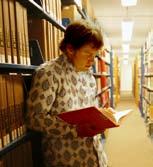
Specialist in International Student Placement.



• Change of Course, University and Education Provider

• Assistance with credit transfers
• Immigration & Visa Advice

• Student Visa and Appeal Matters
• Admission and Visa Assistance for other countries including Canada and New Zealand.

16 <> JUNE (2) 2010 INDIAN LINK Evisalaw Australia Pty. Ltd., Suite 1, Level 3, 533 Kent Street, Sydney, NSW 2000 • Tel.: (02) 92643011 Fax: (02) 92643922 • manish@evisalawaustralia.com CRICOS Code: 02635D CRICOS Code: 01241G CRICOS Code: 02831M Courses available throughout Australia in associations with leading Universities and Institutes. CRICOS Code: 02838D CRICOS Code: 02876J Visitors parking available pursueHelping you a betterlife CRICOS Code: 02938M CRICOS Code: 02928B
CRICOS Code: 02767C Manish Agrawal MARN 0323595 MMIA 2134
Fogg had an exhibition of works scheduled to open at a gallery in Vadodra. However, the raging controversy over the racist attacks against Indian students in India made the gallery nervous about showing Australian works for fear of backlash. “I was surprised because my works are obviously about reconciliation,” says Fogg.
Illuminating the way forward
BY SHIVANGI AMBANI-GANDHI
If you’ve sat marvelling at the cute reindeers running around the magnificent Christmas tree on Darling Harbour in Sydney each year, you would like to meet Roger FoleyFogg. He manages the art direction and production of the Christmas Tree of Light for The Sydney Harbour Foreshore Authority at Darling Harbour each year.
Even more interestingly, Fogg has been creating lumino kinetic sculptures - light installations -inspired by India’s colourful Gods, mandalas and the concept of Karma since the ‘60s.
“In the ‘60s it was as if India emerged in the collective unconscious globally,” he says. “In my young innocence and ‘60s naiveté, I must confess that India seemed a particularly attractive society because Coca Cola and other suspect symbols of the corporate world were banned at that time.”
He is currently showing modern LED versions of the India-inspired works that were first exhibited in 1971. “In the ‘70s, the lifespan of lights, and my light art was so small that it did not feel right to sell them. Now LED lights are guaranteed to last for 100,000 hours or 10 hours per day for 22 years,” says Fogg.


The abstract works currently on display at the NG Gallery in Sydney are far more sublime than his Christmas Tree, but just as colourful. The Psychedelic Mandala in a hexagon series consists of bright, ‘70s colours like pinks, blues and purples, swirling in a hypnotic hexagon.
The Spirit of India series consists of large panels created using light vibrations and electromagnetic waves, LEDs and rope light to illuminate the transcendental concepts about the three classical Indian elements: air, fire and water. The Spirit of India – The Blue One or Wet Elemental for instance was inspired by the wet weather Fogg encountered in Delhi. For those familiar with Indian mythology, The Blue One may also resonate with the Blue Lord, Krishna. And that is perhaps the beauty of his installations - the abstract works can take on any meaning you want them to.


“These works are indeterminate - people can find any meaning in them.”
Fogg himself was attracted to light art because of ephemeral quality.
“Light is anomalous, invisible. I sometimes use fog in my art works to make light more corporeal. Light art itself is quite ephemeral - you switch it off and it is gone.”
Despite his long-standing connection with Indian spirituality, his first visit to the country was only last year in 2009, when he was invited to an LED convention in Delhi. He took the opportunity to travel to Vadodra, Varanasi and Dharamsala. His
favourite memories are of those living in a small hotel in Karolbagh in Old Delhi.

“If you wait outside the hotel, you will see elephants walk past—that won’t happen at the Imperial Hotel!” he laughs.
His other impressionable memories are from the Grand Trunk Road. “A lot of India is getting too modern. Beautiful cultures are getting destroyed by TV,” he says.
He refers not only to India, but also to the younger generation of the aboriginal communities in Australia. He has worked closely with one such community - his photographs of his lightwork with the Gija people of the Kimberley, at their invitation, led to The Spirit of the Gija exhibition which has travelled to galleries in Melbourne, New York and Kununurra.
His other major art shows have included light installations in group shows at the National Gallery of Victoria in 1984 and the Art Gallery of New South Wales in 1992 and he was also commissioned to produce a light installation - OP/EN - for the Museum of Contemporary Art, Sydney in 1991. He has also taken his installation work The Magic of Light to Singapore and other light works to Bangkok, Hong Kong and to the Diwali festival of lights in India in 2009. Earlier this year Fogg exhibited a commissioned work at Hazelhurst Regional Gallery and Art Centre, titled Lumino Kinetics: Seven Light Sculptures which utilised 21 lightworks and 9 films about light as part of his long term multimedia project - The Spirit of India
While he was in India, he had an exhibition of works scheduled to open at a gallery in Vadodra. However, the raging controversy over the racist attacks against Indian students in India made the gallery nervous about showing Australian works for fear of backlash. “I was surprised because my works are obviously about reconciliation,” says Fogg. Undeterred, he is trying to organise another exhibition in Delhi, this time in conjunction with another Australian artist, Tracey Deep as well as two Indian artists who travelled to Australia in the aftermath of the controversy to create new works - Seema Kohli and Dhiraj Singh. Fogg hopes to finish a new work for the Indian exhibition, which has particular resonance with the recent souring of relations between the two nations. “I am not inspired by the spirituality of any one religion or particular belief, but the way that the belief and social systems in all the many different Indias add up to manifest a harmonious whole -- one family,” says Fogg. “I was first moved by this concept of - Universal Oneness - at the Yellow House, Sydney nearly 40 years ago through an unpublished cartoon by Martin Sharp titled we are all islands, joined beneath the sea. My friend, the artist Dhiraj Singh tells me that this ancient Indian concept of Vasudev Kutumbakam, the world as One Family, holds special relevance today particularly in our reaction to climate change. We all have to work together.”
JUNE (2) 2010 <> 17 NATIONAL EDITION
Roger Foley-Fogg’s luminous works hold a special message for India and Australia
www.indianlink.com.au
(Above and right)
ARTS
The Spirit of India - Elemental #1 and #2 (Far right) 5 x psychedelic mandalas - 60s retrospective
Photography by Jim Anderson and Wendy Shaw
Smart, Savvy, Sensible and Successful
Sydney’s breed of single Indian women is a unique genre - upbeat, trendy and ready to face challenges with the conviction to succeed, say
Smart, savvy, sensible and successful. An apt description indeed, of the young women in Sydney’s Indian community. They are so much more than pretty young things – intelligent, confident and with a surprising sense of maturity. Some of them have adopted Sydney as their home, coming here as students and getting entrenched into the Australian way of life, which they feel suits them admirably. Others are Indian-origin Australians who came here as young children and are now an integral part of Australia’s society. But the one thing all these young ladies share in common is that they are all high achievers and have a great balance between their
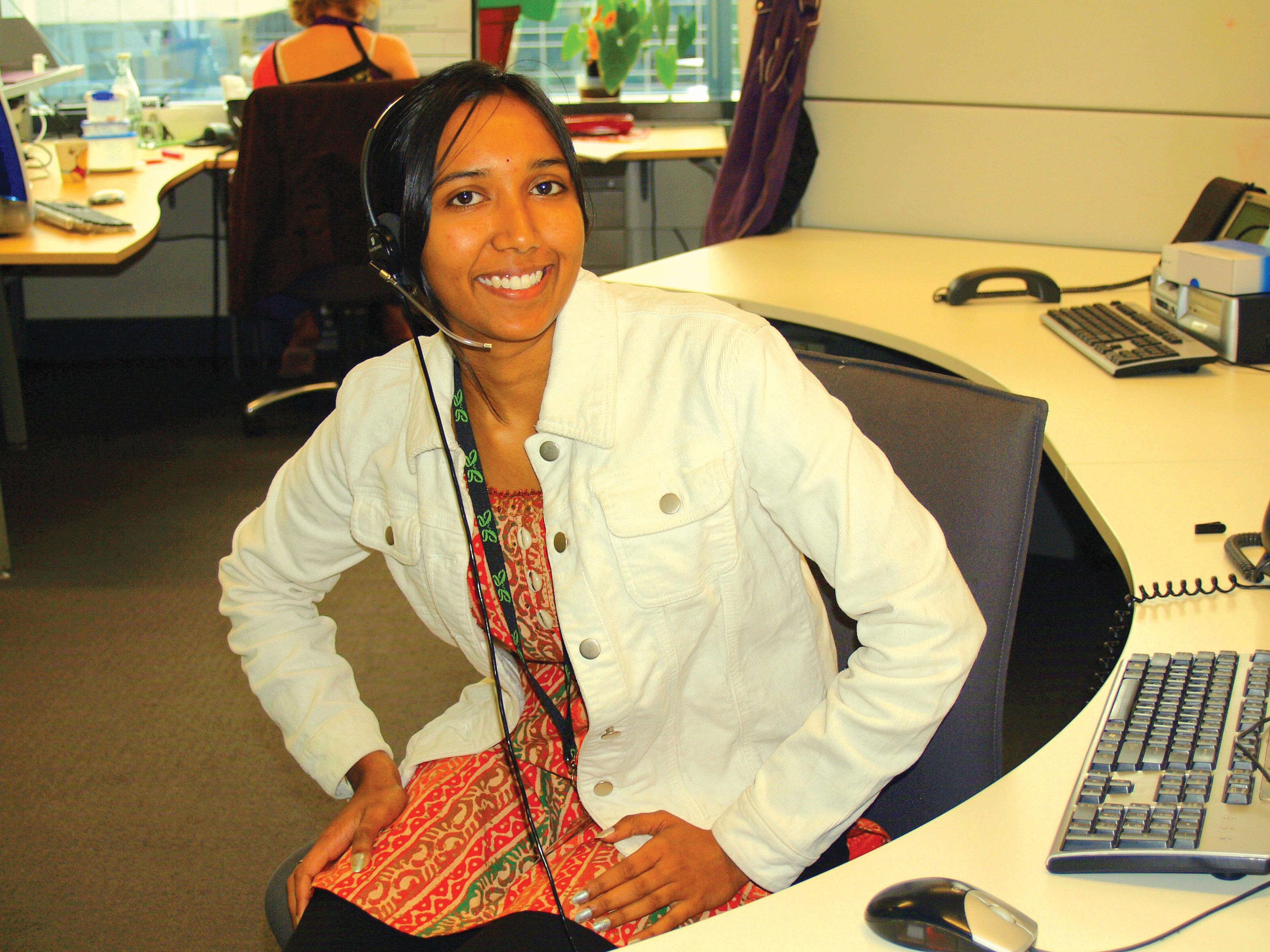 PRIYANKA RAO and SHERYL DIXIT
PRIYANKA RAO and SHERYL DIXIT
professional, social and family lives. They are open, honest and completely in tune with their backgrounds and bellybuttons. What more could the world want? They are the Gen W – feisty, poised and ready for action.
We delved into their lives from different perspectives. The relatively new arrivals talk to PRIYANKA RAO about the experience of discovering Australia and the challenges they face. The ones who’ve lived here have a quirky, yet individual characteristic to their personalities, which they share with SHERYL DIXIT. So let’s take a peek into the lives of these young women, their fundas and their futures.
“I like the crunchy rasp of a kiwi and the juicy relish of a strawberry. It tastes like freedom. I like Lindt, hot chocolate, donuts and cappuccino. It smells like the air in Uni. I love shopping, the glimmer of night life, working out at the gym and making money. It feels like Sydney. On a serious note, I have a lot to do in my life, I have a dream and yes, I am in a relationship too!” This is the common sentiment of Sydney’s single woman, who arrived off a plane from the subcontinent a while ago and is still savouring the city’s myriad offerings.
How do you categorise these single Indian women? Well, they’re the ones you see mostly in trains, on buses and in shopping centres, working late nights and partying with friends and colleagues. They’ve come to Sydney all by themselves and have earned a post-graduate or a Bachelor’s degree; they’ve either already made a mark in this big, bad world or are on their way to do so. A lot of young Indian woman aged between 20 to 24 come to Australia as students, hailing from all over India, from Assam to Tamil Nadu, from Gujarat to Hyderabad. And like their sisterhood who have lived their lives here, they have a common goal: to succeed in whatever they’ve embarked upon. These young ladies are quite well-balanced despite the oddities that keep them on their toes in their journey towards success. The best part about coming to Sydney, according to most of these women, is that one learns a lot when on your own. Life takes an about-turn and you start from scratch at building an identity, career, friends circle, indeed, your whole life!
There’s a lot to experience in this great city from its variety of cuisine, eateries, harbour sides, clubs, temples, hang-out cafes, which represent the city life. Experiencing outdoor fascinations like zoos, theme parks, beaches, sporting arenas and adventure sports is another zesty facet of living in Sydney. “When I first arrived in Sydney, it was all about visiting new places and simply observing what was going on around me. I was thoroughly fascinated by the beautiful
beaches, well-planned housing areas, parks and people’s open attitudes,” says Ramya, who came here as an engineering student.
Gradually the fascination phase softens out and the walk into reality seems a bit perturbing for most of them. Working part-time, fulfilling financial obligations, doing assignments, cooking, living in a house full of flat mates who are not easy to gel with and managing time well; it all seems a mishmash of events and is surely a task of immense effort. One look beyond the zealous life of an international student and you know what it is like to come here as a single woman. “You start to realise that 24 hours are not enough. The one thing that comes back to memory all the time is that during my early years of education back in India, my parents were there for me. I think I lose precious time because even now, if I want to do certain things, there is just not enough time!” says Anna, a working professional in the Sydney CBD. For most of them, pursuing hobbies as active interests becomes a task of effort due to time constraints. However, it is slightly different for those who are settled and can spare some time for non-academic interests that make life more meaningful.
Whilst these women have a common goal to succeed in whatever they’ve embarked upon, they are quite wellbalanced despite the oddities that keep them on their toes in their journey towards success
Part-time jobs are plenty; as students, Indian girls work in places like Coles, call centres, Subway restaurant chains, Indian grocery stores and retail stores like Myers etc. They usually share a house or a unit. While some love to decorate their houses with scented candles and lavender lilies, others don’t mind leaving it filthy enough to scare even devils away. “Housemates are great for parties but surely not to stay with,” says Pooja, who had a cramped experience in her one bedroom apartment. But mostly it does take a little time for people to find a good place and settle down. Sharing house is
Continued on page 20
18 <> JUNE (2) 2010 INDIAN LINK COVERSTORY
Cocktail creator
She keeps it a secret, because it’s the kind of profession that would raise a few eyebrows within the community. But although N isn’t really concerned about what people think of her, she is very sensitive about her parents. “People will come down on my parents really hard and make life tough for them,” she says. “We have a lot of busybodies who act like the moral police in the community, and for them no job is respectable unless it’s that of a doctor or lawyer!” N is a cocktail waitress, a job she’s been doing for the past year, and one that she admits to really enjoying. “I work at an upmarket bar in the city and we rarely get a rowdy crowd. I earn well and sometimes get a few hefty tips, which is always welcome extra cash,” she says candidly.
N and her family moved to Australia when she was 8, but life wasn’t easy for them. Her father fell ill soon after they arrived and could not work full time. The family struggled and although they lived a good life, there was never any spare cash. “I did well at school and was very keen to go to Uni, but we just didn’t have the money,” says N. She opted instead for a short-term course in restaurant management and landed this job which pays well and is a safer profession than is generally believed. N works four days a week and weekends, which are usually very busy. She has become an expert cocktail mixer and her boss encourages her to try out different combinations. She also does a little routine behind the bar, flipping bottles and making exotic drinks. “It’s not a breeze and as staff, we are very disciplined. I can’t drink on the job nor accept a drink from the patrons, which suits me fine because I’m not a big drinker. So you see, it’s the people who come to the bar who have the most fun,” she says with a smile.
Her parents were initially annoyed at N’s choice of job, but now they realise that it’s not as bad as they imagined. “The staff and management are courteous and friendly, and very protective. I am always dropped home after work, they don’t even let me take a cab,” she reveals. N’s contribution to the family income has made life easier and she’s still applying for scholarships to Uni, to pursue her dream of a degree in Marketing Communications. “My boss has been very helpful and insists that I put away a bit of my salary each month into a term deposit,” she says, admitting that this form of saving wouldn’t have occurred to her if not for his advice.
N enjoys a sedate social life when she’s not working, “simply because I’ve seen it all – from the idiots who drink themselves silly and get into brawls to the ones who lay sprawled in the loo, unable to even get up.” She does have an Aussie boyfriend who is very supportive of her work and ambitions, but she hasn’t had the nerve to tell her parents yet. “I have brought him home and I think they suspect, but they’re waiting for me to say something,” she admits sheepishly. “We are quite serious about each other, but living in an Indian-centric neighbourhood makes me worry about what the neighbours will think… isn’t that stupid?” she says with charming mystification.
N’s feisty attitude and candidness impressed me, and in all honesty, I wouldn’t mind sampling one of her cocktail combos. I’m sure it will be as cheerful, colourful and exotic as her.
Trendy, but traditional
Susmita Bhattacharya is the ideal child any parents could want! Halfway through studying to be an Anaesthetist, this young lady has always been a shining star. With a UAI of 99.95 in Year 12, she was among the top 5% of students to achieve this in New South Wales. And her yen for academics took her to the field of medicine. “I was always of a mathematical/scientific frame of mind, so the decision to pursue medicine came to me quite naturally,” she confides.
Susmita admits that her family is probably slightly more traditional than those of her Indian peers, and this influence to a significant

extent, continues to be a part of her life. But certainly not in a way that has been even the least repressive. “My family is traditional, but not conservative. They have been open and accepting of the Australian way of life, and at the same time, have a high sense of tradition and values. It’s a great balance and works well for us,” she says. Susmita is very comfortable with her Indian avatar, and feels no sense of disconnection with her roots. The family observes religious and other Indian festivals and she enjoys being a part of them.
“Celebrating these festivals brings me a better understanding of the Indian culture and tradition, and its something I am proud of,” she says.
Susmita is now a Registrar at a hospital, a training position that is a challenge in itself as she has to work on a roster system which
doesn’t leave much time for leisure. But in her spare moments, she still takes time to chill out with friends and family. While maintaining a balance between working and studying, Susmita still sneaks in the occasional movie, dinner or just an evening relaxing with friends.
Commenting on relationships, Susmita feels that as long as both partners have mutual respect for each other’s traditions and cultures, a relationship can blossom. But currently, her focus is on completing her studies and doing well at her job. “Perhaps in time,” says this sensible young woman, “I will find someone of the same background and values with whom I can share my life.”
At the risk of seeming to promote matrimony, I have to say that Susmita could well be any lucky young man’s ideal wife too!

JUNE (2) 2010 <> 19 NATIONAL EDITION
Susmita Bhattacharya
Devotee of Drama
Rimmika Shankar’s first name means ‘musical notes’, but she decidedly admits that she’s not musical. Acting is her forte and her passion, and she dedicates a good bit of her leisure time in pursuit of this activity.

“I have to keep doing something all the time,” says this effervescent 21 year old Uni student, who has studied Bharatnatyam and who participated in the Spring Cycle event, riding her bike over 40 kms through Sydney’s streets. In her final year studying for a Business degree in HR Management, Rimmika’s not sure if the course will signal the end of Uni. “I haven’t decided what to do next, but I may consider a degree in Law, because it interests me,” she says.

Rimmika’s family moved to Australia when she was 11, and signified a slight lull in her otherwise busy life. “In India I was good at academics, acting, debating…I was pretty much an all-rounder,” she says. She was outgoing and popular, but coming to Australia meant a different environment and as readjusting took a while, she became quieter. But not for long. Rimmika soon got back into acting and debating, and even singing in the school choir.
Being at Uni has been a revealing experience for this cheerful young lady. She met lots of people from different backgrounds and has enjoyed interacting with varied cultures which often seem to mirror her own traditional values. She enjoys going to concerts and gigs with her bunch of friends, and her parents haven’t been restrictive in any way probably, she feels, because they trust her.
Rimmika also finds that she’s rediscovering her Indian roots, not just through trips to India but also through her acting. She is a part of a drama group at Uni, and they are currently deeply involved in putting up a play on the life of Swami Chinmayananda, founder of the Chinmaya Mission. “I love acting and getting into the role of the character,” says Rimmika. “Weekends are now spent in rehearsals which are strenuous, but also a lot of fun.”
And what else does she enjoy? Well, shopping of course, but her taste in attire and accessories is certainly unique. Rimmika enjoys buying vintage clothing and trawls around Newtown in search of unusual styles which reflect her personality. She also loves kurtis and their traditional-yet-modern styles.
For Rimmika, life’s a stage with ever-changing backdrops, and it’s unlikely that this ebullient young lady would ever have it any other way. Her cheerful enthusiasm is infectious and after our chat, I felt an inclination to sing in the shower. But I guess I’ll just leave that to the way more talented Rimmika!
Rimmika Shankar
all about discipline and cooperation, which is hard to find unless one discovers a compatible share mate. But there is another side to the ordeal. “You learn to be with each other. Some of the things I learnt when I used to share a room with two other girls was to have fun, to forgive and forget and to handle finances. My room-mate was really pesky about keeping the room clean while I was not. We struck a deal that she would clean and I would cook, which worked out well for the both of us” says Mandira, a Supervisor at a telecommunications company.
Other than the usual aspect of having to think of paying tuition fees, bills and house rentals, safety and transport is also a concern for many students. International students don’t have travel concessions nor do they have scholarship options, unlike some other countries. Financially it’s definitely not a very comfortable situation unless you’ve got a little help coming from back home. Radha, who returns home late due to work timings, related a familiar incident “I got robbed when I was walking home from the station in Strathfield. Two unknown men came towards me, one held me tight and relieved me of my bag. Unfortunately I was carrying $700 cash in my bag that night. I generally avoid carrying money, but that night a friend had returned some cash to me and the incident followed. Well, I would have been broke that month, had my friends not helped me out financially,” she says
ruefully. Many say it is important to have a strong circle of friends and some trusted contacts, which is the only cure for torn purses and a broken will in a foreign land.
The transition from the life of a student to a working girl is not always smooth. Hordes of bright and young women find it difficult to get the right job. Many leave out of vexation, and the ones who stay back compromise on their career for financial reasons. The hourly income for most of them is $12 -$20 per hour and depending on that, the average monthly income is approximately $1500 - $2500 per month as a maximum.
Jaya who is an Advertising gold medallist back in India says, “I think jobs in the field of Arts are plenty, but unless you are a permanent resident or a citizen, it is hard to find exactly what you really want to do. I can go back home but I am just staying back for some more time as I have my educational loan to repay.” As a student it is almost impossible to save unless you have a relative or family who can help you settle down in the initial years. But once full time work begins, there is some scope to save. “It depends on the person really; I am not the ‘save money for
a rainy day’ sort of a person. Instead, I do send a reasonable chunk of my income back to my family in India, the rest I use for my living and leisure here,” reveals Jaya. There are people who spend money on extensive shopping, styling and on social life and parties, and there are also some others who like to keep a low profile. In saying that it is true that some people feel that living in a blended society like Sydney, one has to be a little social to enjoy life fully. Many feel the need to communicate with the larger community and not just on Indian turf.
The career scene for Indian women has largely changed with immigration to western countries. Many careeroriented women find Australia a paradise for working life. It’s more the case of living life on your own terms, no one to dig at you for not conforming to certain ways. Moving to a different country changes the way a person views the world in many aspects. When you are a struggling single in a new country, it is but natural to find a romantic companion and that’s what happens to many Indian women as well. Indian parents sitting on the other side of globe have little idea of the squabbling involved in day-to-day single
20 <> JUNE (2) 2010 INDIAN LINK COVERSTORY
There are people who spend money on extensive shopping, styling and on social life and parties, and there are also some others who like to keep a low profile
Living la vida loca
“That means living the crazy life – I guess that’s what my life currently is all about!” says S, a feisty young lady with very decided opinions about life. She works for a media/publicity company, and makes no bones that she works, studies and parties hard, and in equal proportions.
S comes from a fairly traditional background, and still lives in an Indian-centric neighbourhood in Sydney, which seemed like a home away from home for the young 6-year-old newly arrived in Australia. She grew up on Indian food; her best friends were Indians, and naturally, the family’s social circle was Indian too. S finished Year 12 with good grades and was thinking about Uni, when a friend’s mum suggested she apply for a part-time job. It was a temporary position, which soon became permanent as her employees liked her.
“I guess I have a flair for PR because I like meeting people and could interact very well with the company’s clients. I am now working on small independent portfolios and learning a lot,” she claims. But with the job came an unexpected challenge, that of social interaction of a wider variety than A had ever known and she found that her presence at client dinners or late-night drinks, were a necessity in the job description.
“The job opened up avenues to a social life I had never even imagined I would ever have,” she says. Predictably her parents weren’t too happy
Dancing Queen
Annie Pathania is a modest young lady. In fact, too modest, as we discovered. After speaking to her, a few hints from community members in the know helped us find out more about this talented and vivacious young lady.

Annie can dance. She admits to loving dancing and has taught herself various routines, some styled on Madhuri Dixit’s raunchy repertoires. She has had no formal training in the art and her hipshaking, tummy-jiggling moves are a blend of Bollywood and Indian fusion.

Annie also takes time out to informally teach people in her friends/family circle how to shake their booty and all else. She has performed at cultural events at Uni and various community events, so it’s no wonder that she enjoys the reputation of being an excellent and talented performer.
Bollywood has and remains an integral part of Annie’s life and has helped her stay connected with the changing culture back home. She enjoys Hindi movies when time permits, but even if it doesn’t, she likes to keep in touch with whatever’s recent. And of course, I’m sure the ever-innovating dance moves are an incentive to watch too.
Annie’s family moved to Australia when she was just a toddler and although her parents are traditional, they are “cool”
life here, and many Indian parents detest the idea of live-in relationships. “I found someone here but unfortunately he doesn’t belong to the same caste as I do, and my parents are creating a ruckus over it. They want me to get married to someone they choose,” says Simone, who has been working at Coles for the past three years.
It is a sociological problem in that most parents do not realise that sending their children abroad also means sending them to experience a different culture. Single women living in Sydney develop a mind of their own, just like any other independent person would and their lives change when they come here. It seems a bit paradoxical when the same parents who sent them abroad expect them to behave like adolescents in their care who cannot make their own decisions; but the fact is that they are now in a different country altogether, making their toughest decisions all by themselves. Some girls even choose to change their lifestyles completely in tune with Western culture and have no qualms about having a relationship with an Aussie man, for that matter. While this works out well for them as there is no more confusion as to which culture they belong to or would like to adopt, it creates multiple issues in some families about inter-racial marriages and family ties. While it is important for parents to correct their children when they feel they are going in the right direction, a greater understanding of single life abroad is also
with the hours, but they were supportive and realised that she had good prospects in the company.
S has so much fun in her life and at her job, that she finds it fulfilling after her sedate teen years. Her boss encouraged her to do a part-time PR diploma in Uni, so she studies as well. However, S admits that initially, because she never had so much freedom to go out and enjoy herself, she used to drink too much and started smoking. “But after getting wasted a couple of times, I learned my lesson. Now I know how to drink in moderation, and I try to restrict my smoking only to official social events,” she laughs.
S has been to most of Sydney’s trendiest pubs and nightclubs, and she enjoy the lively atmosphere of these hotspots. At 26 she still lives with her parents, but is thinking of moving closer to the city and sharing a unit with a couple of workmates. She hasn’t summoned up the nerve to discuss this with her parents yet, but she feels that they will support her, despite how they feel. “I am enjoying my independence, and I think I can be more responsible and feel less guilty if I’m on my own,” she says.
S is not too keen on marriage, but her parents are beginning to worry as most of her friends of the same age are either married or engaged. But she’s out to experience more of this life and enjoy a career with the knowledge that in a few years she’ll be ready to settle down. “I don’t want to have any regrets about what I couldn’t do. So for me, its live life to its fullest, and good luck for the future,” she concludes
too, choosing to trust her completely. This 24-year old marketing professional has a challenging job which keeps her busy through the week, but also helps indulge her creativity. However, she still finds the time to catch up with friends often and weekends are filled with social activities like going to the movies, dinner at trendy restaurants or the group catching up at a friend’s home. “Pubbing and going to nightclubs are not my scene,” admits Annie, “I’m still quite shy, really!” But if there’s one recreation that gets her up and pumping, it’s shopping. Like a lot of her generation, Annie enjoys buying clothes, shoes, make up and accessories, “something that looks nice, suits me and is tasteful,” she says enthusiastically. She also has quite a yen for Indian clothes and keeps in touch with what’s trendy on the Indian fashion scene, which is where Bollywood comes in handy once again. Her shoes are the despair of the family and the envy of her peers, and I certainly feel a tinge too, at the thought of “perhaps 80 pairs…?”
“I must sound so flighty,” laughs Annie, but I can’t agree. Her honesty is refreshingly charming and above all, genuine. And after all, a dancer can be forgiven for indulging in footwear. So keep those feet flying and toes tapping, young Annie!
required by the parents. “Parental support is very important in leading a single life here, my parents were always there in whatever I did and they always trusted me, which helped me confide in them and get good guidance,” says Mithika, an IT consultant in a telecommunications company.
“It takes about four years to breathe normally in a new country.” This is one of my favourite lines from my aunt who is settled here since almost 11 years. There are some who miss their family and life back home more than others, and come here only to realise that their first priority was in actuality, an Indian lifestyle. “I still feel living in India was much better for me in terms of living standards. I have been here for four years now and am still unable to match my living standard to what it was in India; but I guess most of it is associated with the rental property market here,” says Shanta, a writer for an Indian magazine. Many of them stick around either for work experience, partner’s preference or financial autonomy. Kamini, a radio presenter, says “There are days when I am utterly confused about what I am doing here with a post graduate degree, not working in
only due to financial reasons. Had my family been better off I would have packed my bags long ago.” Many of them look up to someone who has been able to crack the nut, as a source of inspiration and hope. This hope keeps them going in their battle of life and personal goals.
Coming to a foreign country and settling down is a milestone in anybody’s life. But, as a matter of fact, it is not easy to sustain a single life even when one has a tenacious will and support from family. The age-old adage ‘smooth waters do not make skilful sailors’ aptly illuminates life in a foreign country. Marching on one’s way towards a career, maintaining smooth ties with family back home, plus allowing room for reflecting on oneself and still dreaming of a family of one’s own might seem like a task when living on your own. However, when you start enjoying the new place, its culture and take on life as a challenge, these complicated worries fade out to give way to an existence so remarkable that it holds the intensity to change the very definition of life. Kudos to Sydney’s single Indian women!
JUNE (2) 2010 <> 21 NATIONAL EDITION www.indianlink.com.au
Some girls even choose to change their lifestyles completely in tune with Western culture and have no qualms about having a relationship with an Aussie man, for that matter
Annie Pathania
Breaking down barriers of hate
A young film-maker uses her art to spread the message of peace
BY USHA ARVIND

Debutante filmmaker Saliha Wazirzada’s Zarmina - A Story of Hope was adjudged Best Short Film at the inaugural Colourfest Film Festival recently.
The national festival, which focuses exclusively on culturally diverse filmmakers in Australia, has attracted hundreds of entries, which were then whittled down to 10 finalists. Zarmina was named winner after an audience vote on the opening night.
Directed and produced by Saliha, the 12-minute feature tells the story of an Afghan woman who stakes her existence, in hope of a better future for her young son, surviving the trauma of a bitter war, only to emerge stronger in the face of extreme adversity.

“The movie explores changing perspectives and the desperate hope for peace and understanding,” the Pakistani born filmmaker told Indian Link
It is about understanding perspectives and making peace within, by reaching out to each other, she explained.
“Through emotional empathy, we can recognise the larger purpose of life and eventually become better human beings. No matter where we are born or raised and how different we are, deep down we are all the same inside. What runs within is still blood, red, just red. And I strongly believe that forgiveness is the only way to peace and by killing each other we merely sow seeds for an eternity of hatred,” she emphatically stated.
“Thus, through my maiden venture I wanted to show that emotions are universal and that, two people hailing from two different cultures or geographical locations can still connect through an emotional understanding,” she continued.
nearly a decade ago, in search of a better future, more specifically a good education, which she believes is the basic foundation for any good citizen of the world.
“I have always yearned to tell the stories that aren’t being told, but I had no idea that nine months and 24 drafts after I started my maiden production, Zarmina would touch so many people. I was speechless when they called my name out after the screening”, Saliha confessed.
A creative storyteller, her passion for spinning a yarn goes back to her early teens when she used to engage her young cousins in Pakistan. Her tales were loaded with pathos, expression, movement and songs.
“My little cousins still remember how the scriptwriter in me thrived, when I used to whip up a drama script instantly and give each of them a character to play, performing it in front of the whole family,” she recalls nostalgically.
Hobby soon became a passion and when the family moved to Australia, her parents encouraged her to take it up professionally. Saliha enrolled for a Masters in Media Arts & Production at UTS, enjoying every bit of the practical hands-on exposure.


At Uni, her primary focus was on documentaries, but around this time, she also felt the strong urge to express her ethnic diversity through the artistic medium. “Rather than worrying whether the course would open up professional or monetary opportunities, I felt the need to just express myself as who I am. Being a firsttime filmmaker I wanted to study more and more about my culture and my focus grew on the issue of Afghan women,” she narrated.
“I learnt a great deal about their resilience. This then led to me to conclusion that these women are the ‘real war heroes;’ having their husbands and sons fight for freedom at the fore front, they are left behind to raise kids within a society where the man is the main bread winner. While hearing many sad stories of these women, I felt that I should reach out to these women and give them hope. I wanted the world to understand them, the
After all, for every true artist, real success comes though
Benjamin Gilmore, Mehboob Raawi and Aamir Khan. Thrilled with her award, she sees it as a way of repaying her parents for all their innumerable sacrifices. “All the good values they instilled in me, helped to see the world as a global place rather than one with harsh borders and differences of religion and culture. I also feel better knowing that I have provoked people to care about the helpless and think beyond the square. If I can help people let go of their hatred and negativity against each other and connect on the basis of humanity, then that is my biggest achievement,” she proudly acknowledged.
Saliha is also thankful for the tremendous support she has found from within her ethnic community.

“They believe what I am doing will always reflect their voices and wherever I go, whatever I do, my ethnicity will always be reflected in my work,” she added. Egged by her success, Saliha now hopes to continue her campaign for those whose voices are yet unheard in the mainstream.
Would you like to have your voice heard?
Do you want to make your community a better place to live?
Are you interested in ensuring access for all?
Ashfield Council is looking for members to join its Access Committee.


The Access Committee is an official Council Advisory Committee which meets monthly on the first Monday of the month. It is chaired by a Councillor and includes people with a disability, carers and local service providers.
In 2010 the Committee is working on ensuring access issues are adequately addressed in the Council Management Plan and Social Plan. Later this year we are talking with shop keepers in Haberfield about improving access to their businesses and to the commercial precinct.
The Committee advises Council on issues of access for people with a disability to facilities and services in the Local Government area.
If you are interested in joining the Committee, please contact Ruth Paillas on 9716 1842.
22 <> JUNE (2) 2010 INDIAN LINK
NEWSMAKERS
www.indianlink.com.au
“Rather than worrying whether the (film-making) course would open up professional or monetary opportunities, I felt the need to just express myself as who I am”
Caption Eras Bold ITC 8pt on 9 Regular sinvel ipid ut as doles doles dolention con pla essit eiciunt es
HOMEBUSH OFFICE SPACE NO LEASE New fitout SINGLE OFFICES from $120pw. Including all outgoings, Some furniture available. Call on 0418 965 834
Rising Star

It’s been accolades all the way, but for this academically talented professional, the challenge ahead is tackling the Indian legal system
BY RITAM MITRA
With a name like Star, it’s no wonder young Shaun Star is soaring to fantastic heights. Shaun was recently chosen as one of the successful Australian undergraduate recipients in the inaugural 2010 round of the Prime Minister’s Australia Asia Endeavour Awards. The “best and brightest” university students from Australia and Asia are recipients of these awards. Shaun will travel to India as a visiting student at the National Law School of India in Bangalore, and as part of this award, he will also undertake an internship in India after completing the study component in January 2011.
This 23-year-old genius is currently undertaking a Bachelor of Commerce in Marketing as well as a Bachelor of Laws at Macquarie University, and is ranked in the top 1% of his class for both degrees. He has also, since 2008, worked in the International Arbitration Group at leading law firm Clayton Utz. Shaun has been awarded countless accolades and scholarships, including the Super Innovation Scholarship

for five consecutive years (2006-2010), the Dean’s Award for Outstanding Academic Achievement for four consecutive years (2007-2010), the Goldman Sachs Global Leadership Award, the Golden Key Asia Pacific Student Leader of the Year Award, and the Golden Key International Honours Society Board of Directors Award. And the list goes on and on...
However, although everything Shaun touches appears to turn to gold, it is ironic that he initially chose law as a career path mainly for the challenge. Speaking of his decision Shaun says, “The challenge was pretty much the initial instinct. I’ve always been interested in commerce, and I picked law primarily for the challenge. But as I got more and more involved, I realised there was a lot more scope for policy influence. It’s a good foundation, whether I get into commercial law or not. It’s a good foundation for influencing policy change, and I find that nowadays I also enjoy dispute resolution.”
Shaun has never been to India before, but his fiancé runs a not-for-profit organisation in India and has visited on several occasions. The Endeavour Awards scholarship is associated with Asian countries; choosing which one was entirely up to Shaun.
Why did he choose India?
“One of the interesting things about
what I’m doing is that I don’t particularly know any other Australian students in university who are doing an exchange-type thing in India. I would like to be an ambassador for young Australian students to do things in India,” he reveals. While the majority of Endeavour Award recipients went to China and Hong Kong, Shaun believes that, “From an economic perspective, and a political and cultural perspective…India’s got the lot. There’s no doubt that it’s a growing market and a growing trade partner.” He sees India as a great opportunity for him to realise his desire to contribute to the Australian-Indian space in terms of policies, as well as on a social level.
Shaun’s studies in India will focus on international commercial arbitration, encompassing courses in international trade law, commercial arbitration, and alternate dispute resolution and securities law. Meanwhile, his work placement in India will centralise around dispute resolution, and he will also undertake voluntary work. While he will be based in Bangalore, he hopes to
travel within India following his graduation in January.

Shaun completed his Higher School Certificate as school captain and Dux of Epping Boys High School and followed this up with a gap year in Germany. He has two pieces of advice for any students today:
“First, get involved domestically, if you can’t go overseas. Secondly, embrace other cultures in Australia, through cultural groups. Germany was one of my best experiences.”
Shaun’s achievements are stunningly scintillating, and this is only the beginning. With such an amazing start to his professional life, we can be sure that we will hear more about Shaun Star again in the future.
JUNE (2) 2010 <> 23 NATIONAL EDITION
NEWSMAKERS www.indianlink.com.au
People Places Parties
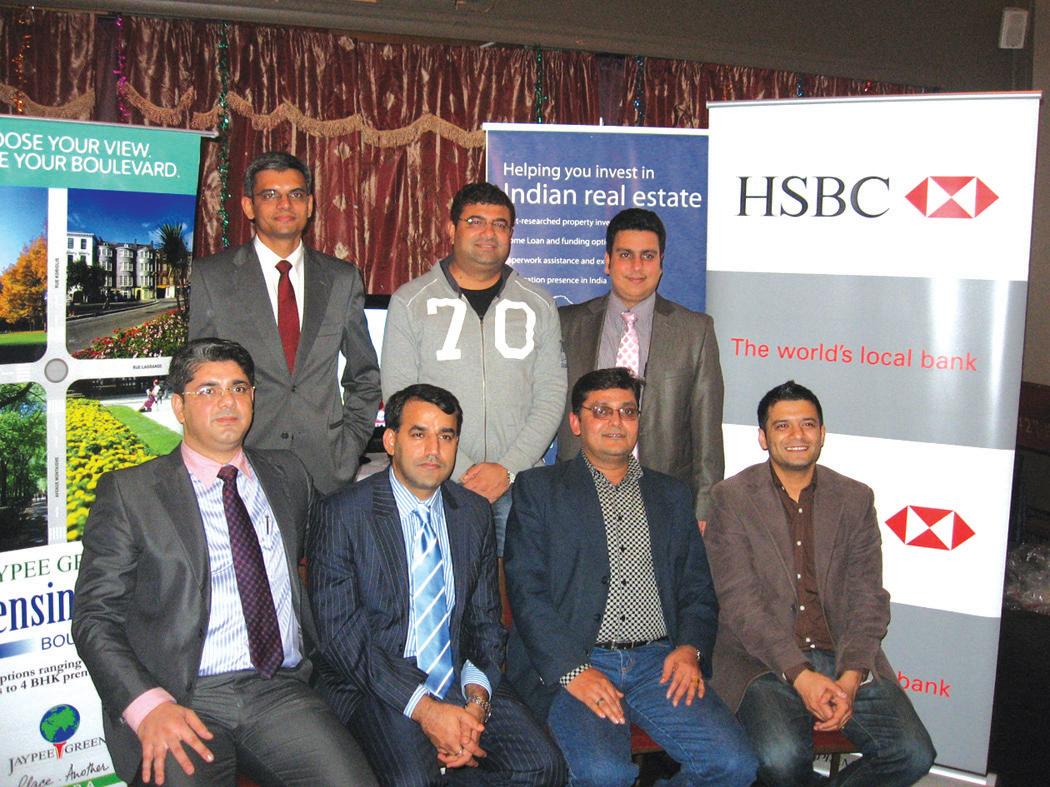
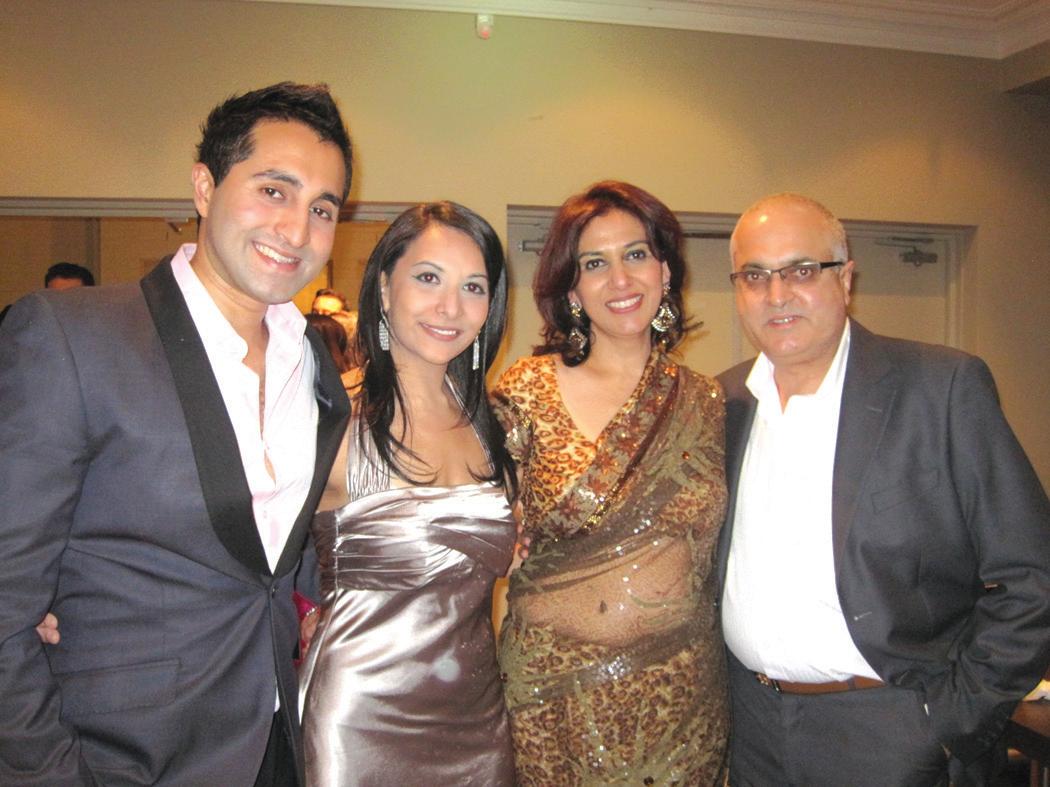
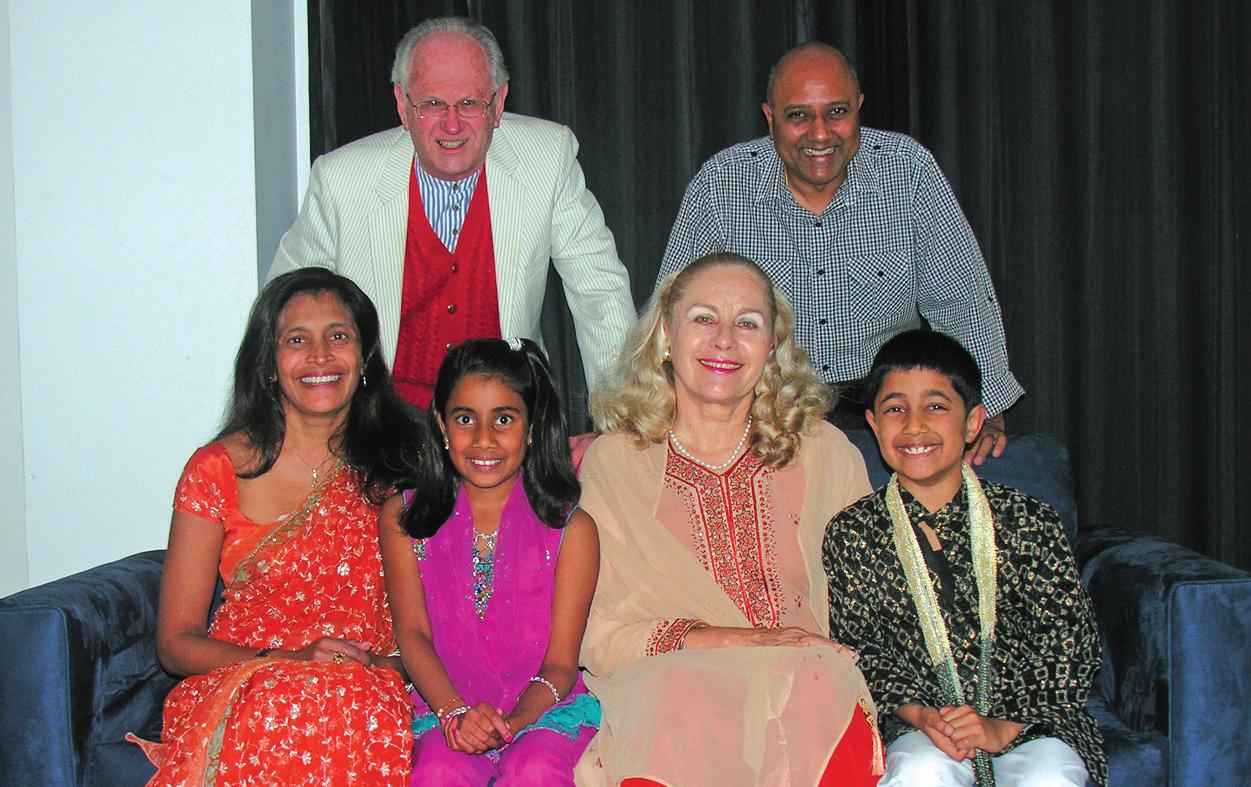
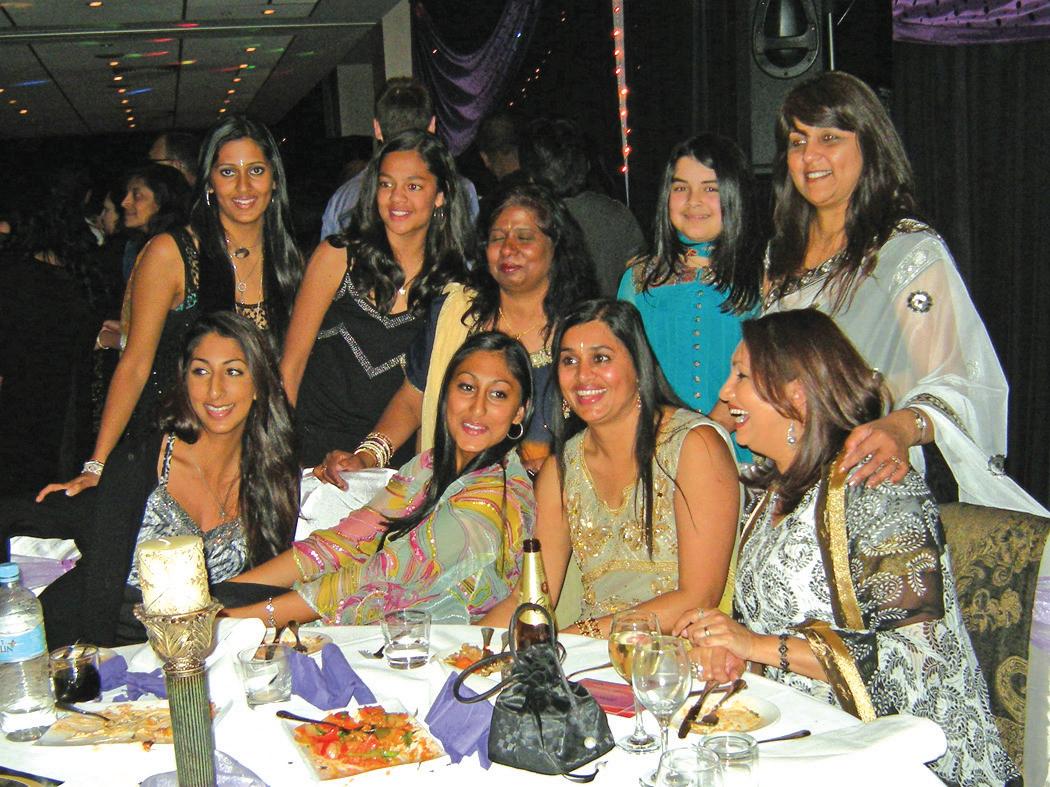
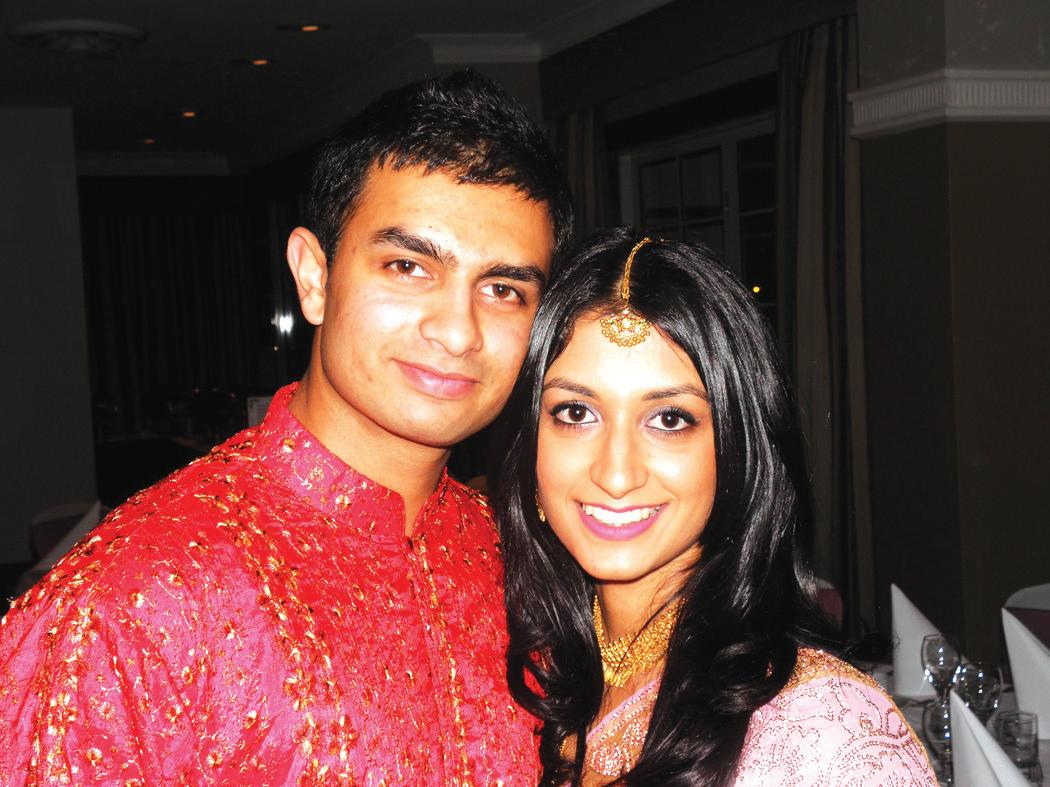



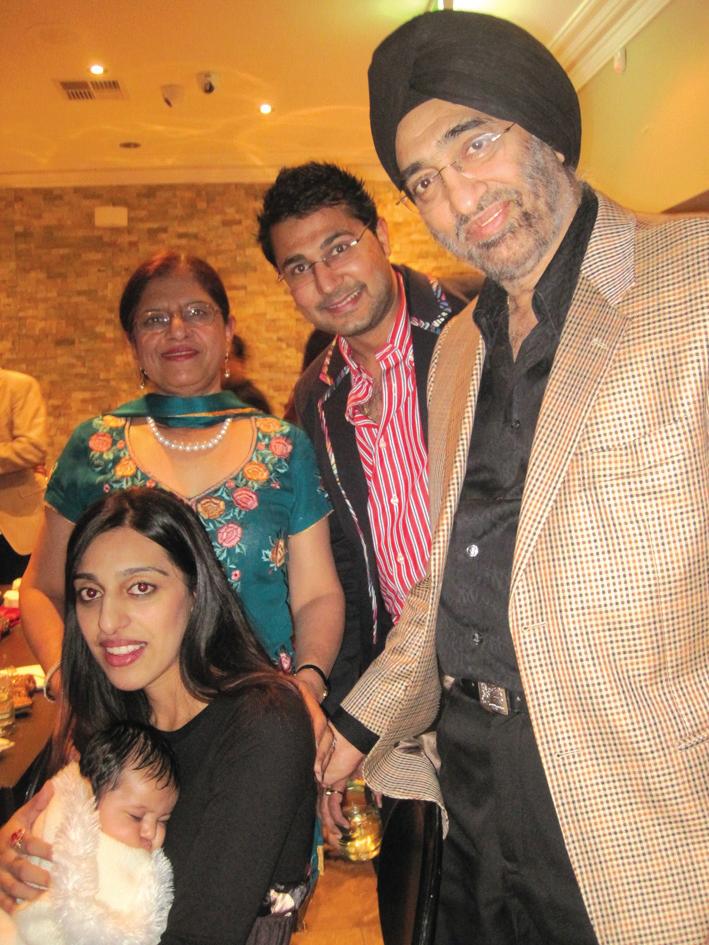
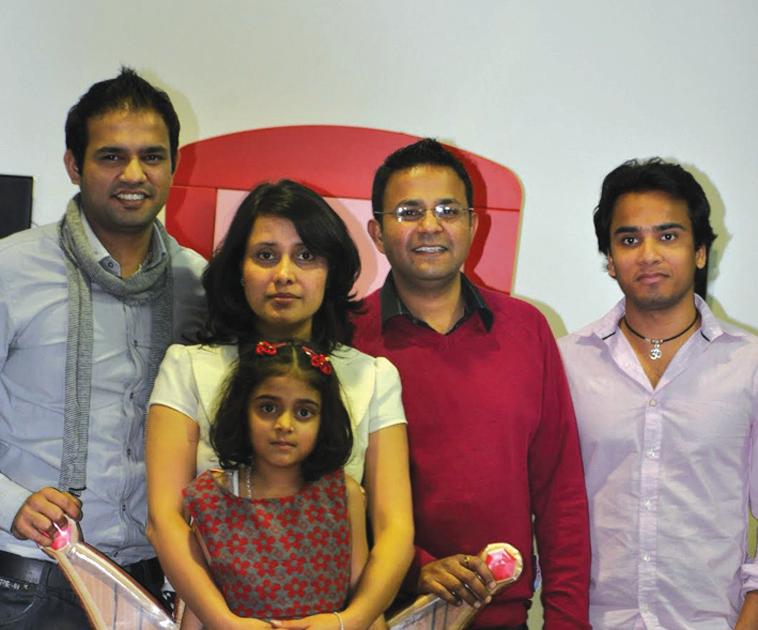
24 <> JUNE (2) 2010 INDIAN LINK
Megha and Neerav Rastogi celebrate their daughter Manvi’s 5th birthday with friends and family
www.indianlink.com.au
Welcome baby: Manisha Narang with little Kyra, and with husband Abhishekh and parents Kiran and Baljit Chugh
their
Vikram Dave and Annie Sarkar announce
engagement
you have a photo for this page? Email it to info@indianlink.com.au THISMONTH
Boogie Woogie Nite: A family event organised by Jalni and Bindi Shah
Do
Newly weds Girish and Sonia Bhojwani (left) are greeted by Anju and Sanjay Kalra
Vishal Gupta from Concept Tree Consulting (extreme right) with Navin Gera from HSBC (third from right) with delegates from JP group at the dinner party to promote the property show


Swaras galore at Swara
Sydney’s own version of an annual international Carnatic music festival is catching
BY MALLI IYER
The Swara-Laya Fine Arts Society served up a delectable treat at its fourth annual Sydney Music Festival during the Queen’s birthday weekend. Art and music lovers in the community are a discerning lot who have built up their expectations to the point where they seek high quality, and the Swara-Laya group have not disappointed them. This year’s event saw the coming together of several celebrities of Carnatic music who perform on the global stage with monotonous regularity. The top most celebration of the festive season takes place in Chennai every December, bringing every musician and art lover in hordes from the world over.
The second most recognised event of this kind is held in Cleveland, Ohio every year in March and it is a jamboree for the rich and famous. Sydney Festival has recently attracted attention and it has become a sought after event – the top notch artistes are now vying with each other to get a prestige concert due to the response of the diaspora in Australia and New Zealand.
As a not-for-profit charity group, Swara-Laya have donated thousands of dollars to Ramakrishna Mission and other overseas orphanages with proceeds from the music festival.
This year, Swara-Laya organisers loaded the program schedule to the point that the audience spent their entire weekend attending breakfast, pre-lunch, post lunch and evening musical concerts for three whole days running. Adequate catering arrangements were made so that a variety of food was available at reasonable prices for those that chose to temporarily shut down their kitchens at home.
The music and dance programs were slotted in beautifully to accommodate local artistes, students, fusion, light music and several concerts by the overseas professionals. Rasikas and local aspirants made up of musicians, music teachers, sponsors and patrons from parallel organisations thronged the auditorium.

The highlights of the festival are listed here as per the batting order given by the organisers. Malati Prasad A multi-faceted artiste with an MBA to boot, Malati Prasad is a renowned musician, dancer and television host. She kicked off the
proceedings with several Meerabai poems such as, Pyaare darshan deejo aaj, Barse badariya saawan ki and Mere to giridhar gopal depicting Meerabai’s journey of life in devotion of Lord Krishna through dance. Her versatility was demonstrated whilst she interspersed her dance with her own singing. Her movements and mudras were a blend of Bharata Natyam and Kathak. The background music was soothing and the dance was expressive. She fully lived up to her reputation as a “young achiever”.
Carnatica Brothers Karaikurichi Shashikiran and ‘Chitraveena Ganesh’ not only have an impressive musical lineage, they have also built up a reputation for lecture demonstrations and researching the teaching methodology in Carnatic music. Their rendition of Diwakaram Sanaiswaram in raga yadukula kamboji was a prayer for blessings of Lord Saneeswaran. They also sang krithis in raga poorvi kalyani, kapi narayani, but their notable item was a Ragam Thanam Pallavi in dual ragas - vasantha and bhairavi - and they blended in ragas ananda bhairavi, sindhu bhairavi and chalaka bhairavi in the Pallavi ragamalika. They capped their performance with a Thillana in raga bindu malini. Accompaniments were provided by RK Shriram Kumar on the violin and K.Murugabhoopathy on the mridangam. Their improvisations and occasional departure from the well established “kutcheri” traditions were obviously enjoyable – the audience gave them rapturous applause.
O.S. Thiagarajan Nicknamed “Oh Yes”, Thiagarajan excels with his concert style in addition to pursuing a career in accounting with Shalimar Paints. Thiagarajan’s selection of songs and krithis this time round, were pleasing to the ear. He sang raga varali followed by khamas (sujana jeevana), manoranjitham (adugathara), kaapi (rama raghukula jalanidhi) and yadukula kamboji (hecchharika garara). The brilliance of raga alapana in karaharapriya in the krithi Chakkani Raja was outstandingly rendered and the neraval at kandigi sundara was elaborate and a very satisfying part of his concert. He concluded by singing raga behaag (Muruguanin maru peyar azhagu). The concert by Carnatica Brothers was a stark contrast to the traditional/ classical style of OS Thiagarajan – each enjoyable in their own right. Embar Kannan on the violin, Trichy Sankaran on the mridangam and SV Ramani on the ghatam were more than competent and added
1.Overseas and local artistes preparing to sing Pancharatna Krithi by Saint Thyagaraja
2. L-R : Trichy Sankaran, OS Thiagarajan, Embar Kannan

3. L-R: K Murugabhoopathi, SV Ramani, KN Sasikiran, Chitraveena Ganesh, RK Shriram Kumar
4. Nithyasree Mahadevan in concert
5. Violin Duet concert by Kalaimamani Kanyakumari & Embar Kannan, Thavil by Muthukumarasamy
6.Sudha Raghunathan in concert - Violin: Embar Kannan, Mridangam, Mannargudi Easwaran; Ghatam SV Ramani


Tambura: Sakthi Ravitharan
7. Manasi Prasad’s depicting the Life Journey of Meerabai
8. Vocalist: TM Krishna, Mridangam: Trichy
Sankaran Violin: RK Shriram Kumar
Tambura artistes: Nithya Ramesh and
lustre to Thiagarajan’s concert.
The performances of Day One of the festival could be termed as absorbing and everyone went home with a bellyful of classical music.
Day Two was marked by joint singing of Saint Thyagaraja’s pancharatna krithis by well known as well as lesser known artistes. As always the pancharatna krithis evoked sentiments of bhakthi and brought out the saint’s unswerving devotion to Lord Rama.
V.K. Manimaran Well known for his resonant voice and adherence to the “sruti”, Manimaran gave a shorter concert in comparison to some of the big wigs. His rendering of Ananda nadamadum in raga poorvi kalyani and Siva chidambarame in raga nagaswaravali stood out. He also sang ragas maya malava gowlai, devagaandhari and keeravani - all crisp - to the accompaniment of Embar Kannan on violin and Mannargudi Easwaran on the mridangam. Manimaran has been performing regularly in most Chennai sabhas during the Academy music season and has received several accolades from Universities in Tamil Nadu and recognised musical forums. Kanyakumari and Embar Kannan This was a dual violin concert in the true guru/shishya parampara as Kalaimamani Kanyakumari is one of the senior most violinists in the industry, having played alongside Carnatic greats like MLV, Dr. N. Ramani, Dr. M. Balamuralikrishna and MS Subbalaxmi. The percussion accompaniment of thavil by Muthukumarasamy, mridangam by Murugabhupathi and ghatam by SV Ramani, was a unique feature of this concert. The resonance of the “thavil” easily attains 110 decibels without the microphone aiding the loudness. Kanyakumari started with a varnam in raga nattakurinji and then excelled in ragas suryakantham, nasikabhooshani and dwijavanthi. She and Embar Kannan were a class apart in the krithi Sri valli devasenapathey in raga nata bhairavi. The spontaneity of their neraval and swaras was captivating as was their combining and competing with each other. This concert was every bit a delight for the very knowledgeable audience. Kanyakumari and Embar Kannan concluded with the very pleasing Om namo narayana in raga karnaranjani.
Malladi Brothers Sree Rama Prasad and Ravi Kumar hail from Andhra Pradesh belonging to a family where devotion to music goes back three generations. They have Masters’ degrees in music and have been performing publicly for twenty years now. Their music is notable for the perfect matching of their voices and the bhava (singing with deep inner

26 <> JUNE (2) 2010 INDIAN LINK
STAGE
7 1 2 3
Laya’s annual fest
up to the mega events of Chennai and Cleveland
feelings) in all their renderings. They commenced with a varnam in raga begada and followed it with krithis in ragas nagaswaravali, janaranjani, ritigowla and behaag. Their in-depth expositions were in nagaswaravali, ramapriya and kamboji, all of which gave ample evidence of their wide repertoire. Their creative singing of alapana, manodharma swaras and neravals was impressive. Accompanists Embar Kannan on the violin, Mannargudi Easwaran on Mridangam and SV Ramani on the ghatam were extremely competent. This was one of the concerts that stood out for its sheer classical pleasure.
Nithyasree Mahadevan Nithyashree has attained name and fame at a young age, not merely because she is the grand daughter of the legendary Palghat Mani Iyer and DK Pattammal and the niece of DK Jayaraman, but she has developed a style of her own and is a huge draw amongst Carnatic music lovers. Nithyashree has shown excellent ability to sing light music also. She prides herself on her devotion to her family and her young children, besides practising hours and hours of music. She started with a varnam in raga surutti and followed it with krithis in raga vagadeeswari, vakulabharanam, ataana, bilahari and chintamani. Her range and high sruti were fully explored in the krithi Sree raja gopala in raga saveri. She was repeatedly applauded for her ragam, thanam, pallavi in raga shanmukhapriya. Despite her concert being the last of the four performances for the day, she held the audience to rapt attention throughout – a great credit to a young artiste.
Isai Sangamam (Confluence of melody) Day three of the festival started with students’ performances and was followed by this event - an item compered and coordinated by Subhasree Thanikasalam with a supporting crew of KN Sasikiran, Chitraveena Ganesh, Anand Dikshit, SV Ramani on mridangam and Kishen Jayendran on tabla. This was an exercise in demonstrating the classical ragas to creating film songs and light music of famous music director Ilayaraja. The resultant fusion music that was created was very enjoyable. Subhasree’s terrific sense of humour and her involvement of the audience towards the end went off extremely well.



Nisha Rajagoplan Here is another young talent who will surely hit big time in the not-too-distant future. Nisha had her initial training from her mother Vasundhara Rajagopal whilst in Toronto, Canada. She has taken up residence in India for nearly 15 years now and has had the privilege of learning from stalwarts like TR Subhramanyam, Calcutta Krishnamurthi and PS Narayanaswamy. She showed
touches of her brilliance in the krithi Ninne nera nammi naanura in raga panthuvarali. She also gave the audience a taste of her outstanding talent in the krithi Thiruvadi sharanam in raga kamboji. Her rendering of Sree raja matangi in suddha dhanyasi earlier and Kandena govindana in chandrakauns were melodious. Nisha probably had adequate support on the violin from Dr. Ashok Malur and on the mridangam from Trivandrum Balaji, but one could not help feeling that she deserved better.
Shashank (Flute) A child prodigy of yester year, Shashank was the youngest to perform at the Music Academy, Chennai at the age of 12. He has since received tutelage from KV Narayanaswamy and RK Srikantan and is considered to be one of the foremost players of bamboo flute. He has definitely made a mark on the global stage and the accolades he receives are frequent and many. He started with a varnam Viri boni in bhairavi and followed with Evaroora ninnuveena in raga mohanam where his speed of rendition was achieved without compromising the nuances of the raga. He also played Kamalaptha koola in brindavana saranga, and Mokshamu galadha in saramati. He was often tempted to break into fast to very fast tempo which is probably a feature of his playing for western audiences. His ragam, thanam pallavi in raga kalyani was an exhibition of switching from lower to higher octaves using the magic of his fingers on the flute, and it was delightful for the audience. He also played a ragamalika in bageshwari, bindu malini pantuvarali and kaapi, and followed these with Krishna nee begane in raga yamuna kalyani. He appeared to test his accompanists for their ability to match his speed, but it appeared to sacrifice the classicality of his music. Sudha Raghunathan Already a household name, Padmashri Sudha Raghunathan has established herself as the foremost successor to the legendary ML Vasanthakumari. She dedicated this concert to her guru, whose 80th birth anniversary is being celebrated in 2010. She also dedicated the concert to her grandguru Sree GN Balasubramaniam whose centenary is being celebrated in 2010. She paid her homage to her gurus by singing their compositions. It was a memorable concert for another reason – Sudha’s guru and violinist Embar Kannan’s guru (MLV and Kanyakumari) had associations as a team for over 20 years and this was a forum where the two shishyas had combined together. She started with a varnam in raga ranjani. This was followed by krithis
Sydney Festival has recently attracted attention and it has become a sought after event – the top notch artistes are now vying with each other to get a prestige concert due to the response of the diaspora in Australia and New Zealand
in ragas karaharapriya, bhairavam and ritigowla. Her main ragas were suddha saveri (dharinee telusu kondi) and chhaya ranjani, a raga created by GNB, Nee vadinche yendu Sudha’s mastery of the nuances was unquestionable and her creativity has little parallel. She follows the true traditions of her gurus in her gamakas and bhrigas, a benchmark created by GNB. T.M. Krishna Well known as a disciple of Semmangudi Srinivasa Iyer, Krishna started singing to huge audiences at the age of 12 and is now a participant in every music festival, globally. His music attains heights in creativity, fluency and resonance which can only be the mark of a genius. His devotion is evident in some of the krithis he sings, as they ooze bhakthi bhava. In this concert his rendering of Visweswara darshan kar in raga sindhu bhairavi was one such instance. He creates his own variations in the concerts and on this occasion the audience was bewildered by his singing the bhairavi varnam in the middle of his performance rather than at the beginning. It must, however, be said that the viri bon” sung by him was uniquely appealing to everyone. TM Krishna’s music offers another bonus to the listeners/viewers – he gestures with his hands and gives out body language to the point of providing an extra dimension to his music – it may not delight the purists but this artistic eccentricity is sometimes the mark of a genius.
Krishna also sang Akshaya linga vibho in raga sankarabharanam, Raamani samaana evaru in karaharapriya, Kaalai thookki ninraadum deivam in yadukula kamboji and Sarasa saamadana in kaapi narayani. The accompanists were RK Shriram Kumar on the violin, Trichy Sankaran on the mridangam and SV Ramani on the ghatam. Trichy Sankaran’s thani aavarthanam rates a special mention as he played very elaborate notes and matched the brilliance of TM Krishna’s bhairavi in every way.
This festival was notable for the impact created by Embar Kannan and RK Shriram Kumar by their violin accompaniment, but Trichy Sankaran, K. Murugabhoopathi and Mannargudi Easwaran gave a delightful performance on the percussion and Muthukumarasamy equally on the thavil.
In its totality, the festival can be summarized as “scintillating”, with Sydney audiences yearning for more.

JUNE (2) 2010 <> 27 NATIONAL EDITION
www.indianlink.com.au
8 4 5 6
Putting the fun in fundraiser
A ‘Charity Masala Night’ recently organised by the Sri Om Foundation at the newly opened Taj Indian Masala restaurant in Homebush proved to be a roaring success. Over 150 eager supporters thronged the venue to do their bit for charity and enjoy a fun-filled evening with lots of music, dances, poetry and a three course meal.
Jay Raman, the vice president of the Foundation explained that the annual event was planned to offer the community and specially invited guests an insight into Sri Om’s current and upcoming activities, programs and services.
The evening was hosted by Ramesh Sharma of the Taj Group, with Vidya Raghavan, (Peoples Relations Manager) and Srini Vasudevan (Training Manager) welcoming the guests and recounting the history of Sri Om Care and its achievements over the years.

A presentation by Dr Sadhana Desai, Director of Planning and Development, bought attendees up to date with the Foundation’s many activities for seniors. She acknowledged the fact that the resources at their disposal were limited, and yet Sri Om was striving to deliver the best services to their elderly. She passionately urged the community to come forward and lend a hand, and was instantly gratified as many amongst the audience vouched to volunteer in delivering Sri Om Care services.
Next on the agenda was Nitya Raghavan and Anish, who enthralled the audience with their rendition of songs while Ramesh Sharma organised the ghazal performance. There were auctions and raffles which were

well supported by the attendees. Sri Om Care Foundation’s youth team also contributed a well-received performance of Bollywood songs.
Sri Om Foundation is a registered not-forprofit charity organisation founded in 2006 with the aim of providing quality aged care services to the growing number of elderly from South Asian backgrounds. The charity currently runs day-care centres for seniors every week on specific days at locations in Lidcombe, Chester Hill, Riverstone and Seven Hills, among others. Plans are in the pipeline to extend these services to Hornsby and Ashfield as well. Attendance is free for seniors and morning tea and lunch is provided free of charge. A limited free pick up service can also be arranged. The centres
provide a host of activities and benefits for the seniors including light exercise, social interaction, story-telling, lectures, indoor and outdoor games and excursions.
Responding to a huge demand in the market, a recent initiative of Sri Om Care is the home visit program for seniors. Jay Raman elucidated the need for such a service amongst the South Asian community saying, “This service helps to take care of the elderly in time of sickness. It is also aimed at providing respite to families by taking care of the sick temporarily, providing social support, taking the elderly to their medical appointments, help with personal care, feeding, medication, domestic assistance and nursing care.”
Jay also emphasized that there are low
Calling all knit-wits!
Don’t you just love winter? Showing off the season’s snug new woollies, shorter days, warm dinners to come home to and long nights in warm cosy beds…
Well, that might be winter for you. But for millions of homeless and the needy in the world and in Australia who die of cold, trauma and hypothermia every year, winter is not something to look forward to. With little or no food and often no shelter to spend the night in let alone a toasty wrap to cuddle in, it spells a time of doom and gloom.
And tucked up in our centrally-heated homes, how many times do we spare a thought for those less fortunate than us?
Not often enough, that’s for sure.
But this year the Sydney-based Indian organisation Syd-Kol, in collaboration with charities like Care for Street Kids Australia and Wrap With Love, is leading a drive to get volunteers and community members to knit, craft, crochet or weave woollen wraps or garments for the disadvantaged.
“One woollen garment or sweater a day” is the slogan for this year’s campaign which runs from 10 June to 10 July.
Speaking about her involvement in the woollen garment charity drive, Madhu Sen of Syd-Kol Inc told Indian Link, “Knitting is something I have been doing as a hobby for a long time but this year I decided I wanted to donate everything I created. So I rallied all my friends and got in touch with ‘Wrap with Love’ and ‘Care for Street Kids’ charity organisations to inquire if Syd-Kol could help with their yearly collections. They were happy for us to get involved and
allowed us to use their campaign slogan.”
Syd-Kol is a registered not-for-profit charity group operating in Australia since 2008. The main objective of this 11-member outfit is to bring about cultural exchanges between India and Australia and to involve Indo-Australian intellectuals into dissipating the dissimilarities between the two cultures that exist in the form of language, food and social characteristics, by embracing the differences and bringing the rich heritages of the two countries closer. In doing so Syd-Kol endeavours to raise funds for charity organisations dedicated to helping the youth and the underprivileged children. A team of volunteers also engages in seeking financial assistance from businesses from time to time to assist the charities Syd-Kol supports.

NSW has a lot of charity organisations and every winter there is a drive to encourage people to come forward and donate their time and skills by making woollen items for the needy. Last year alone Wrap With Love collected and distributed 32,000 items to people in Australia and around the world.
“These organisations are listed with government agencies to be approached when the need arises for supplies like blankets and woollen items in the country or elsewhere. So the items collected this year won’t necessarily be donated immediately but will be kept as a reserve for when needed,” expanded Madhu. “Some items will also be sent to Mother Teresa’s Nirmala Bhavan in India during the month of December which is the start of winter there.”
“This initiative serves several purposes”, added Madhu, “Firstly it helps those who need assistance, secondly it gives a chance to those who stay at home or the elderly to do something for the community; it is environmentally friendly and it has also been proven that hobbies like knitting can combat obesity.”
Everybody can be a part of the campaign by either knitting a whole wrap which is 28 squares, each square measuring 10 x 10 inches, or by contributing as many individual squares as they can. If you can’t knit, you can either donate wool or avail of this opportunity to learn from Madhu. She
to medium level care packages aimed at enhancing independence amongst seniors, and those who require these services but do not qualify for government funding can contact Sri Om Care to avail of help at low costs.
The fundraiser generated a substantial amount of money which according to Jay, “...will be put towards this new service and eventually paid back to the seniors.”
In the course of the evening Surinder Jain, Director and Treasurer, explained to the community how the donated money would be used and how government initiatives were being used and adopted in managing Sri Om Care. To learn more, visit www.sriomcare.org.au
Farzana Shakir
has graciously offered to show the ropes to those who want to learn, on the weekends.
“Apart from the knitting drive, SydKol has been active in other fundraising efforts this year, including organising a drama in Calcutta in January. The proceeds from that were distributed between the Ramkrishna Mission of India and the Royal Institute of Blind and Deaf Children of Australia. Next on the calendar is a fundraising performing arts program to be hosted in Melbourne in October.” Madhu highlighted.
“The reason why we are not accepting monetary donations is because we want the people to show love and compassion by donating their time. Syd-Kol aims to collect about 50 items this year as it is the first time we are participating and the response so far is rather slow but as the word gets around we hope we will be able to make a greater contribution from next year,” she said appealing to everyone to get involved.
So put your creative coats on, pull out those needles and yarns, dust your sewing machines and get to work.
And as you sew, you shall reap the rewards of self gratification, compassion and humility. You will glow for months afterwards, with the thought of having done something good. Each night you sleep in your warm wrap you’ll be able to doze off easy knowing you’ve provided the same warmth for at least one person who badly needed it.
Farzana Shakir
28 <> JUNE (2) 2010 INDIAN LINK
www.indianlink.com.au COMMUNITYSCENE



JUNE (2) 2010 <> 29 NATIONAL EDITION
Visa capping: Students seek review
Early this month, Indian and international students took out a rally protesting changes to Australian immigration policies that will affect many pursuing studies in the previous Skilled Occupation list. Over three hundred students marched from the Town Hall station to the Immigration Office, chanting slogans and urging the government to revise its decision, which is set to be implemented from July 1.

The All International Student Association (AISA), which coordinated the rally, said they wanted a few transitional demands to be taken into consideration including extending the implementation date of the new skilled occupation list to minimise the impact on existing international students. In an email communication to international students in Sydney, AISA said, “We are a group of international students who are extremely concerned about the unfair and unjust treatment of international students in Australia. We feel that we have been misled, in that we have been charged large amounts of money for the education we are receiving in Australia and the rules for the outcomes we are hoping to achieve are being changed.”
They have demanded exemptions for the existing international students in terms of the General Skilled Migration (GSM) Program, if the new skilled occupation list would come into effect from 1st July 2010, extending the timeframe of Skilled Graduate (Temporary) visa (subclass 485) because the current 18 months visa was not enough to secure an employer sponsorship and reform the visa subclass 457, as it remains the only pathway to get employer sponsorship in terms of minimum salary threshold ($45220). They have proposed that each occupation should have their own minimum salary threshold. Or as an alternative, the students are requesting the government to introduce a new visa subclass, where existing international students will have more options and time to prove their skills based on their education, Harry Singh, one of the spokespersons of AISA, told Indian Link, “Current students cannot apply for Permanent Residency because of the current changes in immigration. Students have spent nearly AU$ 40, 000 and are undergoing courses based on the previous list. At least people who are onshore should be considered for PR. This
courses they are currently enrolled in are not useful and they go back with huge loans. International students have been misled after paying such exorbitant sums of money as tuition fee,” he said, adding that after reaching the Immigration Office, they attempted to seek an appointment with immigration officials, who have promised to consider meeting with them.
Before the rally was set to take place, some students expressed concerns about the rally having an adverse impact on them and could force the government to tighten immigration laws further. They urged the AISA and other students to reconsider their decision to protest the changes.
In an email communication to the AISA, one of the students wrote, “In my opinion such rallies won’t make any difference to the government policies. It may however add on to difficulties of current students. (The) last time students conducted such rallies, they (the government) made these changes to MODL. Hence, I am requesting you to refrain from such rallies and urge everyone to oppose such rallies. It will only increase the problems of students who get involved in it.”
“rumours”.
AISA is now coordinating a similar rally in Melbourne, which Singh said would happen soon, perhaps in July. An online petition, www.fairgo4internationalstudents. org, by students and IndianAustralian citizens, is also underway requesting the Speaker and Members of the House of Representatives to review the “issue of Visa capping and other recently proposed amendments to the Migration Regulation Act 1994 and its intended retrospective application.”

The petition, which has been signed by a group of people who are ‘friends of international students’, asserts that the Indian-Australian community is “extremely concerned about the unfair and unjustifiable decision of the Federal Government to introduce the Bill for Migration Amendments and Visa capping in the Parliament.”
The petition says that the proposed legislative amendments will negatively impact nearly 150, 000 GSM applicants, which include a large number of Indian students.
“The Federal Government seems to have totally ignored the socio-economic and psychological impact of these changes on the applicants especially international students who mostly come from developing countries. This action can have a direct impact on Australia’s international relationship with various countries, which have sent their kids trusting the ‘Fair go’ policy of Australia,” says the petition urging the federal government to continue processing GSM visa applications that are already lodged with the Immigration office. They strongly urge the House to withhold the passage of the bill in the parliament.
Preeti Kannan
30 <> JUNE (2) 2010 INDIAN LINK
STUDENTS www.indianlink.com.au Convenience Store For Sale!!!!!!!!! l Blue Chip Location in Parramatta l No Competition l Extra Income from Western Union, ATM, Dry Cleaning (Agent) l Huge Potential l Urgent Sale l Low Price $55,000 (neg) l High Percentage of Profit Contact: 0451203317 Tuition Centre business for Sale - Near Parramatta Contact on 0412 777 146
Sharing the food of friendship
A bunch of Indian students enjoy some warm hospitality, extended by an Australian senior citizens group.


 PREETI KANNAN reports
PREETI KANNAN reports
After numerous media reports of hostility towards Indian students in Australia, a group of retired, Australian senior citizens from Newcastle decided to take matters in their own hands to make newly-arrived students feel welcome. Monday Desperates, a modest group of Newcastle citizens who play Lawn Bowls every Monday, recently extended an invitation to Indian students at the University of Newcastle and hosted a unique ‘friendship luncheon’ for about 22 students. Their aim was to make them feel a sense of belonging and acceptance in the Australian community.
The luncheon, a first of its kinds, saw the students and about 40 members from the Monday Desperates come together and share a meal at an Indian restaurant. The luncheon was an attempt to counter antagonising reports in the Indian and Australian media about what was happening Down Under.
The students, mostly newly arrived, were deeply touched by the welcome and the warmth shown by the group.
which extends to knowing about another culture and understanding it. This makes a student’s experience complete and worth coming, even if it means leaving your comfort zone,” remarked Kanishk. He added that such interactions with locals were crucial as it made students feel comfortable, especially since they were leaving their family behind. “More such events should definitely be held across the country to not just make Indian students welcome, but also to make students from other parts of the world welcome,” he told the Indian Link Students conceded that the lunch helped them see Australians from a different perspective and the perception that Australian society is racist was dispelled.
Monday Desperates, a modest group of Newcastle citizens who play Lawn Bowls every Monday, hosted a unique ‘friendship luncheon’ for about 22 students
“We were overwhelmed by the gesture,” said Kanishk Kumar, a Newcastle University student. “Everyone felt extremely touched by the humility and welcome extended by the members of Monday Desperates. None of the students had experienced such hospitality in Australia before and the fact that it came from the local senior citizens, made it more special. One of the Indian students called me the next day and told me she missed her parents a lot after she spent time with members of Monday Desperates”.
“I feel we come from our country not just to study here, but for a holistic experience,
“The respect and generosity which we got at the luncheon was unforgettable. I never expected this because of the past attacks on Indians. But, truly speaking, Australians are really friendly and generous and the luncheon really changed my views towards Aussies,” said Zaanif Kugashia, another student. Zaanif added that the lunch helped overcome any fears of racism and was now enjoying student life.
Robert Stuart, one of the members of the Monday Desperates, who had initiated the luncheon, said, “I wanted to organise a function to provide the Indian students with a sense of belonging and acceptance in our wonderful community, just like I would have hoped a community may offer my daughter, if she was studying in India. I believed there was no finer group of local citizens with the generosity of spirit and community fellowship than the Monday Desperates and
fortunately they supported me and we were thrilled with the result.”
Seventy-two-year-old Robert, who likes to be called Bob, added, “One of the unexpected surprises to come out of the dinner was learning that this was the first time all the Indian students had been brought together in one place and hardly any of them knew each other prior to this. So we were delighted they had the chance to get to know each other over lunch. This was an added bonus.”
Similar sentiments were echoed by the students. “They did a great job by arranging lunch on that day. It helped me to find out other Indians studying at the university,” said Aakash Mehta, adding, “I really liked the initiative and hope people around the world come to know how hospitable the Australians are. I am looking forward to more such encounters”.
Vaibhav Gaikawad said the lunch
provided the opportunity to make good friends with people who he otherwise may never have met. “I thank Bob and all his colleagues for such a wonderful experience. It was undoubtedly the best afternoon I had in Newcastle,” he added.
The lunch was also attended by a university staff member. The Desperates was started over seven years ago and now has about over 130 men and women, who are retired doctors, nurses, solicitors, journalists, teachers, accountants and people who come from various trades and industries and also comprise of some wellknown sportsmen. The name ‘Monday Desperates’ is in fact a fun title given by former Olympic basketball player and member Terry Charlton, when he sent Bob a postcard from Zurich for the bowlers.
The group is planning a similar event in spring this year and is hoping to bring more students together.
For expert coaching in
JUNE (2) 2010 <> 31 NATIONAL EDITION www.indianlink.com.au
Lowest Fee Guaranteed IELTS IELTS GURU Suite -1, 71 A Macquarie St, Parramatta, Phone 0411 520 546, 9687 9741 www.ieltsguru.com.au
Power Packed Sessions.
•
Crash Courses Available.
• One and Two Weeks
• Money completely refundable, if not satisfied with the first tuition session.
Bhopal panel moots enhanced relief package, Anderson’s extradition
THE MINISTERIAL PANEL on the 1984 Bhopal gas tragedy has recommended that the government press for former Union Carbide chief Warren Anderson’s extradition from the US and set aside Rs.1,500 crore as relief package for those affected by the world’s worst industrial disaster.
In its report submitted to Prime Minister Manmohan Singh, the Group of Ministers (GoM) headed by Home Minister P. Chidambaram has looked at issues, including relief and rehabilitation for the victims, with key recommendations on addressing the wrongs in the disaster that killed thousands.
“We have dealt with all the issues, compensation, legal issues, including the issues of pursuing the extradition of Warren Anderson, the legal options available with the government of India,” Chidambaram told reporters after the panel finalised its report.
Anderson was Union Carbide boss in 1984 when on the night of Dec 2-3 nearly 40 tonnes of methyl isocynate gas leaked out of storage tanks of its Bhopal plant, killing an estimated 20,000 people over the years.
Sources said the panel has recommended Rs.10 lakh to the next of kin of the dead, Rs.5 lakh for the permanently disabled and Rs.3 lakh for those disabled partially.
“The GoM has recommended Rs.1,500 crore be earmarked for the compensation,” said a source privy to the final report submitted to Manmohan Singh in a sealed envelope.
The cabinet at a special meeting will consider the report. P Chidambaram said the GoM “most importantly discussed the remediation matters and health and healthrelated matters. Kindly remember that our focus is on bringing relief to the people who have suffered. There are few thousands who continues to suffer. We think we have made significant recommendations.”
The panel has already convened four sessions. It has recommended a petition in the Supreme Court, seeking reconsideration of its order diluting charges against the accused and fixing criminal liability in the tragedy, the sources said.
The Supreme Court in 1996 had diluted the charges against the accused from culpable homicide not amounting to murder to negligence.

The panel also cleared a proposal to clean up the plant site in Bhopal of the toxic waste, recommending that the poisonous material be buried.
But the onus of cleaning up the site has been laid on the Madhya Pradesh government with financial and technical assistance from the central government.
This means that Dow Chemicals, which took over Union Carbide in 2001, will be spared from the clean-up job that will need some Rs.300 crore, the sources said.
The panel also recommended that the government take over the Bhopal Memorial Trust Hospital, which was established in the aftermath of the tragedy exclusively for the disaster victims. Some Rs.230 crore would be needed to upgrade it.
The high-level ministerial group reconstituted by Manmohan Singh last month held four sessions to finalise the recommendations. It was originally set up in 2008.
The panel also comprises Health and Family Welfare Minister Ghulam Nabi Azad, Law Minister M. Veerappa Moily, Urban Planning Minister S. Jaipal Reddy, Roads and Highways Minister Kamal Nath, Tourism Minister Kumari Selja, Fertilisers and Chemicals Minister M.K. Alagiri, Minister of State in the PMO Prithviraj Chavan and Environment Minister Jairam Ramesh. Madhya Pradesh’s minister in-charge of rehabilitation is a permanent invitee to the panel.
Chidambaram said the GoM was not over. “It will continue to address any issue that will come up before it.”
On June 7, a Bhopal court sentenced seven Indian executives of Union Carbide to only two years in jail and immediately granted them bail, a decision that sparked outrage in the country.
Congress refuses comment on who decided on Anderson’s release
INSISTING THAT former Prime Minister Rajiv Gandhi had not taken the decision to provide safe passage to then Union Carbide chief Warren Anderson, the Congress refused to take questions about who had taken the decision to release the man who is an accused in the Bhopal gas leak case.
Responding to queries, party spokesman Manish Tewari said the Group of Ministers looking into the Bhopal gas tragedy was dealing with all issues relating to the case and had given a report to Prime Minister Manmohan Singh.
“Unless the report is made public officially, we can’t comment on it,” Tewari said.
He said the party will respond “if and when the government decides to make the report public”.
Asked about former foreign secretary M.K. Rasgotra’s comments about the then home ministry under P.V. Narasimha Rao taking a decision to provide safe passage to Anderson which was later consented
to by Rajiv Gandhi, Tewari said it was not for the party to react to the recollection by individuals of events that took place more than 25 years back.
However, in reply to a question, he said that Rajiv Gandhi was not involved in the decision to release Anderson.
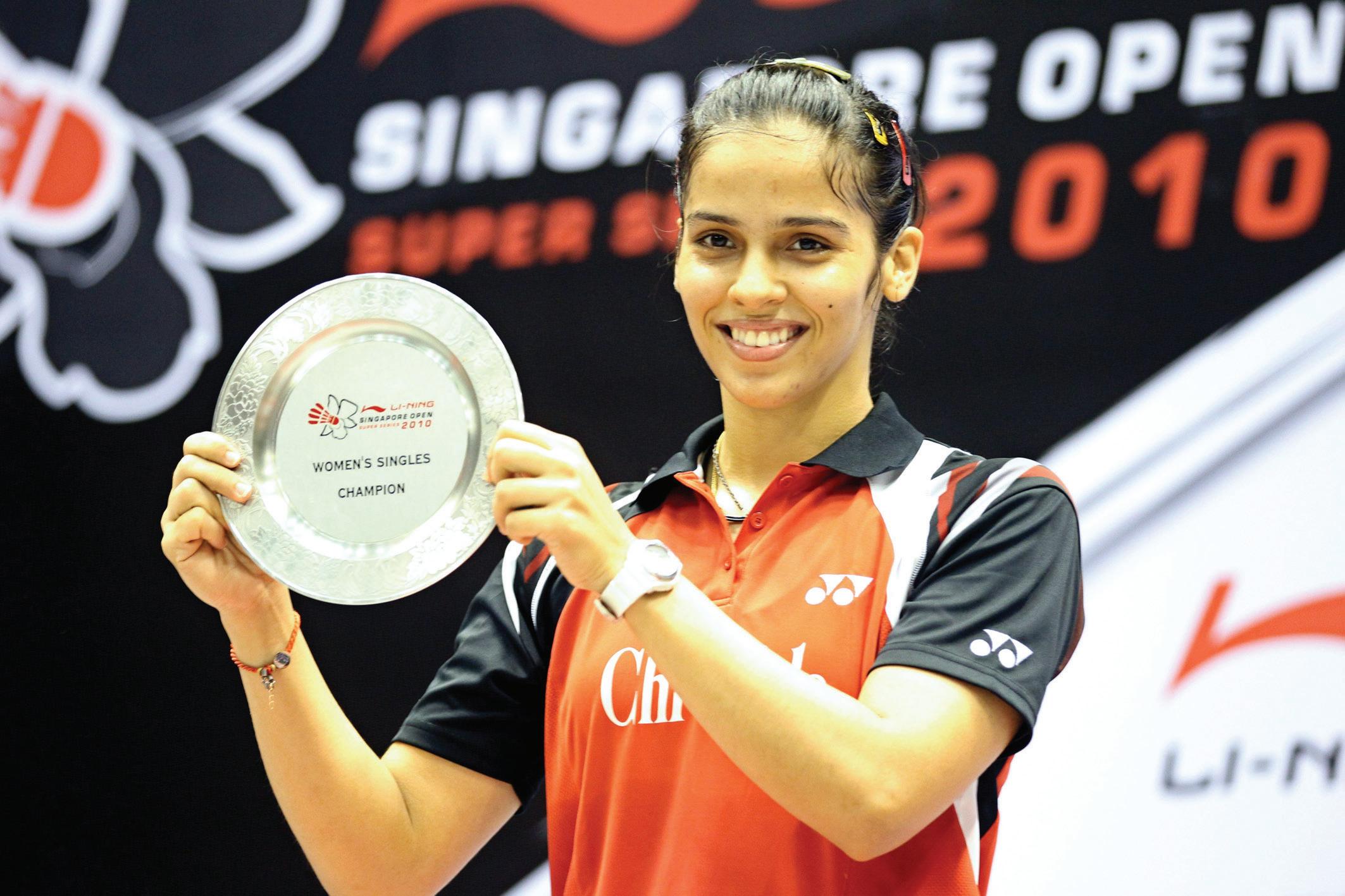
The Congress has all along maintained that the central government, then headed by Rajiv Gandhi, had no role in the release of Anderson, the main accused in the Bhopal gas leak case and the GoM would look at various issues concerning the tragedy.
Delhi-Gurgaon metro starts
THE METRO RAIL service on the 14.47 km Gurgaon-New Delhi route has started, ending the long wait of commuters for an effective transport system connecting this satellite town with the national capital.
The first Metro trains began running simultaneously from the HUDA City Centre in Gurgaon and the Qutub Minar in south Delhi at 8 a.m. The line will be extended in a month to Central Secretariat and Jehangirpuri in north Delhi.
“We have been craving for good public transport for long. There have been several announcements of starting a bus service and construction of the Metro was also going on simultaneously. The inauguration came as a respite and we are hopeful that the line will be connected to other lines of DMRC soon,” said Sukanya, a resident of Heritage city of Gurgaon.
Staff of the Delhi Metro Rail Corporation (DMRC) and some passengers were seen on the first few trains but the crowds started gathering by 11 a.m.
As of now, the entire 14.47 km section is not ready and trains will not initially stop at the Chhattarpur station, which is likely to be opened to the public only by August.
“The construction work on the station was delayed as the land for building the station was made available only in October last year,” said a DMRC spokesperson.
The trains will run at a frequency of 12 minutes on this corridor from 6 a.m. to 11 p.m.
“Five trains have been pressed into service initially and their number will be increased gradually. On June 11, the corridor
had received the statutory safety clearance from the Commissioner of Metro Rail Safety (CMRS) after he inspected the entire stretch,” the spokesperson added.
The 10 stations on this elevated section are HUDA City Centre, IFFCO Chowk, MG Road, Sikanderpur, Guru Dronacharya, Arjangarh, Ghitorni, Sultanpur, Chhattarpur and Qutub Minar.
Despite being the first day of the week, the new Metro line attracted comparatively lesser number of passengers than expected. Metro officials, however, said that more crowds are expected once the complete line becomes operational.
DMRC officials told IANS that the total footfall at the new Metro link was around 12,000 and sale of tokens and smart cards crossed over Rs.1 lakh.
“The new Metro stretch saw a nominal crowd. This line will attract more commuters only when it is extended next month to Central Secretariat and Jehangirpuri,” an official told IANS.
“By 2011 we expect a footfall of 1.6 lakh every day,” the official added. Meanwhile, the Gurgaon administration has planned to run connecting buses on six different routes within the city for Metro passengers, officials said.
“Both AC and non-AC buses will ply on these routes,” Gurgaon Deputy Commissioner Rajender Kataria said. Some routes of the buses have been finalized but the routes and number of buses can be increased depending on the number of passengers.
The minimum fare for the Metro route is Rs.8 and the maximum is Rs.30. With this line coming into service, the Delhi Metro will cover a total stretch of 125 km with 107 stations.
Once it gets connected with the Central Secretariat-Jehangirpuri line in north Delhi by July, the Metro will have greater connectivity. The entire stretch of 45 km will connect north Delhi (Jahangirpuri), south Delhi (Green Park, Saket, AIIMS, Hauz Khas) and Gurgaon (HUDA City Centre).
32 <> JUNE (2) 2010 INDIAN LINK Continued on page 34
India’s Saina Nehwal wins the title at the Singapore Open Badminton Super Series, June 20
Photo: AP

JUNE (2) 2010 <> 33 NATIONAL EDITION
In November last year Delhi Metro started its services to the satellite town of Noida in Uttar Pradesh.
Delhi Metro makes over 1,900 trips on its five lines and covers a distance of 111 km excluding the new metro corridor.
By the October Commonwealth Games, the Metro network is expected to reach nearly all areas of the capital as well as suburbs like Gurgaon, covering nearly 190 km.
About one million commuters use the Metro on weekdays. During the Games, about two million commuters are expected to use the Metro on weekdays.
BEML to deliver first coach to Bangalore Metro in October
State-run BEML (Bharat Earth Movers Ltd) will deliver the first Metro coach to Bangalore Metro Rail Corporation (BMRC) in October for the mass rapid transit service scheduled to commence this year-end, a top company official said.
“We will deliver the first coach to BMRC in October for trial run and additional cars by December for commercial run.

A mock-up (model) of the Metro car will be on display at Anik Kumble circle on M.G. Road from July for public viewing,” BEML chairman and managing director V.R.S. Natarajan told reporters.
The mini-ratna company secured the order worth Rs.1,672 crore for supply of 150 standard gauge Metro cars to BMRC, a joint venture of the state and central government, that will operate the service across this tech hub covering 43 km in the first phase.
The Metro cars are being manufactured at BEML’s Bangalore plant in technical collaboration with Mitsubishi group of Japan and Hyundai Rotem of South Korea.
“The Rs.6,395-crore Bangalore Metro is on schedule. We will supply the first electric train set of three coaches to BMRC by November for commissioning the service,” Natarajan said while briefing the media on the company’s financial performance in fiscal 2009-10.
The first elevated section of the Metro rail will be 7 km between M. Chinnaswamy cricket stadium on M.G. Road in the heart of the city to Byappanahalli in the eastern suburb.
When expanded, the first phase will have two corridors - east-west and north-south - covering 18 km and 25 km, with around 9 km underground in the central parts of the city.
“Each train set will carry about 1,000 commuters in three light weight airconditioned stainless steel coaches. The set will be augmented with three additional coaches to ferry over 2,000 passengers,” Natarajan pointed out.
The company is betting on a second order to supply an additional 63 coaches to BMRC.
“We have been supplying the coaches to Delhi Metro Rail Corporation (DMRC) during the last two years in partnership with Rotem,” Natarajan recalled.
Of the total order for 192 coaches from DMRC, the company delivered 132 cars till fiscal 2009-10.
“We are looking for orders from other cities like Chennai, Hyderabad and Mumbai. We have been pre-qualified for Chennai Metro and will be bidding for Hyderabad Metro along with our partner,” Natarajan added.
The company, which currently has an installed capacity to roll out 25 metro coaches per month, is exploring contract manufacturing opportunities from its competitors.
Nitish-BJP stand-off continues, question mark on alliance
AS TIES BETWEEN the Bharatiya Janata Party (BJP) and Bihar Chief Minister Nitish Kumar remained strained, the BJP held two rounds of discussions on the political situation in Bihar, where it is part of the ruling coalition with the Janata Dal-United, but deferred a decision on whether to continue with the alliance.
Party chief Nitin Gadkari held two meetings in the capital.
His first meeting was with the parliamentary board chairman L.K. Advani and former president Venkaiah Naidu at Advani’s residence. This was followed by the second meeting with BJP Bihar chief C.P.Thakur and Shahnawaz Hussain.
In Patna, the tension was evident where JD-U leader Nitish Kumar and his BJP deputy Sushil Modi avoided each other at the swearing-in-ceremony of the new chief justice of the Patna High Court. Neither of them spoke to each other. Sushil Modi had boycotted a march by Nitish Kumar, who retaliated by cancelling an evening event of the march.
The chief minister, before leaving for a rally, flashed a smile towards reporters and said: “There is no need to take tension. Try to be relaxed.”
The differences between Nitish Kumar and the BJP boiled over June 12 after newspaper advertisements featuring him and Gujarat Chief Minister Narendra Modi appeared in vernacular dailies in Bihar. A peeved Nitish Kumar returned Rs.5 crore to Gujarat given for flood relief by Modi.
Bihar BJP chief C.P. Thakur and party spokesperson Syed Shahnawaz Hussain met with party veteran L.K. Advani to explore the possibilities of calling a truce with the JD-U ahead of assembly elections due in October.
“We are running a vehicle of development in Bihar together with JD-U... We are not against progress, so we are trying to put it back together,” Hussain told reporters here.
Thakur later said the BJP was keen to continue with the 14-year-old alliance, but wanted Nitish Kumar to take some conciliatory steps to end the strain in relations.
Thakur said the state unit was “hurt” at the chief minister’s decision to return the Rs.5 crore flood relief money sent by the Narendra Modi government in Gujarat.

He said the BJP wanted the coalition to continue but the party would not compromise on dignity. “We want the coalition should stay but with dignity,” Thakur told IANS.
Thakur said the JD-U was also in favour of continuing the alliance.
But despite public statements indicating possible rapproachment, sections in both the JD-U and the BJP are reportedly against continuing the alliance, fuelling speculation that the relationship would snap.
BJP spokesperson Syed Shahnawaz
Hussain had met JD-U chief Shard Yadav and asked him to decide on the party’s stand on the alliance. The JD-U has yet to respond.
As the allies bickered, their political rivals had a field day.
Congress spokesman Manish Tewari said the BJP-led NDA was crumbling.
He said the NDA “may exist on paper but it was only matter of time before the remaining constituents also start looking for alternatives”.
Lok Janshakti Party (LJP) leader Ram Vilas Paswan said he would wait and watch to see what Nitish Kumar’s moves were.
“We have to see whether Nitish Kumar is enacting an electoral drama. Otherwise, why this sudden reversal of stand by Nitish Kumar? He had no problem with the BJP, the RSS and Narendra Modi for the past four-and-a-half years,” Paswan told IANS.
Kanishka bombing report no consolation to victim families
THERE IS LITTLE consolation, for the families of 329 Air India Kanishka bombing victims in the Canadian inquiry report
released by Justice John Major who headed the investigations.
Since rivalry between the Royal Canadian Mounted Police (RCMP) and the Canadian Security Intelligence Service (CSIS) had led the plot to succeed and the accused to go scot free, the inquiry has recommended that a new director of Terrorism Prosecutions be created to co-ordinate such cases in the future.
The new director of terrorism prosecutions should “provide relevant legal advice to the Integrated National Security Enforcement Teams and to the RCMP and Canadian Security Intelligence Service,” the 4,000-page report says.
Though the spy agency (CSIS) had successfully traced and wire-taped the plot mastermind Talwinder Singh Parmar testing the bomb, it failed to give the tapes to the RCMP. In fact, it erased the tapes rather than hand them over to the RCMP to successfully prosecute the suspects.
The report says “CSIS should destroy such intelligence after 25 years or a period determined by parliament, but only if the director of CSIS certifies that it is no longer relevant.”
Since the Air India case was tried a single judge, the report recommends up to 16 jurors in future terror cases. In all, the report makes 64 major recommendations.
The Air India Kanishka flight 182 from Montreal to Delhi was blown off mid air near the Irish coast June 23, 1985, killing all 329 people on aboard.
Another bomb, meant for another Air India flight, also went off at Tokyo airport the same day, killing two baggage handlers.
As the Air India trial confirmed, both the bombs were loaded by pro-Khalistan elements at Vancouver airport in two unaccompanied suitcases which were later transferred to the connecting Air India flight and Tokyo-bound flight at Toronto airport.
The bombing mastermind Talwinder Singh Parmar, who wanted to avenge the Indian Army’s action at the Golden Temple in 1984 to flush militants led by Bhindranwale, fled to India where he was killed in a gun battle with the Punjab Police.
Only Inderjit Singh Reyat, who was released last year after spending 15 years in jail, was convicted for the bombing.
Two other suspects - Ajaib Singh Bagri and Ripudaman Singh Malik - were acquitted by the trial court in March 2005.
34 <> JUNE (2) 2010 INDIAN LINK
Continued on page 32
Indian girls enjoy a soaking after a high wave hit the shoreline during high tide in the Arabian Sea along the promenade in Mumbai, India, 15 June, 2010. The monsoon season, which runs from June to September, accounts for about 80 percent of India’s annual rainfall Photo: AP
The verdict created pressure on the Canadian government, to pinpoint the reasons for the worst air tragedy till 9/11, leading to the appointment of the commission under Justice John Major.
The five-volume report, which also carries various academic papers and a number of studies, will pinpoint the causes and systemic failures which led to the worst aviation tragedy till 9/11.
Himalayan tunnel to be engineering marvel
THE FOUNDATION OF the Rohtang tunnel - expected to be the world’s longest tunnel at over 13,000 ft - will be laid June 28, paving the way for round-the-year road access to India’s strategic Ladakh region in Jammu and Kashmir which otherwise remains cut off by snow for half the year.
The 8.8 km-long Himalayan tunnel, hailed as an engineering wonder that is coming up under the Indian Army’s road building wing, will be inaugurated by Congress president Sonia Gandhi, giving wing to her husband and late prime minister Rajiv Gandhi’s dream.
Located in Himachal Pradesh, the tunnel is expected to be ready by 2015 and will serve as a nerve centre for the Indian Army to carry supplies to Ladakh.
“It will be much longer than the present longest tunnels anywhere in the world at altitudes over 2,500 m. The nearest in comparison to the Rohtang Tunnel is the Anzob in Tajikistan which is five kilometres long at an altitude of 3,372 m,” said a spokesperson of the defence ministry that is constructing the “engineering marvel”.
It was a dream of Sonia Gandhi’s late husband Rajiv Gandhi, who had conceived it 26 years ago. She will fly to Rohtang Pass in the Pir Panjal range of mountains, 51 km from the hill town of Manali, to lay the foundation stone of the Rs.1,495 crore tunnel.
Ladakh, a cold desert region, shares borders with China and Pakistan. The Kargil sector of the region was at the centre of the 1999 India-Pakistan military conflict.
The over eight kilometer long mountainous stretch where the tunnel is being built otherwise remains snowbound, cutting off the tribal Lahaul-Spiti Valley in Himachal Pradesh and also the strategically vital Ladakh region from the rest of the country for over six months every year.
The tunnel will take over five years to complete and the ministry of defence says digging for the tunnel remains the most challenging task.
“The tunnel’s design would be novel in many ways,” said the defence ministry spokesperson.
Its distance and the “rarefied atmosphere” at the heights it is located at, the official said, make the tunnel a “landmark in the making”.
“The tunnel would incorporate semitransverse ventilation system,” he said, boasting of large fans that would circulate air in and out throughout the tunnel length. With a horseshoe shaped cross-section, the tunnel will be 11.25 m wide at road
Australian Chapter
The Institute of Chartered Accountants of India

level. That means there will be ample room for two-way traffic travelling at a maximum speed of 80 kmph.
The Rohtang tunnel will have more to offer. It is expected to reduce the road distance to Ladakh by approximately 48 km and save travel time of about four hours.
“It will open up new vistas of trade and tourism and generate jobs for the benefit of the local population (in the Lahaul-Spiti valley),” said the official.
Defence Minister A.K. Antony, his deputy M.M. Pallam Raju, the chief ministers of Himachal Pradesh and Jammu and Kashmir - Prem Kumar Dhumal and Omar Abdullah - and Steel Minister Virbhadra Singh will be present at the inaugural ceremony.
The contract for the tunnel has been obtained by Austrian company Strabag and India’s Afcons.
The longest road tunnel in India at present is the 2.8 km-long Jawahar Tunnel in Jammu and Kashmir at an altitude of 2,209 m.
Botswana lays out red carpet for Bollywood
Botswana, a South African nation known for its wildlife and where Amitabh Bachchan and Aishwarya Rai are household names, is aggressively wooing the Indian film industry to shoot their highly popular films in the country and boost its economy.
“We believe that Bollywood can help us boost our economy and we can jointly work for the benefit of each other,” said Bostwana Vice President Mompfati Merafhe, who ended his four-day India visit recently. He met producers from The Film & Television Producers Guild of India and board members of the Film City and asked them to come and explore the landscapes of Botswana.
“There are a number of challenges we are facing right now, including technological and lack of proper resources, but we have plenty of talent in the country. Many youngsters in our country are educated in cinema studies and are now waiting for an opportunity to
showcase their skills,” he added.
Merafhe, a retired army officer, revealed that Botswana has myriad exotic locations that Bollywood will find interesting.
“Our country can offer various beautiful locations - from wildlife to scenic beauty, it has everything,” he said.
Malebogo Morakalad, business development manager, Botswana Tourism Organisation, also assured they will provide easy access and services at subsidised rates to Indian film crews interested in filming there.
“We are ready to provide logistical arrangements and convenience in getting filming permits. We will also provide facilities at subsidised rates. Although the subsidised amounts are not fixed at the moment, but that can be taken care of when we speak to the film producers concerned. It will depend upon the magnitude of the film,” Morakalad told IANS.
Hindi movies are quite popular in the country that has a population of close to 1.8 million, with a large population of Indian professionals. This is the reason Morakalad feels that Bollywood will be a hit there.
Hindi film DVDs are sold in the country and some Hindi films also have theatrical releases.
“Sometimes, Hindi films are shown in the theatres but usually it is the DVDs that people go for. These films are not only popular with the Indians in Botswana but also the local people there,” said Morakalad.
“Aishwarya Rai and Amitabh Bachchan are very famous in Botswana,” she added.
The country has a history of filmmaking but largely of wildlife. In the global arena, it is best known for the 1980 movie
“The Gods Must Be Crazy”, which was set there. Director Jamie Uys’ film created history in the US by running in the theaters for almost three years and was the highest grossing foreign film ever released in US during that time.
Till now, no Indian film has been shot in the country, but Botswana is now making an effort to reach out to the biggest film producing industry in the world.
The idea of wooing Bollywood came when Indian Vice President Hamid Ansari visited the South African country in January and was so enraptured by the wild environs of the country that he said that he would certainly lobby for Botswana in India.
“India boasts the largest film production in the world, which specialises in the most beautiful of locations. They should certainly take to this most exotic of locations. To the extent that I can carry this message, I will do so,” Ansari had said at that time.
The Botswana leader has held extensive discussions with his countepart in New Delhi. He witnessed the signing of three agreements, which included cooperation in science and technology and small, medium and micro enterprises.
He also met Indian President Pratibha Patil and Prime Minister Manmohan Singh.
In both Mumbai and Delhi, Merafhe interacted with the captains of Indian industry in a bid to encourage bilateral trade.
Get Ready with Year End Accounting Needs
After very successful workshop on Tax Effect Accounting, Chapter is proud to announce Workshop on ‘Consolidation’ (per Income Tax Act and Corporations Act)
Date: Saturday, 26 June 2010

Time: 09:30 am to 01:00 pm (CPD Hours 3.5)
Venue: Wenty Leagues Club, WentworthVille
Presenter: Shripat Surana, BCOMM FCA (I) CPA
DFS (FP) ATIA, Principal RQA Accountants
Cost-Members: $95
(Early Bird Offer $75) – Save $20
Cost-Non-Members: $250
(Early Bird Offer $195) – Save $55
Light Food and Drinks are provided.
It will also include relevant tips on Excel to do effective consolidation by using Excel.
Members & Their families are also invited for first Hawkesbury River Cruise scheduled for 17th July 2010.
For RSVP and further details please visit our website www.icai.org.au
JUNE (2) 2010 <> 35 NATIONAL EDITION
IANS
Thinking of switching…? Indian cricketer Zaheer Khan takes a football break during the Asia Cup Tournament in Dambulla, Sri Lanka. India, Pakistan, Bangladesh and Sri Lanka are taking part in the competition.
Photo: AP
Glorious glimpses into rural Rajpur
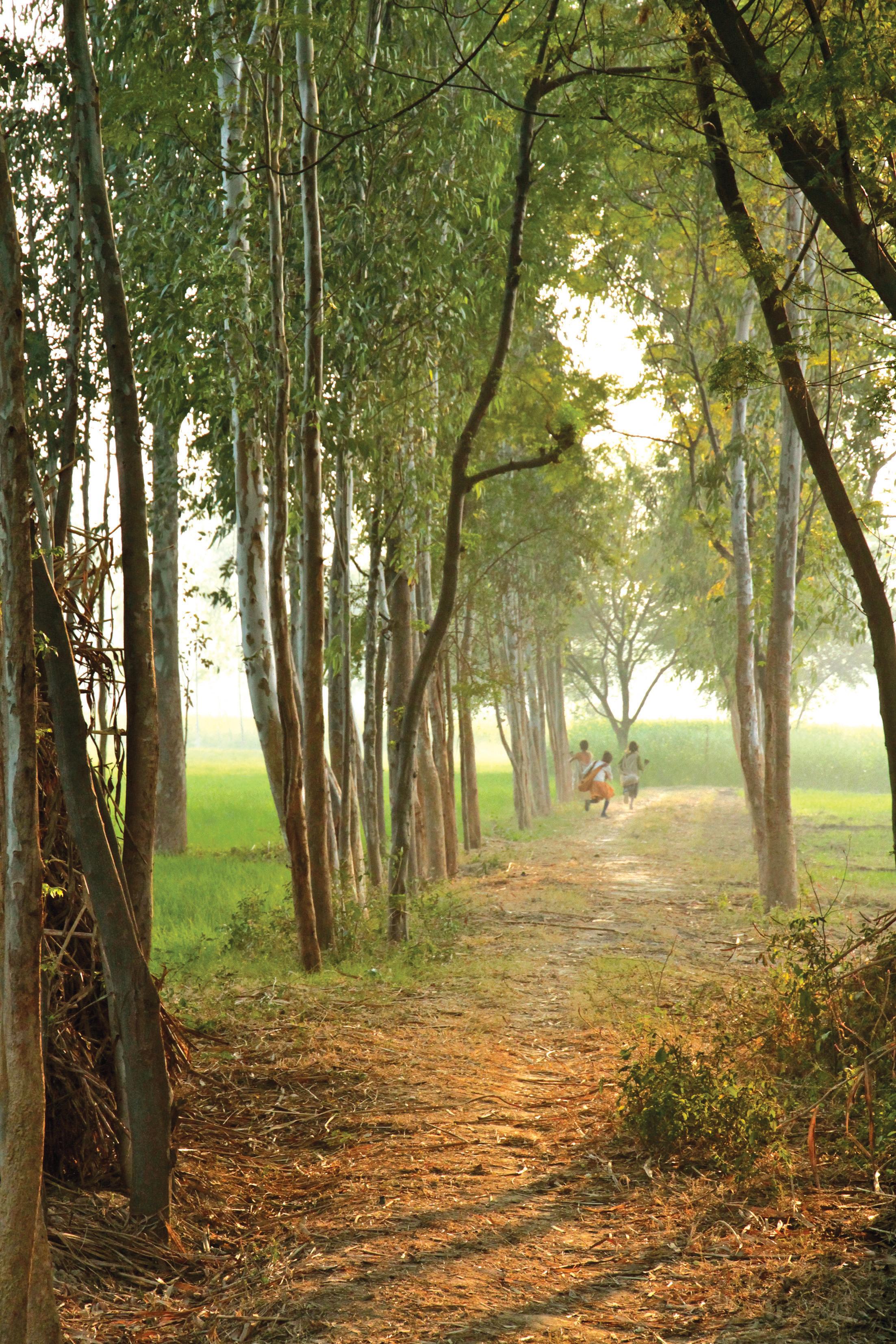
A young Australian photographer captures vivid village images in an exhibition aimed at raising money for its inhabitants

She says she is more comfortable living in the village than even in Indian cities, where she often gets hassled by people being a foreigner.
BY PREETI KANNAN


From the aroma of spices to the village belle to lush mustard fields, the sights, smells and colours of India have all been captured and recreated in Dominique Travers’ modest photography show in Surry Hills. True to its name, a real cow and some hay were part of the props of the opening day of Walk the cow – A journey into the heart of village India, on June 16. Whilst the cow may have made its way back to its owner, the half-eaten hay contrasted by brightly-coloured spices and spotless white-washed walls remains.
Dominique’s first exhibition is replete with photographs taken in a village called Rajpur in Uttar Pradesh, which she now calls home. Strangely, the 24-year-old, who happily traded her Bachelors in Fine Arts in UNSW for a life of spirituality, rusticity and simplicity, feels closer to Rajpur and its inhabitants than she does with Sydneysiders.
“I travelled to India for the first time when I was 19 to study Yoga in Rishikesh, which was then voted the No. 1 place to ‘find yourself’. Later I travelled to Rajpur and realised that everything I was ever looking for was in this village. In India there is a push for technology now and life is constantly changing so much. But people in this village are so content and they have so much to teach us. This village, for me, is like going back to tradition, going back to the gods of the earth,” she told Indian Link
Dominique’s documentary photographs – 25 of which are on sale at the gallery, reflect the strong connection she has with the village and villagers. Portraits of vegetable vendors, fields, children, cows, goats, the forest landscape, harvesting and village streets – everything reflects the way Dominique views life in the village, the community and the people through the lens of her camera.
“I see everything through the lens of my camera and I think that is the best way to express myself,” says Dominique, who has mastered Indian cooking, yoga and even Hindi.
“When you sit around people who do not speak English, you learn the language naturally,” she quips.
So how did her family react when she decided to discontinue formal education to live in a village?
“They have been extremely supportive. They see how happy I am. There is, of course, a lot of emphasis on formal education and even a Bachelors degree is just not enough. However, I am a student of life and I have taught myself. My education is mostly through my own experiences,” she says.
Besides showcasing her talent, the exhibition has other purposes – to raise awareness and raise money. Fifty percent of the proceeds from the exhibition will be donated to the Yatharth Yog Ashram (Community of Natural Unity) Foundation in Rajpur, where Dominique is a Yoga teacher. The three-year-old ashram is run by an Indian acquaintance and a Belgian friend, whom she met while travelling in India. The ashram, which teaches yoga, ayurveda, cooking, organic farming, besides other things natural, runs on donations. People, who learn about it mostly through word of mouth, come and live in the ashram to learn and experience different things.
“We want Westerners to come so they can benefit and experience what I have seen. Our stronger message is living natural and living in rhythm with nature. Visitors can work in the organic fields and gardens, teach children of the neighbouring villages, prepare food for guests and visitors and build clay huts. Being so close to the food you eat is sort of spirituality. I see god in food and find it harder to see it in McDonalds,” she says.
The ashram has different programmes and is run free of charge. It instead, welcomes donations for its different projects, which includes helping villagers build a bio-gas plant to create their own electricity, as well as educating them about organic farming. Dominique hopes that they can build a school for the community in the future. The exhibition is also trying to raise awareness about the community, the ashram and the projects they are trying to implement. “What we are doing is something small and is at the grassroots level. We want to keep the village life intact, and this ashram and the projects are a bit of a labour of love,” she says.
Walk the Cow was inspired by a 700 km walk with the cow, which Dominique was planning to undertake during her recent trip to India. Unfortunately the cow, which had been presented to her by an Indian friend, became ill and died before they started the journey to bring it to Uttar Pradesh. The exhibition runs till June 27.
Dominique Travers Walk the Cow: A journey into the heart of village India MILS Gallery, 15 Randle St, Surry Hills NSW 2010 www.milsgallery.com
Gallery hours Wed-Fri 5.30-7.00pm, Sat-Sun 12 noon-4pm

36 <> JUNE (2) 2010 INDIAN LINK
“I travelled to Rajpur and realised that everything I was ever looking for was in this village. People here are so content and they have so much to teach us. This village, for me, is like going back to tradition, going back to the gods of the earth”
INDOPHILE
Dominique Travers













JUNE (2) 2010 <> 37 NATIONAL EDITION
1. Run
2. Heroes
3. Cabbage Man
4. Goat Friends
5. The Flour Mill
www.indianlink.com.au 1 2 3 5 4
(Below) Dominique Travers at the opening of the exhibition
COMPENSATION LAWYERS


If you have suffered an injury at work, a public place, or in your car, you may be entitled to up to double your compensation entitlements through Top Up Insurance. The professional team at Sanford Legal has recovered millions of dollars from Insurance companies and is committed to achieving the best results for you.
Call Sanford Legal today for your first free consultation.



Ph: 1300 842 784
Level 2, 5 Belmore Street, Burwood NSW 2134 www.sanfordlegal.com.au
Are traditions sacrosanct?
Ad infinitum the debate rages on, as to whether traditions should remain sacrosanct, or should adapt to changing times
BY NOEL G DE SOUZA
Every human group develops its own mythology, ways of doing things and celebrating certain events. These are its traditions. Old societies like those in India have long entrenched traditions. Whilst traditions may be difficult to change, there is a constant battle between modernists and traditionalists. There are many who consider that traditions are unalterable just because they have been around for a long time. They consider traditions to be sacrosanct, and that no one has a right to change them.
Tradition even exists in endeavours like farming. There have been battles between traditional and modern ways of farming. During the days when the Green Revolution was being promoted in India, traditional farmers were a difficult lot to convince about the advantages that new methods, which included new strains of crops, would provide. The same can still be said with regard to medicine in remote rural parts of India.
Where social norms are concerned, privileged groups have mostly tried to stick to traditions which favour them, whilst disadvantaged groups battle for change. The advent of democracy and the Indian constitution promoted modernisation and this is not wholly palatable to certain privileged groups. For example, the very notion that all humans are equal is anthema to those who still believe in a feudal society.
Modernisation creates friction between young adults and their elders. The elders may want to stick to traditions, whilst their children are inclined to pursue modern paths. Then there is also the question of gender. Feudal groups have a tendency of not accepting females as equals. Females have, therefore, been traditionally denied education equal to that of males in certain societies and are expected to obey strict rules and commands.
Major conflicts between traditionalists and modernists (generally initiated by the young) have dramatically changed in countries like Japan in the mid-nineteenth century (the Meiji Restoration) and in China a century later, which established the People’s Republic. The latest revolution against a feudal order is that of Nepal. These revolutions were cultural and prove the point that no traditions, however useful, are sacrosanct.
Many of the current conflicts in India are between traditionalists and modernists, that is, between feudalism and those who strive for an egalitarian society. In India, the focus
in many rural areas is on marriage. Marriage is considered as the domain of the parents and they are pressured to follow traditional lines in choosing partners for their offspring.
The clan councils (khap panchayats) of northern India follow the old dictum that marriages within the same clan (gotra) or even within the same village are taboo. That is because all children of the same clan are considered as siblings. There are now demands from village elders that this tradition be incorporated into India’s marriage laws.
There are two difficulties: the first of these is that in large parts of India marriage within the same group (such as a sub-caste) is not only permitted but actually favoured; thus, marriages between close relatives in many regions are not uncommon. The next problem is that by prohibiting certain unions, the constitutional rights of adult Indians could get impinged upon.

India has a variety of marriage laws to satisfy various religious groups (these “personal” laws were codified during British times). However, the Special Marriage Act of 1954 through which a couple can get married in a civil ceremony, overrides religious traditions.
The state of Goa has a uniform civil marriage system (inherited from the Portuguese Civil Code, 1867) as being the only legal marriage ceremony. There have been instances when people from other states have gone to Goa to try to get married and have been subjected to that code. An example is that of the famous Indian actor Sanjay Dutt who in 2008, attempted but later withdrew, trying to get married to his thengirlfriend Manyata in Goa. Non-Goans living in Goa are subjected to the civil code in force in Goa.
Traditionalists are now attempting to include caste in census, a move which has divided the central cabinet. Opponents consider this as being “regressive”. Opposing this proposal, Shiv Sena supremo Bal Thackeray rightly asks what would happen when the husband belongs to one caste and the wife to another. Also, what about several casteless religions and even casteless Hindu sects?
A person’s caste is very often what that individual declares his or her caste to be and this mostly originates from that individual’s family tradition. There can be no scientifically verifiable method to disprove such a claim.
Creating legal codes to satisfy India’s diversity of norms and traditions would be very difficult, particularly as there would be constitutional difficulties about the transgression of individual rights. When couples from differing backgrounds want to get married, an increasing number can be expected to opt for the Special Marriage Act.
38 <> JUNE (2) 2010 INDIAN LINK
OPINION www.indianlink.com.au
Where social norms are concerned, privileged groups have mostly tried to stick to traditions which favour them, whilst disadvantaged groups battle for change
The solution to corruption
Raising salaries isn’t the best way of reducing dishonesty in the government sector; but cutting down bureaucracy in the system could help
a business or perform other routine day-today tasks.
BY SUKRIT SABHLOK

The political class in India is largely populated by criminals. If in doubt, simply look at Transparency International’s rating of India, which ranks the country as even more corrupt than China.
Elections come and go. But corruption is a constant; it never seems to go anywhere. Some have suggested, however, that a way to eliminate corruption is to boost public sector salaries. Supposedly, making government officials richer will make them less tempted to take bribes. But in reality, there is really no logical limit to how far this argument could be pushed. At what point do we draw the line? $100,000? $200,000?
To take an example of Singapore, ministers receive about $1 million a year. Sure, Singapore is a low-corruption society, but wealthy politicians are not the reason why.
There is nothing stopping government employees from taking money, regardless of how wealthy they may be. All we can be confident of is that individuals will pursue their self-interest as they perceive it, and if the probability of detection is low, political corruption will continue.
Consider what happened in Indonesia when judicial salaries were raised. Although the Supreme Court’s budget went from 79.5 billion Rupiah in 2002 to 153 billion Rupiah in 2004, 1.2 trillion in 2005, 2.2 trillion in 2006 and finally 3 trillion in 2007, academics Simon Butt and Tim Lindsey observe that “increased salaries, even combined with strong new corruption laws, have apparently failed to reduce corruption.” The judiciary still remains the most corrupt institution in Indonesia.
Increasing salaries just ends up being a reward for bad behaviour. Even if some officials take bribes because their low salaries ‘force’ them to do so, relying on them to stop taking bribes because their salaries have been increased is hardly a foolproof policy. Rather than looting taxpayers to arbitrarily enrich government agents in the mere hope of reducing corruption, what we need is a policy that is guaranteed to get the job done.
And that policy can be summed up in one word: freedom. This means moving towards the free market, rather than socialism and corporatism. It means eliminating reams of paperwork and unnecessary complexity in the legal system. The ultimate aim is to do away with the need for citizens to supplicate in front of government agents just to set up
An example will help illustrate the point. Suppose you intend starting a business, but came up against a babu who demands Rs 1000 more as the price for granting you a license. “All right,” you think, “I’ll pay him because I really need the income from my business.”

The problem here wasn’t the bribe per se, it was the onerous licensing system that allowed the bureaucrat to exercise power over the small businessman. As David Henderson of the Mises Institute explains, “A necessary condition for corruption is that someone has power to make decisions for others, decisions that those others can’t perfectly monitor. The reason so much corruption occurs in government is that government officials hand out so much in the form of subsidies, tax breaks, permits and regulatory exceptions”. Therefore, the way to reduce corruption is to start removing discretionary powers that facilitate extraction of bribes.
Now we are in a position to understand why countries such as Hong Kong, Singapore and Australia have achieved such success in stamping out corruption: they invariably tend to prioritize the market economy, at least in comparison to India.

The other argument often used in favour of raising salaries goes as follows: we should pay public sector employees more, because this will attract the best and brightest into politics. This is an equally nonsensical argument. Why would we want to encourage India’s smartest men and women to enter politics? Far better to have them go into private sector jobs where they actually create something of value. Bill Gates has done more to improve the standard of living for the common man through his work in Microsoft than all the prime ministers of India combined.
It should be remembered that politicians in a democracy are inevitably thinking about their short-term careers, rather than what is best for the country in the long-term. As Hans-Hermann Hoppe argues in his book Democracy: The God that Failed, politicians are essentially caretakers who think from one electoral cycle to the next. Thus, it is in their interests to extract the maximum benefits they can from taxpayers before they are voted out at the next election. It is emphatically not in their interests to put in place long-term reforms that will improve the overall health of the nation.
The great philosopher Cicero reminds us that “The more laws, the less justice”. We should heed his words.
JUNE (2) 2010 <> 39 NATIONAL EDITION
The ultimate aim is to do away with the need for citizens to supplicate in front of government agents just to set up a business or perform other routine day-to-day task
OPINION www.indianlink.com.au FOR TRADE ENQUIRIES. G S PACIFIC MARKETING (AUST) PTY LTD Phone: 02 8860 9659. Fax: 02 9629 7978 Mobile :0404 491 870 Email : gs_pacific@bigpond.com Available in all leading stores in Sydney
The digital home
BY SUNIL RANADIVE

Today home computers have become less about information processing and more about entertainment and keeping in touch. An increase in the usage of digital music and videos is driving a need for even more storage space in your home computer. And with many homes now using more than one computer, picture music and video sharing is an essential requirement. Though we’ve yet to see internet-connected refrigerators go mainstream, entertainment devices like Blu-Ray players and gaming consoles such as the Nintendo Wii, Sony Play Station 3 or Microsoft Xbox 360 now want internet access.
A cable or DSL home internet can be shared using a wired or wireless connection for these devices. A wireless connection is preferred for devices like game consoles. Many folk setting up wireless home networks rush through the job to get their internet connectivity working as quickly as possible. That’s totally understandable, but it is also quite risky as numerous security problems can result. Today’s Wi-Fi networking products don’t always help the situation as configuring their security features can be time-consuming and non-intuitive. If one is not familiar with the security settings of wireless networking, it is strongly recommended to seek professional help.
One of the basic functions that can be accomplished with internet connection on game consoles is updating the system software. These updates provide additional features and security patches. From a user’s perspective, the internet connection enables communication with friends, downloading games and videos. However, the main reason a youngster would want internet access on a game console is for online multiplayer gaming. The online game experience certainly takes them to the next level, and they wouldn’t want a game that does not include online play.

Now does that leave out the parents? Well, surely many parents would enjoy online games as much as their

children, but relaxing on the couch is definitely their preferred method for consuming video content; and while there are many different ways to get video onto a PC, users looking to sit in front of the TV instead of a keyboard have had few options to stream media until relatively recently. Fortunately, there’s been an explosion in media streaming devices, and thanks to a technology called DLNA, streaming media around the home now requires less effort.
DLNA is short for Digital Living Network Alliance, and defines a standard for moving movies, photos, music and other media from device to device. DLNA servers can store media in one location and, without any setup or configuration, can stream the media to DLNA compliant players, such as the PS3 or Xbox 360. The big draw behind DLNA is to throw away major configuration, and create a simplistic way for consumers to get media from one device to another.
More and more TV models are now DLNA complaint, they have a LAN port or support wireless connection. If you are in the market for a TV try to purchase one which has both wired and wireless connectivity. Wireless only devices are much more likely to experience problems in large homes. They may also drop connections for no apparent reason, which can cause replay or stop the streaming altogether. Equipped with a DLNA compliant TV, it is now time to consolidate your digital content i.e. photos, music and videos. An easy way to do this is to use a DLNA compliant Networked Attached Storage (NAS). A NAS can be accessed anytime without having to turn on your PC. When you create your Digital Media Library make it DLNA compliant too, JPEG (photos), LPCM (audio) and MPEG2 (video). Although they are optional for home devices, MP3 (audio), WMV (video) and MPEG4 (video) are almost always supported by DLNA-certified devices as well. It is extremely important to perform regular backups of all of your media or make sure it’s stored on two different hard disks.
You are now ready to share your photos with your friends on a large TV screen in your living room instead of holing up in the study in front of a little PC monitor while the kids enjoy their online games.

40 <> JUNE (2) 2010
TECHGURU www.indianlink.com.au
Modern technology has now provided connectivity solutions within the home, which will make you less reliant on only your faithful PC
It is extremely important to perform regular backups of all of your media or make sure it’s stored on two different hard disks
We beat the best with no less — TAI offers best Airfares and Packages to suite all budgets.
We Specialise in: Competitive airfares to India, Indian Sub-continent, Fiji, Middle East, Asia, Europe, South America, North America & Africa. TAI— offers Special Round the World Fares and packages to suite both individual and group travel. TAI is focused on Tailor made and prepackaged tours.
Are you looking for air tickets from India our partnered offices within India can organize any travel or tours within India and prepaid tickets.
Travel Air International now offers language support,
Languages: English, Hindi, Tamil, Punjabi, Arabic
Head Office
Westmead Office
Phone: +61 2 9633-2045
Fax: +61 2 9635-3829
Email: sales@travelairinternational.com
Address: Daher Centre, Level 1, Suite 24, 163 –171 Hawkesbury Rd, Westmead NSW 2145
TOURS TO INDIA
while you are visiting family or friends why not getaway and do a private tour. half day tours starting from $35 Per Person
Full Day Tours starting from $90 Per Person
Call us today take a pick from our range of city tours. Call 9633-2045 and find out today
Travel Air International—Branch


Liverpool Office
Phone: +61 2 9734-9333

Fax: +61 2 9734-9322
Email: sales.liv@travelairinternational.com
Address: 50 Railway Street, Liverpool NSW 2170
www.travelairinternational.com
JUNE (2) 2010 <> 41 NATIONAL EDITION
Think Travel



42 <> JUNE (2) 2010 INDIAN LINK “FUTURE KIDS EDUCATION” 99% Success Affordable Private Tutoring Qualified, Registered, Caring Teachers Groups & 1 on 1Tuition K -12 All Subjects & Years Essays, Projects, Homework’s 2/4 Beatrice Street Auburn NSW 0416 078 494 – 0410 009 411 www.Futurekidseducation.com Futurekidseducation@live.com.au Staff Required Sydney carwash looking for workers. Experience mandatory. Pl. contact at 347, Windsor Road, Baulkam Hills, NSW 2153 Ph – 02 9686 8868 0432297934
Supporting the Soccerblues
It’s just a game, but a lot of fun and one that teaches important lessons
BY SHERYL DIXIT

Spread out, spread out!
Watch the ball!
Come on, go!
Get closer, get closer…
Good kick!
Awww!
Nice try!
Well done!
Yes, it’s a football match. And if you think we’re watching the FIFA World Cup, well, you could be right. Because the game’s as important to this bunch of Under 6s Kookaburras, playing their Saturday morning game against another group of little people, as the World Cup is to die-hard fans of the Socceroos.

We’re all rooting for our little stars, all us proud parents yelling at the sidelines as our young team in blue run around the field attempting (or in the case of my son, avoiding) getting close to the ball. There are cries of encouragement, instructions, commendations, that sometimes makes it hard for the little tykes to concentrate on the game. But it’s all a part of the game, and despite their score often matching that of the Socceroos debut game against Germany, we are all immensely proud of them.
They kick, dribble, defend with enthusiasm, and during the ride back home I am treated to splendorous fiction of goals scored and kicks to the other end of the field
My son is a part of this seven-sided football team, including an extremely talented young girl. When faced with an activity in which he could participate on starting school, football seemed a good alternative to tennis, karate or nothing at all. He was also very interested in the sport, and the studded boots in particular held a charming fascination, which exists to this day. He seems taller and prouder in those shoes which have got grimier and more worn over the past couple of months. The ankle and shin guards were an unexpected bonus, and when worn on the arm, are a fair substitute for superhero armoury.
We religiously go to training on Thursdays, battling the chilly winter air, while the team runs around with the nonchalance of a summertime play. For the most part they follow the instructions of our amazingly patient and encouraging coach and assistant coach, occasionally taking time out to have a little private scuffle in the sidelines. They kick, dribble, defend with enthusiasm, and during the ride back home I am treated to splendorous fiction of goals scored and kicks to the
other end of the field. Which strangely, still need to manifest into reality when the actual games are played on Saturdays.
Aah, those Saturday games! Despite my efforts of leaving the house well in time, I am yet to make it to a match at the stipulated half an hour before kick-off. Perhaps unfairly, I blame it on the concept of Indian Standard Time, which dictates that one is expected to arrive at your destination a minimum of ten minutes too late. What takes the longest and a good bit of effort is pulling on the socks and tying up the shoes, a technique that I am just about beginning to master. I remember our first training session where I gazed at the shinguards and boots in mystification, until one of the mums explained the intricacies of how they go onto my impatient son’s feet.
Once we get to the venue and the jerseys are on, our young heroes line up for an invigorating chat with the coach and then they’re off on the field. It’s the best sight to see them gravely shake hands with the other team, a bunch of tykes not much taller than them, also clad in oversized jerseys and shorts that look like they could fall off any minute. The referee blows his whistle and they’re off!
This is the part that I most enjoy, the game itself. Both teams run around the field with enthusiasm, getting into little scrimmages, kicking the ball in all directions,
occasionally manoeuvring the ball towards their own goal and causing the coaches to have several nervous moments. And there are the families on the sidelines, with parents, grandparents and siblings sometimes yelling out instructions that drown out even the more rational ones by the coaches. Players are called off the field to replace others, and everyone gets a chance no matter how adept they are at the game.
And what is most heartening are the little scenes of camaraderie that we see, in teammates hugging each other after scoring a goal. Or a fallen player being given a hand up by a team member who’s much littler in size. Or of a player being gently manoeuvred to face the right direction by a team mate, through the simple expedient of jersey tugging. Or one little boy advising another who’s retired hurt, that it could be worse, he could have broken a leg! There are so many of these incidents too numerous to recount which remind me once again, that children have the innocence and wisdom of life that as adults, it takes us years to relearn.
And finally, at the end of the game, it’s the moment of glory our young stars are waiting for – awarding of the Trophy. This is awarded to the best player or the one who’s tried the hardest, as the case may be. The team gathers around the coach, their faces alight with anticipation, and when the winner is announced, the winner’s look of triumph, satisfaction and sometimes disbelief, is one of the best things about the game. They are surrounded by their teammates, parents and spectators, and are heartily and sincerely congratulated. There’s no doubt that the trophy will dominate their lives for the rest of the week, and provide a proud topic for ‘News’ at school.
I have to say here, that while the children show enthusiasm, it’s the parents that also make the difference. They are involved, supportive and enthusiastic, not just towards their own children, but to every child on the team. Each child who comes off the field is given an encouraging chat and pat and at the end of the game, they are all commended for their effort. Even the coach and assistant coach who have watched with despair as a player looks at the ball slowly gliding past him straight into the goal, do no more than make a couple of agitated noises. The children are always instructed, never reprimanded, which to me is a sound technique as it keeps them enthusiastic about the game.

At a young age, these children are learning a lot –about playing as a team, being comrades, sportsmanship, game strategy, getting physical exercise, and most important of all, having fun. And so are we!
Little kicks, little kicks…
That’s it, go!
C’mon, kick!
Turn around, turn around!
Goal!
Yay, hooray!
Well done!
Great job!
LIFESTYLE www.indianlink.com.au
Time travel
A trip down memory lane becomes a lingering journey of vivid experiences and gentle nostalgia
BY APARNA JACOB
How is it that in just a few hours you can make the crossing from one world to the

At 3:30 pm the plane lifts from Sydney airport into the ice blue sky. It is 19 degrees and the air is sharp in our lungs.
At 2:30 am we disembark in Mumbai. We emerge from the airport and walk into the city’s large sweaty embrace. It is 35 degrees and the heat swathes us like a steamy towel.
At 5 am, I am in my mother’s kitchen, eating a plate of lamb biryani that has been cooking in a giant cauldron most of the night. The meat so readily slipping off the bone, the fried onions so crisp and sweet in my mouth and the long grained basmati so fragrant from the spices.
It makes my head spin.
I sleep in my old room, surrounded by my dusty books, desk and mirror. I sleep the sleep of the dead and dream dreams of Sydney. Dreams know nothing about time travel and often get left behind.
***
The next week we fly to the land of my childhood. We fly to Kerala where I’d spent so many summers growing brown from swimming in the river, rough footed from walking barefoot in the red dirt.

From the plane we see a land so vast and so verdant that it makes you stare. Paddy fields quilt the landscape interspersed by mighty rivers. Palm trees waving their fronds, jackfruits and pendant green mangoes.
The air is abuzz with the hum of cicadas. Rising, rising, then falling.
***
My brother is getting married.
We stand steaming gently in the still heat of a small church with low ceilings. Sweat pours from every pore. The women have wrapped themselves in expensive silks which wilt in the heat. Hairdos collapse, makeup slides off faces.
My brother wears a very pale and very expensive suit. He is sweating through his suit. Sweat seeps out in large roaming patterns on his shoulders, back and under
his arms. But his face stays calm and as he stands at the altar, he smiles all around, a dimple appearing and disappearing. Beyond his head, in the corner, is the stone basin in which he was baptised. In this church. 27 years ago. I was 3 then and the church had seemed enormous.
We had grown. The church had not.
I try to catch my brother’s eye but he has his arm around his new bride and is smiling into the camera, the strange dimple high on his right cheek.
Everyone sees the heft of his shoulders, how he is taller than his father. I see a boy in navy shorts whom I taught to ride a bicycle, who never did his homework. ***
The next day we pile into a cousin’s car and drive to the river. More cousins are waiting in the water with their husbands, wives and children. We leap off the embankment into the cool depths of the river. The tug of its current feels familiar. I still remember how to open my eyes underwater and see the shimmering sand bed. I catch the waterweeds floating past.
A cousin kisses me on the cheek and says in my ear, “Remember?”
This river has always flowed past these houses. Only the last time we came here we were thin limbed children with no husbands or wives or children. ***
We fly back into Mumbai, the city fringed by a muddy sea, its grey slums like scales on a great sea creature.
Our taxi plunges into the cacophony of other yellow hooded taxis, rickshaws and red buses. We are driving through Dharavi, past sagging buildings full of people, people sleeping on the pavements, people perched on top of trucks, people spilling out of trains. Through Ghatkopar, Chembur, BARC, over various bridges.
Nothing changes. New and old constantly negate each other here, to maintain an unchanging equilibrium.
The next day I take the Harbour Line to Victoria Terminus. Every station has a story. Kurla, Tilak Nagar, Guru Tej Bahadur Nagar, Wadala, Sandhurst Road (Sandas Road), Masjid.
I get off at VT, the heart of maximum city. I go to the Museum, Jehangir Art Gallery, NGMA, the Gateway of India, Taj, the Queen’s Necklace. I ask a cab driver to
drive me around my old haunts: Colaba, St. Xavier’s College, past the Press Club, Flora Fountain, Oval Maidan, Churchgate. I thank him in Hindi.
“Aap ki Hindi unki jaise ho gayee hai,” he says gesturing to foreigners standing nearby.
***
In my last week in Mumbai, I go in search of my favourite chaatwaala. He’s standing in his old spot, his familiar trim frame in white pyjamas and a white shirt with sleeves rolled up. His hands are a blur as he mixes enormous quantities of bhel and sev and crushes papadis onto plates. I’d interviewed him once long ago for a feature story. But now, I stand on the fringes of the crowd uncertain, rehearsing my line in Hindi in my head. Madanlaal looks in my direction and under his thick white moustache is a shy smile.
“Madanlaalji, aapko yaad hai maine aapka interview kiya tha?”
“Haanji, aath saal pehle.”
I introduce my Australian husband and my friend and we eat paani puris, and he throws in a few complimentary puris It doesn’t feel like eight years.
***
On my last day at home, I smell the hot morning chappatis one last time. I open the fridge armed with a spoon and eat a bit of everything I can find. Mango chutney, chole, cabbage toran, beans, one idli, sambhar, a golden mango, one gulab jamun, one laddoo, one last jalebi and one samosa
My stomach feels heavy and so does my heart. My mother clicks her tongue in
portal, Mumbai Airport, ready to fly to the other world and leave behind everything I’ve grown up on, all that is most familiar to me, all that has made me, me.
Once again we fly through time; Bombay, Singapore, Perth, Sydney. We set and reset clocks. We fast forward through a day and are served lunch for breakfast and dinner for lunch. And in that womb 35,000 feet high, in limbo, where nothing is of any consequence except your next meal, we watch grainy movies and grin at the blue screens in the dark, wearing ill-fitting headsets, wrapped in inadequate blankets, all the while hurtling through space and time. ***
We arrive in Sydney. It’s late and the city is a ghost town. We are attired in 40 degree Mumbai clothes unprepared for the 15 degrees that meets us outside the airport.
We wait an hour for a taxi, we come home. When we walk in the door, the clock says it’s 1:30 am. We are wide awake. I call my mother and tell her I’m not sleepy and she says, “It’s only 6:30 pm.”
The house feels cold, empty, unfamiliar. We put on clothes still smelling of Mumbai and climb into bed.
I dream time lagged dreams of crowds and vada paav and garlic chutney I dream in Hindi.

Dreams know nothing about time travel. They always get left behind.

44 <> JUNE (2) 2010 INDIAN LINK
NOSTALGIA www.indianlink.com.au Are you looking for a Nanny/Housekeeper? Affordable, Experienced and Reliable Fulltime and Part time • Nannies • Party helpers • Housekeepers • Aged care workers and nurses *From $12 per hour or $180 a week Party Helpers who will cook, clean & serve available at very affordable rates Contact Deepali on 0413033120 www.selectnannies.com.au “Your Gateway to a Perfect Nanny for your child” *(Agency fees apply to all placements)
100 % GUARANTEED
100 % GUARANTEED
Panditji Srinivasaraju & Kashi Vishvanath
Panditji is an expert in Palm, Face, Photo Reading, Numerology, Horoscope & predicts your past, present & future. Are you suffering from any of the following problems: Get advice and solutions in health, family, marriage, love, business, job, finance, promotion, husband & wife relationship, property, court, children, enemy, education, immigration etc.
Performs pooja for Grah Shanti, Dosh Nivarana, Astabandana, Mantra Shakti, Laxmi Chakras Pooja for your Home or Offic PROTECTION FROM ANY MAGIC
Shakthi Pooja & any evils don’t worry any more... Lucky & Vasikaran CALL FOR APPOINTMENT

INSIDE THE SHOP - INDIA IN AUSTRLIA , 5 BELAR STREET, ST., MARY’S HOME: 22 The Kingsway, Wentworthville (Opp. Train Station) CALL FOR APPOINTMENT
100 % GUARANTEED

JUNE (2) 2010 <> 45 NATIONAL EDITION
DURGA DEVI JYOTISH MANDIR World Famous Astrologer
0413 897 421 / 0435 782 182 0421 030 266 / (02) 9688 2655

46 <> JUNE (2) 2010 INDIAN LINK


JUNE (2) 2010 <> 47 NATIONAL EDITION


















48 <> JUNE (2) 2010 INDIAN LINK WENTWORTHVILLE AUCTION GREAT STARTER 12 HOPKINS STREET Beautifully presented home within walking distance to shops & station, features 2 large bedrooms, main with French doors leading on to large private balcony, separate lounge & dining room, gas cooking, updated bathroom, polished timber floors throughout and more. Ideal for the first home buyer or investor. Open For Inspection: Saturday 2:30-3:00pm Auction: Saturday 10 July 2010 on site at 3:00pm Laing & Simmons Wentworthville 9688 4000 Contact Alan Fowler 0413 057 699 or Leanne Ollerenshaw 0414 790 887 WENTWORTHVILLE $309,950 WENTWORTHVILLE $449,950 PRIME LOCATION Be amazed by this well presented 2 bedroom unit, features include built-in’s, separate lounge and dining, internal laundry, tiled throughout, modern kitchen & bathroom, lock up garage. Close to shops, schools and station. Laing & Simmons Wentworthville 9688 4000 Contact Alan Fowler QUIET STREET This well presented 3 bedroom duplex features large lounge with air conditioning, separate dining, neat kitchen, new bathroom, large paved courtyard, enclosed patio area, internal laundry with 2nd toilet & lock up garage all set in a quiet street close to trains, shops & schools. Laing & Simmons Wentworthville 9688 4000 Contact Leanne Ollerenshaw CONSTITUTION HILL AUCTION WALK TO WENTWORTHVILLE TRAINS 34 Mount Street This 3-4 bedroom fibro/tile home is set on a north east facing large block of 809sqm approx, an ideal investment or great block to build on with potential for duplex (subject to council approval). The property features an updated kitchen with dishwasher, polished floor boards, internal laundry, sunroom and lock up garage. Located within walking distance to Wentworthville railway station, transport and a short drive to Westmead hospital. A MUST SEE! Open For Inspection: Saturday 2:30 - 3:00pm Auction: Saturday 3 July 2010 on site at 3:00pm Laing & Simmons Wentworthville 9688 4000 Contact Leanne Ollerenshaw 0414 790 887 or Alan Fowler 0413 057 699 WENTWORTHVILLE $319,950 MERRYLANDS $359,950 164 STATION STREET Immaculate ground floor unit featuring 2 large bedrooms with built ins, large lounge & dining area with floating floors, modern bathroom, internal laundry with 2nd toilet, modern kitchen with gas cook top, lock up garage and large private decked courtyard excellent for entertaining, all set close & handy to schools, shops & trains. Laing & Simmons Wentworthville 9688 4000 Contact Leanne Ollerenshaw QUIET LOCATION Fantastic townhouse in a great location, features 3 bedrooms, spacious living area, separate dine area, modern bathroom & kitchen with gas cooking, lock up garage, large private courtyard & close to transport. A MUST TO INSPECT! Laing & Simmons Wentworthville 9688 4000 Contact Alan Fowler WENTWORTHVILLE AUCTION 765SQM BLOCK 12 Springdale Road Spotless presentation, 3 bedroom home with modern bathroom & kitchen, separate lounge, large rumpus room, lock up garage and more. Great potential for redevelopment (Subject to council approval), walk to shops & station, Fantastic opportunity, a must to inspect. Open For Inspection: Saturday 12:30-1:00pm Auction: Saturday 26 June 2010 on site at 1:00pm Laing & Simmons Wentworthville 9688 4000 Contact Alan Fowler 0413 057 699 or Leanne Ollerenshaw 0414 790 887 WESTMEAD $335,000 GREYSTANES $469,950 EXECUTIVE LIVING Located on the 6th floor this 1 bedroom spacious apartment has lots to offer! Features include one large bedroom with built in & air conditioning, large lounge & dine area with air conditioning, modern bathroom, huge gourmet style kitchen with gas cook top, alarm, security intercom, large balcony overlooking pool and tennis court facilities and lock up garage. Laing & Simmons Wentworthville 9688 4000 Contact Leanne Ollerenshaw OPPORTUNITY KNOCKS This 3 bedroom home consists of 3 x built ins, original neat & tidy kitchen & bathroom, separate lounge/ dining, great outdoor entertaining area, internal laundry, room for 3-4 cars in garage & located in a quiet location close to schools, shops & transport. Laing & Simmons Wentworthville 9688 4000 Contact Jim Malamas OLD TOONGABBIE AUCTION HUGE BLOCK WITH WIDE FRONTAGE 17 Bogalara Road Set in a high position with local views this 3 bedroom home requires TLC. With 27.48m frontage and 1,162sqm this property has huge potential, build your dream home or develop (subject to council approval). 20-25 minutes walk to Wentworthville station and transport at the door. Rare opportunity a must to inspect! Open For Inspection: Saturday 11:30-12:00pm Auction: Saturday 3 July 2010 on site at 12:00pm Laing & Simmons Wentworthville 9688 4000 Contact Alan Fowler 0413 057 699 or Leanne Ollerenshaw 0414 790 887 TOONGABBIE $349,950 NORTH PARRAMATTA $259,950 GREAT INVESTMENT OPPORTUNITY This three bedroom townhouse offers spacious open plan living, built in wardrobes in all rooms, main bedroom with ensuite, modern kitchen & bathroom, air conditioning, generous sized courtyard and lock up garage. Laing & Simmons Wentworthville 9688 4000 Contact Leanne Ollerenshaw GREAT STARTER Great opportunity to buy into this market! This 2 bedroom unit features separate lounge, internal laundry, and undercover car space in a security building close to transport and shops. A MUST TO INSPECT. WONT LAST! Laing & Simmons Wentworthville 9688 4000 Contact Alan Fowler WENTWORHVILLE AUCTION TORRENS TITLE 4/26 Stapleton Street Only 2 years old this private 2 bedroom villa has features galore with ensuite to main, built in wardrobes, ducted air conditioning and vacuum, garage with remote door, own courtyard and all situated within walking distance to shops & station. MUST BE SEEN! Open For Inspection: Saturday 10:30-11:00am Auction: Saturday 3 July 2010 on site at 11:00am Laing & Simmons Wentworthville 9688 4000 Contact Alan Fowler 0413 057 699 or Leanne Ollerenshaw 0414 790 887 NORTH PARRAMATTA $389,950 WENTWORTHVILLE $329,950 AS NEW! This Apartment is absolutely spotless. Features include 2 large bedrooms, floating timber floors, large lounge and dining room, modern kitchen with gas cook top, 2 modern bathrooms, large balconies and secure lock up car spaces, all set on the second floor, close to shops and transports Laing & Simmons Wentworthville 9688 4000 Contact Alan Fowler RARE FIND Currently leased until December 2010 this well maintained villa is ideally located within walking distance to shops, station and transport. Includes 2 spacious bedrooms, air conditioned lounge & dining, modern kitchen with gas cooking, lock up garage and set in a small complex of 8. Wont Last! Laing & Simmons Wentworthville 9688 4000 Contact Alan Fowler WENTWORTHVILLE AUCTION LOCATION, LOCATION, LOCATION 40 Haig Street This home is ready for your family to move straight in, located in one of Wentworthville’s most Blue Ribbon positions this home has everything going for it! Features include 4 large bedrooms, 2 separate living areas, combustion fire place, ducted air conditioning, fully tiled throughout,2nd toilet & shower in laundry, modern kitchen, electric side gates, leading to a fully powered driveway and double lock up garage, great size yard for the family and even a fantastic cubby house is included. Open For Inspection: Saturday 1:30-2:00pm Auction: Saturday 26 June 2010 on site at 2:00pm Laing & Simmons Wentworthville 9688 4000 Contact Leanne Ollerenshaw 0414 790 887 or Alan Fowler 0413 057 699 SOUTH WENTWORTHVILLE $650,000 WESTMEAD $399,950 HUGE POTENTIAL! Currently split into 4 flats with own meters, returning $800PW, set on over 1,000sqm block with potential for re development. Laing & Simmons Wentworthville 9688 4000 Contact Leanne Ollerenshaw AS NEW Only 3 years old this top floor unit is located in a popular within walking distance to shops & station features 2 large bedrooms, main with ensuite, open spacious living areas, latest bathroom & kitchen, large north facing balcony, video security and garage. Ideal for the first home buyer or investor. Laing & Simmons Wentworthville 9688 4000 Contact Alan Fowler


JUNE (2) 2010 <> 49 NATIONAL EDITION


50 <> JUNE (2) 2010 INDIAN LINK


JUNE (2) 2010 <> 51 NATIONAL EDITION BUSINESSES FOR SALE CALL SUNNY SINGH ON 0433 239 589 sunny.singh@sbx.com.au www.sbx.com.au NO CHARGE TO BUYERS SBX Sydney Business Exchange SERVICE STATION NEWS AGENCY BROKER’S TOP CHOICE SPORTS ONLINE SUPER MARKET Code Profit/Week Price SB1121P $3,500 $395,000 SB1073 $2,500 $165,000 G1183SB $2,000 $165,000 SB1120P $4,000 $499,000 SB1124 $1,500 $119,000 SB1122 $4,000 $349,000 Code Profit/Week Price SB1123 $4,250 $449,000 SB1094 $1,400 $99,000 Code Profit/Week Price SB1116 $4,500 $990,000 Code Profit/Week Price SB1086 $8,850 $695,000 WE SPEAK YOUR LANGUAGE
Deferred Happiness
Happiness can be realised from within, without the necessity of material comforts that bring temporary contentment at a high personal cost
affluence one is able to gain, as well as the prestige in one’s occupation or profession.
BY SAROJA SRINIVASAN


I was intrigued by the phrase ‘deferred happiness’ when I came across it a few years ago. At a time when immediate gratification and the achievement of ‘instant nirvana’ are the main motivating factors for most individuals, who would be deferring their ‘happiness’? After all, the one emotion every one is chasing is ‘happiness’.

Dr. Clive Hamilton, director of the Australia Institute which produced the report that coined the term ‘deferred happiness syndrome’ defines it as “ ..the widespread propensity for people to persist stoically in unhappy and stressful occupations while convincing themselves that they will be in a position to live happily at some time later”. These are the people who may be neglecting their families and to an extent their societal responsibilities while increasing their bank balances. The debts they incur are not in terms of money but reflected in their relationships or lack of relationships altogether. They have high earnings and with that come the material
The kudos that comes from peers and admiration that accompanies it, becomes a sort of blinker that stops one from seeing the true value of such transient things.
Once these blinkers are on they are hard to remove, for the ‘reality’ that presents itself when the blinkers are off is far too threatening. So the blinkers are left on and happiness is deferred to a later date.
So what goads us on to continuing endlessly in less satisfying pursuits? Is it the promise of Utopia, the kingdom of heaven?
What is so powerful that we are willing to suffer enormous frustrations so that we may gain an elusive state of happiness in an uncertain future? Are the visible material gains and comforts enough to make us postpone enjoying the invisible, intangible feeling of happiness which in reality is our true nature? This true nature of bliss or total happiness has been veiled by layers of misconceptions about it. Society no doubt
has a part to play, but alas the individual seems to have lost his/her capacity to critically evaluate what is being presented. In an effort to move away from negativity, there is now an endless chase after ‘happiness’ as the ultimate goal. This is based on several assumptions: firstly, that it is a tangible ‘thing’, that there is a definite lack of it at present and that it is ‘out there’ and that we need to make a ‘great amount of effort to reach it’. On the surface it appeals to many people to follow this line of argument. However, there are
some fundamental flaws in this argument that need to be addressed. Happiness is an emotion as ethereal as love or sorrow. It is no more tangible by answering a set of questions than it is to describe one’s love for a loved one on a questionnaire. Secondly, that it is somehow always present only in the future begs the question as to how one long one needs to chase after it. Movable goal posts and attaining these as the end to the journey rests on precarious shifting grounds. Thirdly, efforts to reach goals set to achieve happiness become endless, thus keeping it beyond reach. No wonder despondency and desperation set in. The search for happiness now disintegrates into depression and hopelessness.
These are the people who may be neglecting their families and to an extent their societal responsibilities while increasing their bank balances
No, this deferred happiness is not for me. Happiness as our true nature can be experienced as long as we do not make its source external. The cultivation of contentment, a true evaluation of one’s goals and assessment of their relevance to remain happy has to be undertaken periodically to enable us to maintain a sustained state of equanimity which eventually leads us to true happiness. We need no longer defer happiness – it is there for us to enjoy every moment of every day.
52 <> JUNE (2) 2010 INDIAN LINK
PSYCHE www.indianlink.com.au

JUNE (2) 2010 <> 53 NATIONAL EDITION
Reminiscences of Regentville

A holiday to the back of beyond has its share of charming childhood memories
BY GRAHAM SIMS
In our modern, frenetic world of endless technological and social change, “yesterday” seems a long time ago, and anything earlier than yesterday seems so long ago, as to be totally irrelevant. And as our population grows older, the world seems more and more the exclusive province of the young. It is, in many ways, a sad time to be old. This phenomenon is no longer restricted to what used to be labelled “the Western World”. Developing countries such as India, Indonesia, Malaysia, China and even Africa are experiencing similar breakdowns in their traditional respect for, or even awareness of their own history. The world is as it is, not as it was
I was recently talking to a group of intelligent, reasonably well educated young people whom I’d encountered while I was cycling at Bicentennial Park at Homebush Bay. They were gobsmacked when I told them that this was my boyhood playground in the 1950s, with its “mangrove swamp”, the Homebush Abattoirs, the bull-sharks we used to shoot, along with the pigs escaped from Barnes Bacon factory, our escapades in the brick pits etc., etc.

They could barely believe that someone still alive and breathing, (and able to ride a bike) could remember and have lived in a Sydney so different from the one they knew.
One of them then mentioned that she had lived at Regentville... which I’d probably never heard of.
My credibility, (and, no doubt, my antiquity), then rose spectacularly, when I told them that my German, (maternal) grandmother lived alone at Regentville, about three miles west of Penrith, just off Mulgoa Road, for 30 years, until not long before her death in 1956, aged 86. With my grandfather, Andrew, she had had eight children, including the youngest, my mother.
My uncles helped themselves to spare “convict bricks” from an old mill, wheeling them in wheelbarrows about a mile to my grandmother’s block
Their marriage had ultimately failed and, after living in various country towns with the two or three youngest children, my grandmother, for some reason, bought a block of rural land at Regentville (for the equivalent of $1.50 an acre!). She must have first moved there in about 1930, and it’s still a family mystery as to why she chose Regentville. It was then regarded as “the back of beyond” and my grandmother, in her German accent, once described the area as “the last place on earth the Good Lord made ... and He forgot to finish it!”
When my grandmother first moved to Regentville there was neither electricity nor running water. These did not come until many years later and, stubborn old cuss, she was most reluctant to avail herself of either.
Even more amazingly, for the first two years she lived there in a tent. Whether this was because of her pigheadedness or lack of money I’ve never really been certain, but I know she would sit outside her tent of an evening, with a hurricane lamp beside her and a shotgun across her knees, waiting to scare off the wild bulls that used to roam across the unfenced paddocks, looking for trouble.
I remember my grandmother as indomitable, and just about fearless. (A large, black snake lived beneath her water tank, and we grandkids were under threat of violence if we dared disturb it. “It kills the rats and mice”.)
After these few years of lonely tent-dwelling, and,
I’m sure, persuaded by some of her children, who were living “normal” lives elsewhere, my grandmother allowed a small house to be built for her, mainly by two of my uncles. At least some of my grandmother’s children were concerned about her living alone in a tent, “so far from Sydney”, and so far away from where most of them now lived.
With money so scarce, “scrounging” was the name of the game. My uncles helped themselves to spare “convict bricks” from an old mill, wheeling them in wheelbarrows about a mile to my grandmother’s block.
By various means, sheets of corrugated iron, timber, cement and assorted building materials were also “scrounged” and gradually a little cottage, complete with alligator chimney, bay windows and the inevitable outdoor “dunny” emerged.
I remember my grandmother’s little cottage as looking (and feeling) just like something from our pioneering days of the 19th, or even the 18th century. It had a very simple structure, with a verandah front and back, a “primitive” kitchen with a stone floor and a fuel stove (which never “went out”), a combined laundry and “wash room” (never called a bathroom), a living room (called the parlour), a tiny bedroom (where, later, we stayed) and my grandmother’s bedroom (into which we rarely dared to venture). My parents’ modest house seemed luxurious by comparison.
Nevertheless, staying in my grandmother’s quaint, simple little house, and the adventure of actually getting there, form part of my childhood memories which will never fade.
55 years ago the geographic centre of Sydney was about Strathfield; Parramatta was in the “outer west”; electric trains went only as far as Blacktown, where we had to change trains and catch one of the only two or three steam trains which went to Penrith each day. Most of these continued to the Blue Mountains.
On eventually reaching Penrith, the wooden platforms were shorter than an eight carriage train, so, unless we fluked the section of the platform beside our carriage, we had to climb down onto the tracks and walk along until we could climb back up onto the platform. Of course, us children I thought this great fun; our harassed mother, struggling with us and our luggage and toys, must have found it less hilarious.
My grandmother’s house in Regentville was then a decidedly undeveloped rural area, with only limited residential developments beyond Regentville itself. My father, uncle and I went rabbit-shooting in the vast paddocks behind what is now Regentville Public School, and that the suburb now called Glenmore Park was open grazing land, full of rabbits, foxes and the occasional wild bull.
Having finally arrived at Penrith station, we faced four possible scenarios.
The rare one was that my grandmother would have driven the three miles into Penrith in her horse and buggy (or, later, sulky), to pick us up.
Or our train, more by good luck than good management, had coincided with one of the two buses per day which went out along Mulgoa Road.
Sometimes my mother, either through a financial windfall or exhaustion, or both, decided we could “splurge” on a taxi out to Regentville. Oh luxury, rare indeed!
Or finally, we would have to carry and/or drag our luggage, toys etc., walking the three miles along Mulgoa Road to Regentville.
Needless to say the walk was our most common means of making the journey. I can still hear my mother saying, “Well, kids, we’ll just have to go on shank’s pony”, (i.e. on foot!)
When we eventually arrived, our welcome was usually underwhelming. Although my mother was incredibly loyal to my grandmother, we never got the impression that “grandma” was pleased to see us ... or anybody, for that matter.
We were tolerated, rather that welcomed, with the inevitable admonitions of “There’s not much water in the tanks” or “Don’t you children get under my feet!”
My mother, if lucky, would be greeted with “Well, girlie, now you’re here, I suppose you’d better put the kettle on.”
Accustomed to such an effusive welcome, we three kids would “go outside and play”, in an environment so simple and different from our own in suburban Concord. There was a buggy shed, complete with buggy and sulky (four and two wheelers, respectively); sheds containing old farm implements, harnesses, milk churns, tins, jars etc. etc., which we never tired of investigating and playing with, although forbidden by grandmother to do so.
Most days we’d go out into the surrounding paddocks with a homemade billycart, to collect firewood ... always watching out for a belligerent bull or black snake.
When evening came, we’d have “supper” by the light of a mysteriously ornate kerosene lamp which hung down from the rafters, and by about 8pm we’d be asleep, engulfed in white, gossamer mosquito netting, which always trapped one or two “mozzies” inside, while rarely allowing a breath of fresh air to enter.
Although this little world, along with much else, has changed forever, my grandmother’s cottage, “modernised” but still recognisable, still stands, obviously well cared for by the man who now owns it, no doubt unaware of its history and its significance to me.
Having now told this tale, I must honour a pledge I made some years ago, to show this man some photos of the little house in its early days, so long ago.
Who knows, he may even like to read this story.
54 <> JUNE (2) 2010 INDIAN LINK
www.indianlink.com.au
DINKUMAUSSIE
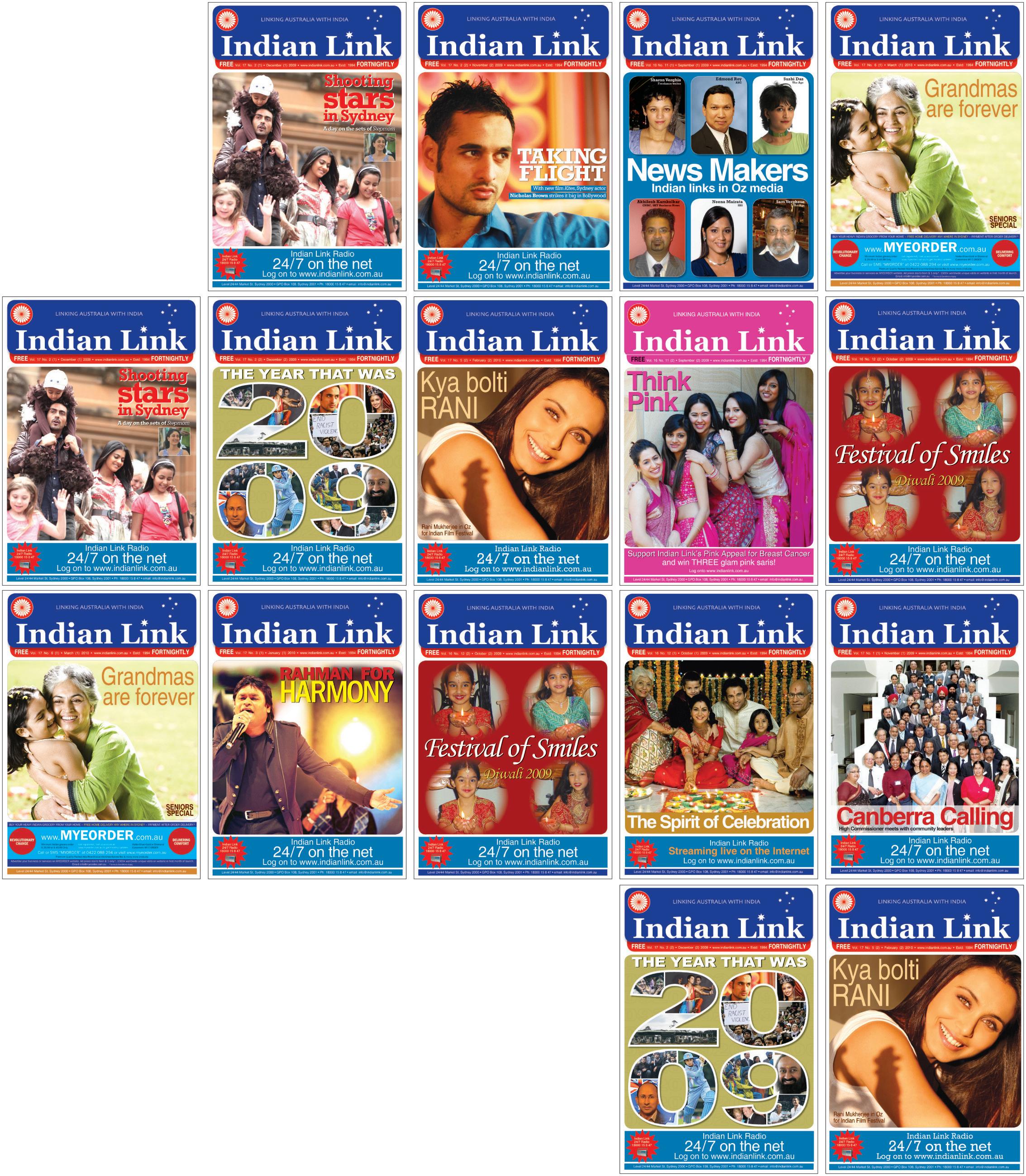

NATIONAL EDITION Sydney, Canberra Melbourne For details call 18000 15 8 47 One paper FIVE EDITIONS
Laugh out loud
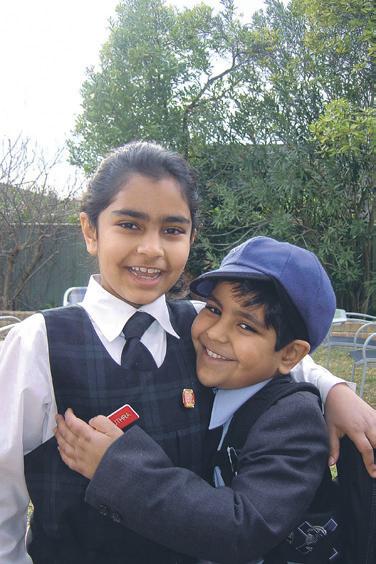
Life Saver
By Julian Moshegov
A goalkeeper was walking along the street one day when he heard screams from a nearby building. He looked up to see smoke billowing from the top and a woman leaning out holding a baby. “Help! Help!” screamed the woman, “I need someone to catch my baby!”
A crowd of onlookers had gathered, but none was confident about catching a baby dropped from such a great height. Then the goalkeeper stepped forward. “I’m a professional goalkeeper,” he called to the woman. “I’m renowned for my safe hands. Drop the baby and I will catch it. For me, it will be just like catching a ball.”
The woman agreed. “Ok, then. When I drop my baby, treat it as if you were catching a ball.” On a count of three, the woman dropped the baby. Everyone held their breath as the goalkeeper lined himself up to catch it. There was a huge sigh of relief, followed by wild cheering as the goalkeeper caught the baby safely in his arms. Then he bounced it twice on the ground and kicked it 50 yards down the street.
Famous football quotes
Some people think football is a matter of life and death. I assure you, it’s much more serious than that.
Bill Shankly, Scottish football player
The rules of soccer are very simple. Basically it is this: if it moves, kick it. If it doesn’t move, kick it until it does.
Phil Woosnam, Welsh football player
Did you know...
The first FIFA World Cup was held in 1930.
The FIFA World Cup Trophy is made of real gold and weighs 6.2 kgs. It was made in 1970 by an Italian designer. Winners have to return it at every tournament, but they get a gold-plated replica to keep.

Before 1970, there used to be another
foto corner
trophy, but it was stolen. It has never been found – it is believed the thieves melted it down for its gold.
FIFA also organises the FIFA Futsal World Championship and the FIFA Beach Soccer World Cup.
The average age of the FIFA 2010 players is 27 years.
I learnt a new word
Clean Sheet: When a goalkeeper doesn’t concede a single goal Manan
Dead Ball: When the ball is ‘dead’ it is temporarily not playable, and neither team may attempt to advance it and or take possession. Devna











Vuvuzela
The goalkeeper is the jewel in the crown and getting at him should be almost impossible. It’s the biggest sin in football to make him do any work.
George Graham, Scottish football player

Whoever invented football should be worshipped as a God.






Hugo Sanchez, Mexican soccer player and coach
The “vuvuzela” is a South African instrument with roots in traditional music. It means “vuvu-ing”, or, making the “vuvu” noise. It could also be related to the word “shower” because it showers the spectators with noise, or maybe simply because it looks like a showerhead

56 <> JUNE (2) 2010 INDIAN LINK
ML
DL www.indianlink.com.au KIDS




NATIONAL EDITION






58 <> JUNE (2) 2010 INDIAN LINK ‘You name it, we have it’ Your one-stop spice shop Himalaya Spice Centre 1 Station St, Thornleigh, NSW, 9481 8200 Shop 3 96-98 Wigram St, Harris Park, NSW 9893 8691 1/1 Pound Road, Hornsby, 2077 9477 2500 SHIVA SHAKTHI ASTROLOGY CENTRE Famous Indian Pandit: Venkatesh Swamyji From India to solve all your problems Believing is first Step of life SwamiJi is Expert in Readings of Palm, Face, Horoscope and Thumb Impression (specialist) and know your Past, Present & Future. Are you suffering from any kind of Problems like Love, Marriage, Relationship, Health, Business, Job, Career, Divorce, Education and any other problem? SPECIALIST IN REMOVING MAGIC AND GIVING PROTECTIONS Swamiji will perform Poojas for many Problems Privacy & Confidentiality Povided CALL FOR AN APPOINTMENT M: 0435 930 985 INSIDE THE SHOP -WINMANI CONVENIENCE STORE, 136 MERRYLANDS ROAD, MERRYLANDS NSW 2160
Teatime treats
There’s a chill in the air, the sky’s getting darker with stormy thunderclouds and it’s nearly time for afternoon tea. What better time to indulge in a lovely, refreshing cup of chai and some goodies guaranteed to drive away the chill and leave you with a wonderful warmth.
Masala Chai
4 whole cloves
2 cardamom pods
1 medium cinnamon stick, broken into pieces
3 cups water
1/4 inch fresh ginger
1/8 tsp freshly ground black pepper
2 cups milk
2 tablespoon sugar
2 tablespoons strong tea
Add spices, water, ginger and pepper and bring to a boil. Next, simmer on low for 5 minutes to release the flavours. Add milk and sugar to the pan and bring to a boil again. Finally, add tea and bring to a boil again. Turn off and strain it into a warmed teapot or directly into teacups. Serve piping hot.
Coriander Chutney Sandwiches
1 bunch fresh coriander
1 cup freshly grated coconut
1 green chilli (optional)
1 tsp ginger/garlic paste
Pinch chana dal, jeera, coriander seeds
Salt to taste
Finely chop the fresh coriander and keep aside. Soak the chana dal, jeera and coriander seeds for 10 minutes, then drain. Grind together coriander, grated coconut, chilli, ginger/garlic paste for 20 seconds until well blended. Add drained chana dal, jeera, coriander seeds, salt and grind again to form a thick paste. Add a little water, if necessary to get the right consistency. The mixture should be thick and easily spreadable. Mix a portion with a little butter or margarine to make delicious sandwiches.
Cucumber Mint Sandwiches
Fresh mint leaves, chopped fine
Butter, softened
Cream cheese
Whole-wheat bread
Seedless cucumber, cut into thin slices
Salt to taste
(Quantities depend on number of sandwiches to be made)
In a small bowl combine the mint, butter and cream cheese and stir till combined. Spread the bread slices with the butter mixture. Top with the cucumber, distributing the cucumber evenly and seasoning it with salt, and top the cucumber with the remaining bread slices. Cut off and discard the crusts and cut each sandwich diagonally into quarters.
Nankhatai Biscuits
1 ½ cup melted ghee
1 cup powdered sugar
3 cups maida (refined wheat flour)
1 tsp soda bicarb
1 tsp fresh lemon juice
Few drops of vanilla essence
2 tbsp candied cherries, cut into small pieces (optional)
Salt to taste
Mix the melted ghee, powdered sugar and salt to light, buttery consistency. Add the maida, mix well and leave overnight for 6-8 hours. Add the soda bicarb and lemon juice to the dough and knead well to a light consistency. Add vanilla essence for flavour and knead again.
Divide the dough into small, slightly flattened round balls, adding a small bit of candied cherry on the top centre. Place in greased tray and bake in the oven for 20 minutes at 180º (fan forced). Cool and serve, or store in an airtight container.
1 kg chana dal
3 ¾ litres milk
750 gms castor sugar
250-300 gms ghee
125 gms khaskhas
125 gms fresh grated coconut
100 gms sultanas or raisins
125 gms phool makhane (optional)
100 gms melon seeds (optional)
100 gms each cashewnuts, almonds and/or any other nuts, chopped.
Wash dal well and soak overnight in about 1 ¼ litres of milk. Grind to a coarse paste.
Put the remaining milk in a heavybottomed pan and add khaskhas and coconut. Bring to a boil and then keep stirring on low heat till
Suji Halwa

1 cup suji (semolina)
1 cup sugar
2 1/2 cup water
2 teaspoons ghee
1 tbsp reduced fat butter or canola oil
1/3 cup coarsely grated almonds and full raisins
2-3 cardamom pods, coarsely powdered
Salt to taste
Add sugar to water and mix well. Keep aside. Mix the suji, ghee, salt to taste and roast on a kadhai for three minutes. Add oil/butter and fry on medium heat, till the suji turns light brown. Next, add the cardamom powder, raisins, grated almonds and slowly add the water-sugar solution, constantly stirring with the spoon. Allow the water to evaporate, which should take about 5-7 minutes. Garnish with a
the milk is completely reduced; cook till mixture is slightly browned. Remove from pan.
Add in the ghee and the ground dal and cook till the raw smell disappears and the dal begins to come together like a halwa. Add the khaskhas-coconut mixture and sugar and cook till well-combined. Add in the nuts and raisins and mix well.
Cool till easy to handle. Then grease your palms and roll small handfuls of mixture into balls. Lay out single file to cool fully and harden. Store in an airtight container.
Pinni is a winter favourite in Punjab, rich in warmth-producing ingredients.

few grated almond pieces. Remove from stove and allow to thicken. Can be served warm or cooled and cut into slices.
Peas and Corn Cutlets
1 cup peas
1 cup corn kernels
6 spring onions, thinly sliced
2/3 cup fine polenta
2/3 cup self-raising flour
1 ½ tsp coriander powder
2 eggs
½ cup plain yoghurt
Oil for frying
Salt and pepper to taste.
Mix together peas, corn, spring onions, polenta, salt and pepper. Add sifted flour and coriander powder.
Mix yolks from both eggs in ½ cup yoghurt and add to peas and corn mixture. Beat egg whites well. Fold one-third into peas and corn mixture and mix well. Gently fold in remaining egg whites.
Heat oil in a frying pan (pour to about 1 cm depth). Over medium heat, spoon small quantities of mixture into oil and flatten slightly. Cook for 3-4 minutes on each side or until golden and cooked through. Drain on absorbent paper.
Suji Muthia
For muthia:
1 cup semolina
¼ cup chickpea flour (besan)
1 cup grated ghia
2 tsp grated ginger
1 tsp crushed garlic
Green chillies to taste, finely chopped
½ tsp turmeric
Finely chopped coriander leaves
Salt to taste
1 tbsp vegetable oil, or if you prefer, ghee
½ cup yogurt, whisked.
For seasoning:
1 tbsp oil
1-2 tsp black mustard seeds
1 –2 tsp white sesame seeds
1 sprig curry leaves
Juice of one lemon
Coriander leaves and shredded coconut for garnish.
Mix all ingredients for muthia into a dough. Take fistfuls of dough and arrange into sausage shapes. Steam in microwave steamer (four minutes for four pieces, covered, on high, works well). When cool, cut each sausage into five or six pieces.
Heat oil and add curry leaves, mustard seeds and sesame seeds. Pour onto prepared muthias, add lemon juice and mix well by tossing. Decorate with coriander leaves and shredded coconut.
Serve on a platter with coriander-mint chutney. Great as an entre or at afternoon tea.
2 cups vermicelli
Juice of 1 large lemon, adjust 3-4 tbsps roasted peanuts
Salt to taste
For tempering:
1 tbsp oil
1 tsp mustard seeds
1/2 tbsp urad dal
1 tbsp channa dal
2 dry red chillies, torn
1/4 tsp asafoetida
1/2 tsp grated ginger
2 green chillies, slit
1/4 tsp turmeric powder
8-10 curry leaves
Bring 5 cups of salted water to a boil. Add the vermicelli and cook for just under 4 minutes. Turn off heat and strain. Pour cold water over and then strain again. Add 2 tsps of oil and combine.

To temper, heat oil in a pan and add the mustard seeds. As they begin to splutter, add the dals and allow them to turn slightly red; add curry leaves, green chillies, grated ginger, red chillies and stir fry briefly. Add asafoetida and turmeric powder, roasted peanuts and combine. Turn off heat. Add salt to taste and lemon juice and mix well.
Dixit, Rajni Anand Luthra
JUNE (2) 2010 <> 59 NATIONAL EDITION
Seviyan Upma
Sheryl
FOOD www.indianlink.com.au
Chana Dal Pinni
Fabulous at forty
There is no doubt that looking after your skin from a young age delays lines and wrinkles. Moisturising your skin regularly and of course, not stepping out without effective sun protection helps. However, there are some women who go totally wrong with their make up and instead of looking younger, they end up with the opposite effect. So what is needed to conceal those telltale signs of ageing?
Shimmery
For your eyes only
To look younger and give a lift to sagging eyelids, you must wear mascara. This helps in brightening the eyes and enhances them. Eyeliner can also help to achieve this result. Wearing kajal, or brown and black eye pencil along with mascara can give your face a bright and alert look. Nowadays you get several mascaras that help make eyelashes look longer.
Get colour smart
Don’t lay it on so thick!
Wearing foundation is the most common and easy way to hide wrinkles, especially crow’s feet and lines around the mouth. But some think wearing it really thick reduces the visibility of these lines. It won’t. When you wear too much foundation, it cakes up and makes the lines more visible. So ideally, add a drop of water to your liquid foundation so it thins a bit or if you are using a foundation stick, spread it in the form of tiny dots on your face and blend it in. Wearing a moisturiser before applying foundation also helps.
Stay away from the glitter…
Your age is first revealed in the area around the eyes. Be very careful while choosing eye make up. I know someone who cakes on glittery eye shadow and you can count the wrinkles on her eyelids. Shimmery eye shadow should be avoided as it can draw attention to the lines on your eyelids, and can make you look older. Choose matt colours or if you must use the ones with glitter, go for soft shades and draw a line over your lid instead of covering the entire eyelids with them.
Wearing kajal, or brown and black eye pencil along with mascara can give your face a bright and alert look

When you wear make up avoid going OTT, so you don’t end up looking like a Christmas tree. Some women wear a lot of blush and then slap on the mascara and lipstick till they look overdressed, no matter what. You must pick and choose your make up and the feature you want to highlight. To highlight your eyes, go easy on the lip colour. If your blush is bright, wear nude lipstick and brown eyeliner. The trick to remember is that if either your eye shadow or lipstick or blush is bright, keep the other two toned down. And if you are in doubt, play safe with nude lipstick and just mascara on the eyes with a shade of blush as close to your complexion as possible.
Watch those lips
As we age, our lips tend to get thinner and our skin tends to dry. So when moisturising your face, be sure to apply some on your lips as well. While botox for plumper lips may not be a solution for everyone, you can use make up to make your lips look fuller. Avoid lip liners and lipsticks in dark browns, purples and deep maroon. If you are dark skinned and light frosted colours don’t suit you, wear dark lipstick but blot with a tissue after applying and coat with a slightly shimmery or clear lip gloss. Again, when in doubt, nude shades of lipstick are the safest so ensure you always have this shade on your make up table.
Promoter Needed
A fast growing telecommunication company needs promoters to market and promote the products. Required good communication skills and can speak multiple languages. Attractive hourly rate plus rewarding commission.
Please contact Anthony on 0401 888 683 or email to anthony.huang@telpacific.com.au

60 <> JUNE (2) 2010 INDIAN LINK BEAUTY www.indianlink.com.au
As we get older, lines and wrinkles are inevitable, but there is no reason why you can’t minimise them with the right make up, says PRIYA NAIR
eye shadow should be avoided as it can draw attention to the lines on your eyelids, and can make you look older

JUNE (2) 2010 <> 61 NATIONAL EDITION
The Showman personified
Raj Kapoor’s social conscience came to the fore through his movies which highlighted the plight of the poor and destitute, writes
MALLI IYER
Raj Kapoor was popularly known as the “Charlie Chaplin of India”, a well deserved accolade for one of the greats of Indian cinema. This versatile actor stood head and shoulders above all his contemporaries, and was an exemplary part of a filmy dynasty headed by the legendary Prithiviraj Kapoor. Following his own career and that of his brothers Shammi and Shashi, the next generation came up with Randhir, Rishi and Rajiv, and the fourth generation with its glamorous successors in Karishma, Kareena and Ranbir are wowing audiences today.
(Raj) could easily identify himself with the scum of society like petty thieves, pickpockets, jailbirds, strugglers and the homeles

Raj Kapoor was born in 1924, in a Pathan family at Lyallpur (near Peshawar). He must have had films in his genes as he began acting at the young age of 11 and by the time he turned 23, he had a major role opposite Madhubala in Kidar Sharma’s Neel Kamal. Tragically, Raj died of severe complications caused by asthma at the comparatively young age of 63. At the time of his death, he was a producer, director, editor, script writer and was adept at camera work. His collection of awards, nominations and titles conferred upon him would be the envy of the film industry’s top artistes. He received 16 Filmfare awards; his films Awara (1951) and Boot Polish (1954) were nominated for the Palme D’or at the Cannes Film Festival; he was awarded the Padma Bhushan in 1971, and received the Dadasaheb Phalke Award in 1987. Raj Kapoor achieved an international stature at the peak of his career as he was honoured and acclaimed in the Middle East, Soviet Union and all over South East Asia. One of the youngest entrepreneurs in the industry, he launched RK Films at the age of 24 and later, RK Studios. Raj conceptualised many of his films to convey one or more social messages – either ills within society, traditions like widow remarriage that should be jettisoned, or social taboos like dowry, exploitation of children, among others.
A champion of the poor Raj Kapoor’s tramp-like personality was likened to Charlie Chaplin, but using his films like Boot Polish, Awara and Mera Naam Joker as the medium, he bemoaned the lot of the ‘have-nots’ in Indian society. He even dared to dream of a Utopian future for the poorest children on the streets of Bombay in Boot Polish. The song Nanhe munne bacchhey teri mutthi mein kya hai sung by street urchins typified his dream. He could
easily identify himself with the scum of society like petty thieves, pickpockets, jailbirds, strugglers and the homeless. In Awara he even compared his own likeness of living with that of a dog. In Shree 420 his famous song Joota hai Japani, yeh patloon inglisthani, sar pe laal topi Roosi, phir bhi dil hai Hindustani portrayed his love of the simple things in life in a socialistic Nehruvian plan for India.
Raj often saw the women and the poor of India as victims of a social system where inequality of wealth and day-to-day comforts were more the norm than the exception, as well as a historical fact. He was a rebel who was a pacifist at heart, and believed that love would conquer the problems of the world more than use of force or violence. His film Jis Desh Mein Ganga Behti Hai reinforces this view. His film Mera Naam Joker was almost autobiographical and took six long years in constructing the character that he played himself.
A visionary and a true romantic Raj Kapoor was a romantic to the core as can be gauged from his well-publicised affair with Nargis. That he admired his chosen women was no secret. Nargis was his inspiration in several films and he made Aag, Barsaat, Awara and Shree 420, the last being during the peak of his romantic relationship. He chose his heroines not because of their acting prowess or their reputation, but how eminently suited they were to the roles – such as Vyjayantimala in Sangam, Zeenat Aman in Satyam Shivam Sundaram, Dimple Kapadia in Bobby and Mandakini in Ram Teri Ganga Maili
Raj was not averse to exposing the female anatomy to create a tasteful appreciation of the character and situation, but not necessarily to titillate the baser instincts of the audience, regardless of whether it was Zeenat Aman’s mini-saree and transparent blouse, Dimple Kapadia’s repeated bikini clad appearances or the scene of Mandakini breastfeeding her infant. In any case, the film censorship regime saw itself as a moral custodian of the people, and prevented any excesses. Almost all his heroines were wronged, oppressed or neglected by misdemeanours of their lovers, partners or family. Perhaps it was Raj’s way of bringing to light the inherent strengths in women, not recognized in the Indian milieu during his lifetime.
Loyalty to his convictions
Raj stuck by his friends and was utterly loyal throughout his life to associates like lyricists Hasrat Jaipuri and Shailendra, his playback voices Mukesh and Manna Dey and his music directors Shanker and Jaikishen. He was an ardent admirer of Lata Mangeshkar’s music and openly admitted it. He did 16 films with Nargis, but had starred opposite almost all the leading ladies of 1960s, ‘70s and ‘80s like Padmini, Mala Sinha, Waheeda Rahman, Hema Malini, Simi Garewal and Padmini Kolhapure.

Raj was a worshipper of Lord Ganesha and each year during the Ganapati festival, RK Studios and their crew had a giant sized Ganesha in the procession – a tradition that is carried on by his family till today. As some of his film titles like Jis Desh Mein Ganga Behti Hai, Ram Teri Ganga Maili and Satyam Shivam Sundaram suggest, he was a patriotic socialist at heart and never missed an opportunity to uplift the downtrodden in society through his films.
Indian cinema has good reason to be proud of Raj Kapoor’s incredible contribution to the industry, which also gave Bollywood an international persona at a time when films from the subcontinent were practically unknown globally.
62 <> JUNE (2) 2010 INDIAN LINK
STARGAZING www.indianlink.com.au
SALE
30 Main road location Well equipted Kitchen With coolroom Air conditioned/Parking Busy Suburb/ Northern Beaches Open 7 nights and 5 days Takeaway/Dine in & Home Deliveries Low rent Call 0425285595 for more details
INDIAN RESTURANT FOR
Seats


JUNE (2) 2010 <> 63 NATIONAL EDITION 11A, 7 HOYLE AV, CASTLE HILL 2154 www.ezyworldtravel.com INDIA FROM $1095* INCLUDING TAXES *Conditions apply subject to availibility at the time of booking. ''CALL US NOW ''SPECIAL STUDENTS FARE''
BUZZThe
My wife, my hero
So the much-awaited Raavan is finally out and it hasn’t exactly shaken the establishment like they had predicted it would. Although its three versions (Hindi, Tamil and Telugu) grossed Rs.20 crore (around $4.4 million) worldwide on its opening day, the huge hype created about it was all unnecessary, it appears. Less than three days old, critics had panned Abhishek Bachchan’s performance in it, citing Vikram’s performance in the very same role in the Tamil version as far superior. Amitabh Bachchan credited his son’s poor performance, controversially, to “sad” editing, and a stunt double popped up to say that he, and not Abhishek as claimed before, had done the dangerous stunts in the film. Still, Aish looks stunning as ever, and so do the jungles of Kerala, and the film is most certainly worth a dekho….
Dutt to be a dad again


Bollywood’s buzzing that Sanjay Dutt’s soon to become a dad again, and that he and wife Maanyata are ecstatic about the newest addition to the family. The couple has been celebrating their good fortune, particularly after Sanjay’s wedding was looked on with disfavour by the rest of his family. Said an obviously happy Sanjay, “Maanyata has brought stability to my life after many years of wandering. She gave me roots and brought about a desire in me to settle down after a long time. It really feels nice to eat home-cooked meals made by my wife, not a cook. I can’t wait to become a father again. It is a lovely feeling and Maanyata is very happy.” The 51-year-old actor already has a daughter Trishala, who lives in the US. Good luck, Munnabhai and Maanyata on the imminent arrival of munna or munni!
Manisha’s Nepali nuptials
It was a fairytale wedding Bollywoodstyle, as actress Manisha Koirala tied the knot with Nepali businessman Samrat Dahal in a traditional Nepali ceremony, after an elaborate engagement and mehendi ceremony the day before. The 40-year-old was wedded to the 33-yearold entrepreneur at the picturesque Le Meridien resort in Kathmandu. Although her first hero in Bollywood, Vivek Mushran, flew to Kathmandu to attend the fourday extravaganza, as did Manisha’s friend and director Deepti Naval, there was not much of a Bollywood presence besides Sunita, who stood in proxy for her husband Govinda.
There was also virtually no sign of the Nepali film industry that has impassively accepted her return almost after two decades. Manisha returned to the Nepali film industry a few months ago, playing wife
to its superstar Rajesh Hamal. However, the reception was attended by Nepal’s bigwigs, including political heavyweights and a few more colleagues from Bollywood. The newly-weds will also throw a separate bash for tinsel town stars in Mumbai, where Manisha will continue to
keep a foothold. Her plans for Nepal had included opening a film city in Kathmandu and persuading Bollywood to shoot more of its films in Nepal. Hubby Samrat Dahal hails from a non-filmi business family and has suddenly found himself in the limlight, thanks to Manisha’s Bollywood career
GUESS WHO
This US-trained actor became a well-known name in the comedy circuit in India and has now entered the film industry, with a strong presence in a recent Shahid Kapoor film
64 <> JUNE (2) 2010 INDIAN LINK
? ENTERTAINMENT
ABHILASHA SENGUPTA
(Find the answer under Caption Contest)
as well as family background. She is the granddaughter of B.P. Koirala, Nepal’s first elected prime minister and her family boasts of three prime ministers, two deputy prime ministers and two MPs. Her father Prakash Koirala was a minister in king Gyanendra’s cabinet in 2005.
The couple will reportedly move out of Dahal’s family home in Kathmandu for a pied-a-terre of their own. Good luck to the couple and their plans for the future.
Being Dad, by SRK
He plays a perfect lover on-screen and off screen he is the best dad, but describing a father’s role, superstar Shah Rukh Khan says dads are usually seen as rule-breakers and risk-takers with their kids.
“Someone rightly said, ‘Any man can be a father, but it takes time to be a dad’. And that someone was just right,” said Shah Rukh who has two children - son Aryan and daughter Suhana.
“Who is dad? He’s the mess-maker, rulebreaker, risk-taker and the opposite of mom who is usually seen as the creator and nurturer. But for all his mischief, dads are doing something quite right,” the actor said in a statement on Father’s Day celebrated in India.
Known as Bollywood’s favourite romantic hero, Shah Rukh donned the role of a modern, loving dad in movies like Kuch Kuch Hota Hai and Kabhi Khushi Kabhie Gham
“Father’s Day is our day, to celebrate ‘being dad’. This day gives us the opportunity to show and express our love and care. It’s an appropriate platform to look at our children and credit them for bringing joy and happiness. After all, a child gives birth to a father as well. But even though it’s celebrated once a year, it’s the ever after effect of being a father that will keep us connected,” asserted King Khan.
The famous SRK sensitivity comes to the fore once again. Well done, Shah Rukh, your kids are lucky indeed!
Sonu’s stunned!
Popular singer Sonu Niigaam is flabbergasted by the criticism he has received from his fans and the media for sporting two ponytails and an unkempt look. He says people should rather concentrate on his singing than his looks. “One day you all will know that whatever I do with my hair, is to wake up people from a slumber. You guys pay too much attention to swim suits, fashion, hairstyles, exterior stuff, etc,” Nigaam posted on micro-blogging site Twitter.
The singer was the unwelcome recipient of negative comments after he was seen sporting a French beard and two ponytails at a recent event in Mumbai. The singing sensation couldn’t resist a dig at his detractors posting, “I know, they (media) will never write good about me, even if I’m looking good. Would they? Have you seen any article praising my earlier hairstyle? Nothing against media, I respect their and some of your (fans) opinions, but do you ever talk about mediocre, or bad singing or music the way you highlight hair-dos?”
Niigam, who has lent vocals to some of the Bollywood’s best known songs like Panchhi Nadiyaan, Tanhaayee and title tracks of Saathiya and Kal Ho Naa Ho, says the media must write about better aspects related to music.

The 36-year-old also claims that people in India have a preconceived notion that styling is not for singers and stressed how excessive and bizarre styling is the thing for singers in the West.

“Hairstyles and fashion, is the jaageer (property) of some other fraternity and not singers in this country (India). It takes guts to do the things I have done through
DUTT
the crew, is no less than devastating. Apparently Sonam was initially reluctant to get into the mature mould.
“She had reservations about being bracketed in the mature mould so early in her career. In all her films so far from Saawariya to Thank You, Sonam has played girls her own age and dressed accordingly in what she’s comfortable with.
The western clothes that’d transform her into a chic Delhi socialite in Aisha are as much a part of her personality as the salwarkameez that she wore in Delhi 6,” revealed a source close to the actress. Apparently Anamika, who has worked earlier with Sonam in Delhi 6, has been poring over the designs with Sonam, trying to figure out what clothes she’s most comfortable in.
Shahid Kapoor, who needed to make a sartorial changeover to play the mature mellow lover in the later part of the film, has also been heard joking about how Mausam has turned him and Sonam overnight into adult stars.
Mausam producer Sheetal Talwar said, “Shahid has sported the mature mellow look in Jab We Met. But for Sonam the transformation from girl to woman in Mausam is a challenge. Before she left for Scotland, Sonam wanted to be completely comfortable in her new avatar.”

But there’s no doubt that this young lady will look gorgeous, no matter what age.
my career as a singer. Musicians in other countries get their lips, cheek, eyebrows and private parts pierced and tattooed,” he posted.
Attire to age young Sonam
After playing the giddyheaded starry-eyed young lover-girl in all her films so far, including I Hate Luv Storys, actress Sonam Kapoor will take on a more challenging role in Mausam. The talented actress is all set to play a girl who evolves into a woman in the course of the movie.
Sonam’s clothes, which are always a source of powerful on-screen personalitytransference for her, have been worked on at great lengths by designer Anamika Khanna. And the result, says a member of
Madhubala wannabe Kangana
Kangana Ranaut is set for a brush with the underworld on screen once again after Gangster. She reveals that her character in Once Upon A Time In Mumbai is a cross between don Haji Mastan’s wife Sona and yesteryears beauty Madhubala.
“In real life Haji was a big fan of Madhubalaji and he fell in love with Sona who looked like her. So my character is a cross between the two,” said Kangana in an interview.
“The character I am playing has some similarities with Madhubalaji...like the way she was a superstar and had problems in life...,” she added.
Her character Rehana, Kangana said, “is a very big star...she is the woman who evokes desire in everyone and then she falls in love with this gangster and discovers a new world. My character transforms from a star to a woman.”
Her character might be similar to that of Madhubala, but other yesteryear stars also inspired Kangana’s role. “I observed ‘70s actresses like Zeenat Aman and Parveen Babi... they were the rebels who wore bikinis and were style icons. My character is somehow like them,” said Kangana.
Set primarily in the 1970s Mumbai, the film by Milan Luthria will trace the changing face of the underworld through the eyes of a police officer. The story follows the rise of Sultan (Ajay Devgan), and his eventual fall when his protege Shoaib (Emraan Hashmi) challenges his supremacy and usurps power to rule the underworld in the city.
Kangana, who claims that she doesn’t care what people think of her, also admits that being a Bollywood diva isn’t really here cup of tea. “I really don’t care what people think of me and how they perceive me. That is okay with me because I don’t make an extra effort to be friendly to people. I do things I like doing,” said a candid Kangana. “I’m a very moody person. There are times when I want to talk about my life whereas there are days I just want to be left alone,” she added.
Seems like Rehana will be a clutch of characters for Kangana….

What’s Amitabh saying here?
Send in your responses to info@indianlink.com.au and win a surprise prize
Last issue Caption Contest winning entry
What’s Hrithik whispering to Barbara here?
Hrithik: So the movie was a flop and my marriage nearly went bust, but it was all worth it, wasn’t it, Barbara?


Barbara: You might think so, Hick-Tick, but I’m out of here… Sunny Mahadevan Kidman Park, Adelaide
Sunny wins a free ticket to new Hindi film Raavan
JUNE (2) 2010 <> 65 NATIONAL EDITION
www.indianlink.com.au
SONAM KAPOOR
GUESS WHO Vir:ANSWER Das
SANJAY
CAPTION CONTEST
MANISHA KOIRALA
SONU NIIGAAM
Cine Talk
A feast for the senses
Film: Raavan
Director: Mani Ratnam
Cast: Aishwarya Rai Bachchan, Abhishek Bachchan, Vikram


A wounded bird snarls viciously on the dry branches of a tree. A cold-blooded vulture looks leery-eyed at his prey.
A film by Mani Ratnam is an experience of a lifetime. By jove, Mani knows how to tell a story! In Raavan he transports us into a forest of untamed sights, sounds and emotions that tumble out, creating a spiral of vibrant, sensuous images.
Raavan is a feast for the senses. Not much more needs to be said about Mani’s images. They flow out of Santosh Sivan and Manikandan’s cameras with the urgency of a symphony written on the night before apocalypse.
The image of Aishwarya Rai Bachchan plunging from the heights into a waterfall and getting trapped in a dry tree remains the one visual that surpasses all other recent celluloid mise en scene suggesting a link between nature and vulnerability.
No actress but Aishwarya could have played the beauteous and virtuous modern-day Sita who’s kidnapped by a Maoist ‘Raavan’ and taken through 14-day experience echoing Lord Rama’s 14-year exile.
But the mythological references get lost on some of the characters, specially Vikram. And the background music and songs by A.R. Rahman, barring the haunting Behne de, leave no impression. Aishwarya gets a firm grip on her pristine neo-Sita’s ordeal by fire in the most trying of circumstances. At times
her scale of emoting goes a little too high. But she’s a perfect portrait of a trapped bird flapping her wings against the cage.
The superbly styled though at times overly accentuated screenplay is crammed with ironic references to mythology and history.
Think Ramayan. Think Sita. Think....Hanuman! Govinda puts in a delightful cameo as a forest ranger up to his monkey tricks as he transports Inspector Dev (Vikram) through the forest terrain in search of his kidnapped wife.
A lot of the drama unfolds in the region of the cryptic. We never come close to cracking the jungle creature Beera’s mind. Partly a Maoist, partly an outlaw and outwardly a Robin Hood, Abhishek Bachchan plays the character with much relish, trying to find a centre to a character that defies gravity. But the glint in the eye and that artless grin cannot be missed. They give the character away.
You know this seemingly ruthless guy will fall so hard in love with his mesmerizing hostage that it will destroy him. Yup, this Sita will be the death of Raavan.
By the time the two develop a fatal attraction, the narrative loses grip over the unlikely lovers. In the last half-hour Sita and Raavan are on their own.
How you wish Mani would have given the narrative ample breathing space for the Abhishek-Aishwarya relationship to grow naturally in the stunning forests. His narrative style, a synthesis of smothered passions and half-finished emotions, preclude any deeply thought-out plan for the modern-day Sita and Raavan.
So what lies beyond the forbidden passion between Hindu mythology’s most enigmatic villain and most
pristine heroine? Parts of the narrative are uneven, not being able to create a connection between the principal characters and the politics underlining the film’s mythological underbelly.
It’s an ambitious venture about characters trapped in situations from which they cannot escape. Mani keeps the pace frantic and the action is shot in an ensnaring rush of adrenaline.
Abhishek and Vikram’s preclimactic combat on a wooden bridge is pure hand-to-mouth stuff. The cinematography captures the raindrenched characters and terrain in slippery splendour. Never have we seen the protagonists on screen rough it out so vigorously. Abhishek and Aishwarya play beautifully against one another. When at the end he tells her, “If I had died how would I have met you?”, you know his eyes are telling the truth.
Raavan is a film that constantly seeks out the dark recesses in its characters’ heart. It does fall short in some of its emotional moments. But who said that a film about such fatally flawed people had to be picture-perfect?
The imperfections in the storytelling somehow add to the film’s vital primeval quality.
The forest is shot with a devastating passion. Aishwarya’s beauty reverberates across the jungles’ sights and sounds. Abhishek uses his voice, physicality, eyes and smile to create a twisted world of inescapable doom for his character. Govinda, Ravi Kissan and Nikhil Diwedi also put in credible performances that seem to grasp the workings of Mani’s primeval world in all its glory.
Vikram – alas, he maybe a superstar in the south, but as the modern-day Rama he is a near-disaster.
Subhash K. Jha

66 <> JUNE (2) 2010 INDIAN LINK
www.indianlink.com.au
ENTERTAINMENT

JUNE (2) 2010 <> 67 NATIONAL EDITION
Email blunder
Dear Auntyji
Two months ago, things were really stressful at work, and to let off steam, I sent an email to a colleague which included a sentence about me getting calls from people I found really irritating. Unfortunately, the email got forwarded to everyone, and I got a reprimand from my boss about it. People occasionally tease me about it, but I am completely mortified by it. I am really embarrassed by the episode, and wish that everyone would forget about it. Please tell me how I can get over this humiliation
Auntyji says
Hey, this happened over two months ago. Don’t you have more important issues to think about, rather than selfflagellate over an issue than no one really cares for any more? Each time you find yourself getting upset about this issue, think of one good thing you have done for the company. Then think of another. And another. There is really no point in wasting your time thinking inane thoughts. Don’t worry about it - no small child died because of what you did. If it was a serious matter, you would have gotten fired, so don’t worry about it. It’s over, get on with your life.
Beautiful face, big mouth
Dear Auntyji
A couple of months ago, I saw a drop dead gorgeous girl at a cousin’s
Ask Auntyji
wedding. I couldn’t help myself and I went and spoke to her. I actually asked her out. She declined to go out with me and I don’t care about that - because hey, at least I tried, right. So anyway, the next thing I know, everyone is teasing me about asking Shanya out and what’s more, they all know what I said to her. What really bothers me is that Shanya actually told everyone everything I said. I find that irritating, and sometimes when I see Shanya, I just want to go up to her and give her a piece of my mind. It really irks me that she told everyone. I don’t care about the fact that she doesn’t want to go out with me, particularly as I now have a girlfriend who is just as beautiful as Shanyabut I find her behaviour disturbing. Do you think I should tell her what I think of her?
Auntyji says
Well, I can’t see any signs of your ego being hurt by this episode, especially
Matrimonials
SEEKING BRIDES
Seeking a slim, fair and homely girl with good family values, for my brother, very handsome, 29 years, clean-shaven Sikh boy, Marketing Manager in Dubai. I’m well settled in Sydney for the past 8.5 years. Please email a.kaur@optusnet.com.au
Suitable matches are invited for our 28/180 handsome Punjabi (Manglik) boy. Senior managerial job, internationally recognised qualifications, with well settled family here and in India. Fluent in Hindi, boy loves to cook and plays sport. Please email details with pics, Sydney.Matrimonial@gmail.com
Seeking alliance for a 29-year-old, 5’11”, Gujarati boy. Working as a database analyst in Melbourne. Looking for a well educated, preferably Gujarati girl with family values. Please email modi.nayan@gmail.com or ring 0403 652 602. Bharat Matrimony: G54933
Qualified beautiful Punjabi match from respectable, cultured family for highly educated, 28-year-old, 5’11”, presentable, responsible, family oriented, Punjabi boy, architect, Australian citizen, in Sydney, belonging to high status family in Mumbai. Send bio + pic (must) to sdiwans@gmail.com
Palghat Iyer 32/5’9”, MBA, MS, veg, dual citizen, well settled with permanent IT position in large telecom, with pleasant looks and cheerful personality, seeks bride, 27-30 with similar cultural background. TM ID M607788, horoscope available, email kkrangan@yahoo.com or contact 0418 720 781.
Australian citizen, Jat Sikh boy from Melbourne, 25 years, 5’ 7”,
Whoa, Wuha…
Dear Auntyji
seeing that you have a beautiful girlfriend, but I can quite easily see how upset you would be about this. I too would be most upset, no, I would be livid if something I had told someone in a private conversation started doing the rounds at a dinner party. So here’s what I suggest you do. Shanya needs to learn that what she did was wrong - not the rejecting you bit, but telling Aunty Shallu, Uncle Rikku, Munna mama and Pushpa bua about what you said. So the next time you see her, go up to her and tell her that while you don’t mind that she didn’t go out with you, you find it most disturbing that she went around telling everyone what you had told her in confidence. Tell her that she caused you a lot of embarrassment. Tell her that it was quite impolite what she had done. And stress on the embarrassment part. And don’t talk like a loser, and don’t be awed by her beauty. Just tell her like it is; she really needs to know when to keep her beautiful muh bund
I have a neighbour who has just had a little girl. She has named her Wuha. Now, as an Indian, I understand the beauty of this name; however, when my Australian friends hear about this, they give me a strange look. I found out that usually, in moments of extreme happiness or joy, an Australian has the tendency to holler wooohaaamuch like a cowboy would. Do you reckon I should say something to my friend? Or should I get my other neighbour with no tact to tell her this. I feel sorry for the child when I think about her at school.
Auntyji says
I’m hoping that by the time Wuha starts school, she will be living back in Mangalore where all her friends will think she has a lovely, lilting, mellifluous name which means nothing more than what it originally meant. So, should you poke your nose into Wuha’s business, or leave her to the mercy of little bullies who will torment her mercilessly by running through the playground hollering Woohaa at the top of their little voices? Hmm, this is a tricky question. People’s lack of foresight confounds me to the extreme sometimes. I say leave little Woohaa alone because by the time she goes to school, there’ll be lots of kids with even stranger names. Wuha will seem mild by comparison. But, I do question Wuha’s parents’ sense. I don’t know what they were thinking, and I wish I could make them see the error of their ways, but what the hell, I can’t solve everyone’s problems.
professional full time worker, looking for a career oriented Punjabi Sikh girl with good family values. Respond with photos at melbourneldh@yahoo.com or call 0433 544 251
Match for Arora boy, Oct 74, 5’11”, fair, working with bank in Melbourne. Permanent resident. Elder brother Australian citizen, staying with him. Parents here till Oct. Wife met with tragic accident, lost her memory therefore legally divorced. Caste no bar. Early marriage. Contact Mukesh Pahwa Mob: 0413 175 681 Res: 03 85020656 Email Photo and CV: karneshp@gmail.com.
Australian permanent resident, Sachdeva/ Arora Hindu boy, 5’6”tall, 32 years, born on 30/08/1977, never married, good at heart, caring and loving by nature. Seeking good looking girl for marriage, having good moral values, family oriented, caring, honest and educated girl. Nationality no bar. Email sachdevasunil30@gmail.com
SEEKING GROOMS
Seeking matrimonial alliance from professionally qualified and well settled Malayalee Nair boys, age to 27 years, brought up in Australia or overseas, for a 22-year-old beautiful Nair girl brought up in Sydney, graduate in Animal Science, pursuing further studies. Contact with photo pradeeppillai@ ozemail.com.au or 0410574006.
Seeking clean shaven, teetotaller for Punjabi Prajapati manglik beautiful, slim girl, born July 1981, 5’5”, graduate (p.u.), diploma in fashion designing. Family in Chandigarh, own business. Brother in Sydney, running own business. Girl visited Australia last year. Preferable Australia/New Zealand/around
Chandigarh. Upper caste no bar. Contact: +919417072965, 0422 669 082 rk_sangar@ yahoo.co.in
Seeking clean shaven, professional alliance for our 27-year-old, 157cm, Sikh daughter. She is a finance professional with strong family values. We are settled in Australia for many years. Please send your details and photo to matrimonial275@gmail.com
Seeking a suitable match for Panjabi girl, 28 years (Aust citizen), 5’8”, fair, never married, working in Sydney. Seeking match with progressive and broadminded personality, preferably settled in Sydney, caste no bar. Parents currently live in Brunei. Send details and recent photo at mukeshrandev@ hotmail.com or Tel: 00 673-233 4324 (Res).
Seeking professionally qualified/well-settled match for 39/165, never married, fair, slim, beautiful Punjabi girl, family oriented and responsible. Engineer working in Sydney, Australian citizen. Early marriage. Can relocate. Parents well-settled in India. Caste no bar. Email with photo: sydgirl09@gmail.com
Seeking professional, educated boy for Sood Khatri girl, 81 born, 5’4” M.O.A., working as a manager in Australia. Send biodata with recent photo to soodbrothers@ yahoo.com
Well-settled and professional alliance invited for fair, slim, beautiful and tall Sikh girl, 22/172 cm. Professional lawyer and accountant, working in MNC. Well mannered with modern outlook and traditional values. Family well settled in Australia. Please respond with photo, education and professional details to email: sohnachan@gmail.com
Mobile: 0415 035 802
Seeking match for 28/158cm, fair, beautiful, intelligent, Australian citizen girl, from a respectable Hindu family with good professional job. Boy must be 29-32, professionally qualified, well settled, openminded, non-smoker with strong family values. Please email profile and photo to sydney_girl2010@hotmail.com
Seeking suitable professionally qualified, Hindu, well settled match for an Indian-based Hindu girl, never married, 37 years, 165cms. Family are well settled in Sydney. Please contact Peter on 0400 981 912 or hariom1969@hotmail.com
Punjabi Arora parents invite never married well-settled/professional match for fair, slim, attractive, 37/165, IT professional with strong family values. Never married. Settled in Sydney. Australian citizen. Status family. Caste no bar. Early marriage. Email with photo: ausgirl101@gmail.com
Sister and brother-in-law seek a suitable groom for a lovely 25-year-old Fiji born Hindu girl, independent, fair, lovely girl, Australian citizen professionally qualified, currently working in an Australian company. Family seeks a qualified match from suitable boys 25 to 29 years of age. Please email bio data and recent photographs to arieso@ rediffmail.com
Sister-in-law seeks educated and well-settled boy for Sikh Punjabi girl. She is working as Auditor at KPMG, Australian citizen, Sydney based, 23 years old, 5’ 6” slim and beautiful. Please send details and photo to Ravinder Kaur ravinderkaursydney@gmail.com
68 <> JUNE (2) 2010 INDIAN LINK
BACKCHAT www.indianlink.com.au
A Celebration of Love
by
Sydney’s Award-winning Marriage Celebrant

Behroze Bilimoria
With my Indian background, I relate to all cultural aspects of traditional marriage celebrations and specialise in multicultural ceremonies
My family & I arrived Sydney from India 39 years ago.
With 15 years full time experience as a Marriage Celebrant, I have conducted over 2,000 weddings.
Call me to discuss your requirements and let me help you take the stress out of the legalities.
Fluent in Hindi and Gujarati
Tailor-made full civil ceremony or a Simple Registry-style ceremony
Affordable cost structures
Advice and assistance to new Australians

Visa letters provided to assist with genuine spouse/partner visa applications

Finally, bear in mind that you cannot have a wedding without a celebrant to do the legalities.
For more information.... click onto my Website and step into my World!
www.weddingsbybehroze.com.au
for discerning couples who are looking for a special Celebrant for their Very Special Day
behroze@weddingsbybehroze.com.au Phone: (02) 9440 9053 Mobile: 0409 983 152
JUNE (2) 2010 <> 69 NATIONAL EDITION

70 <> JUNE (2) 2010 INDIAN LINK

JUNE (2) 2010 <> 71 NATIONAL EDITION
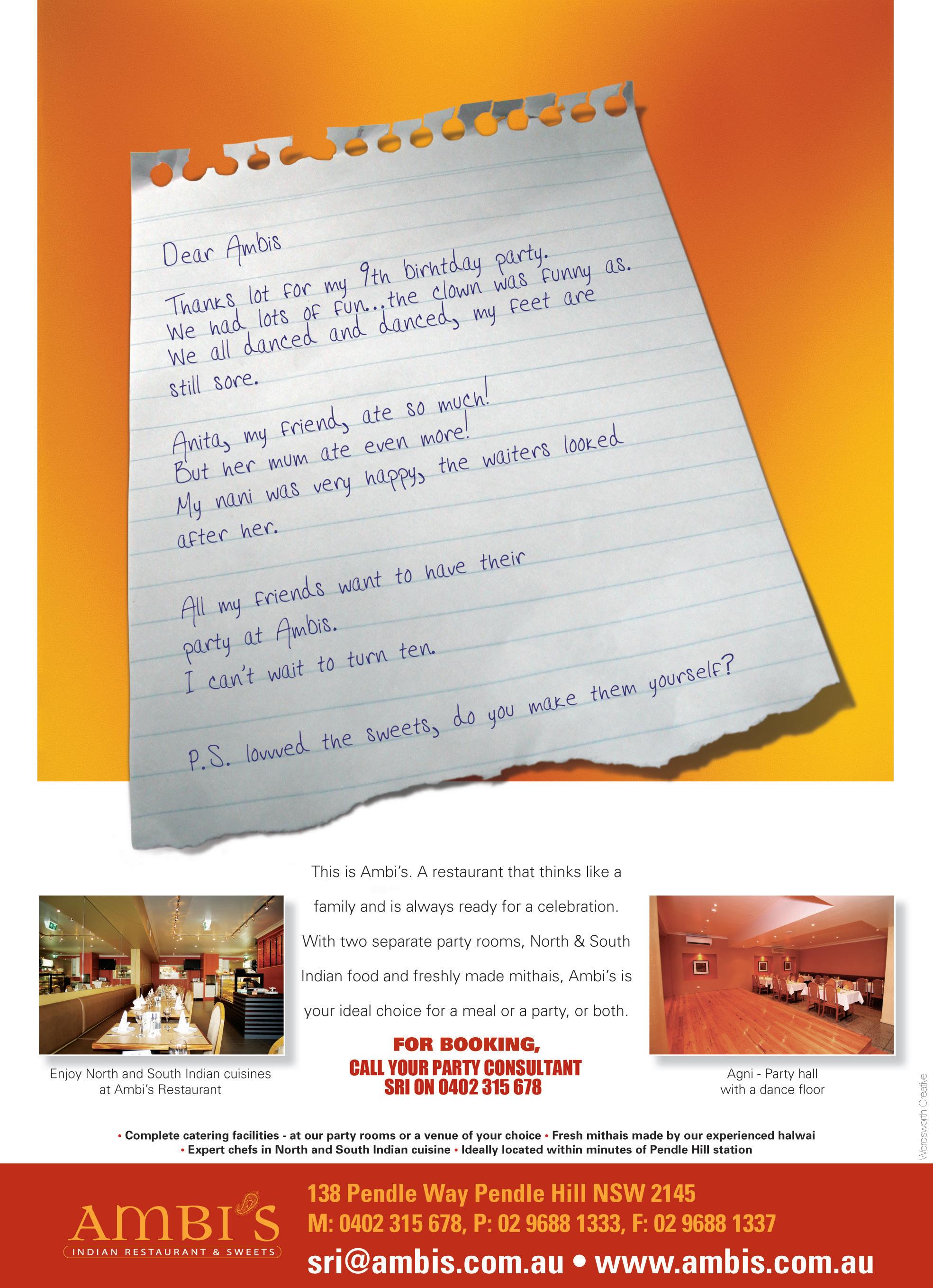
72 <> JUNE (2) 2010 INDIAN LINK







































































 BY NEELAM VASUDEVAN
BY NEELAM VASUDEVAN





















 PRIYANKA RAO and SHERYL DIXIT
PRIYANKA RAO and SHERYL DIXIT












































 PREETI KANNAN reports
PREETI KANNAN reports



































































































































